The Complete Ramayana by Maharishi Valmiki Made With AI
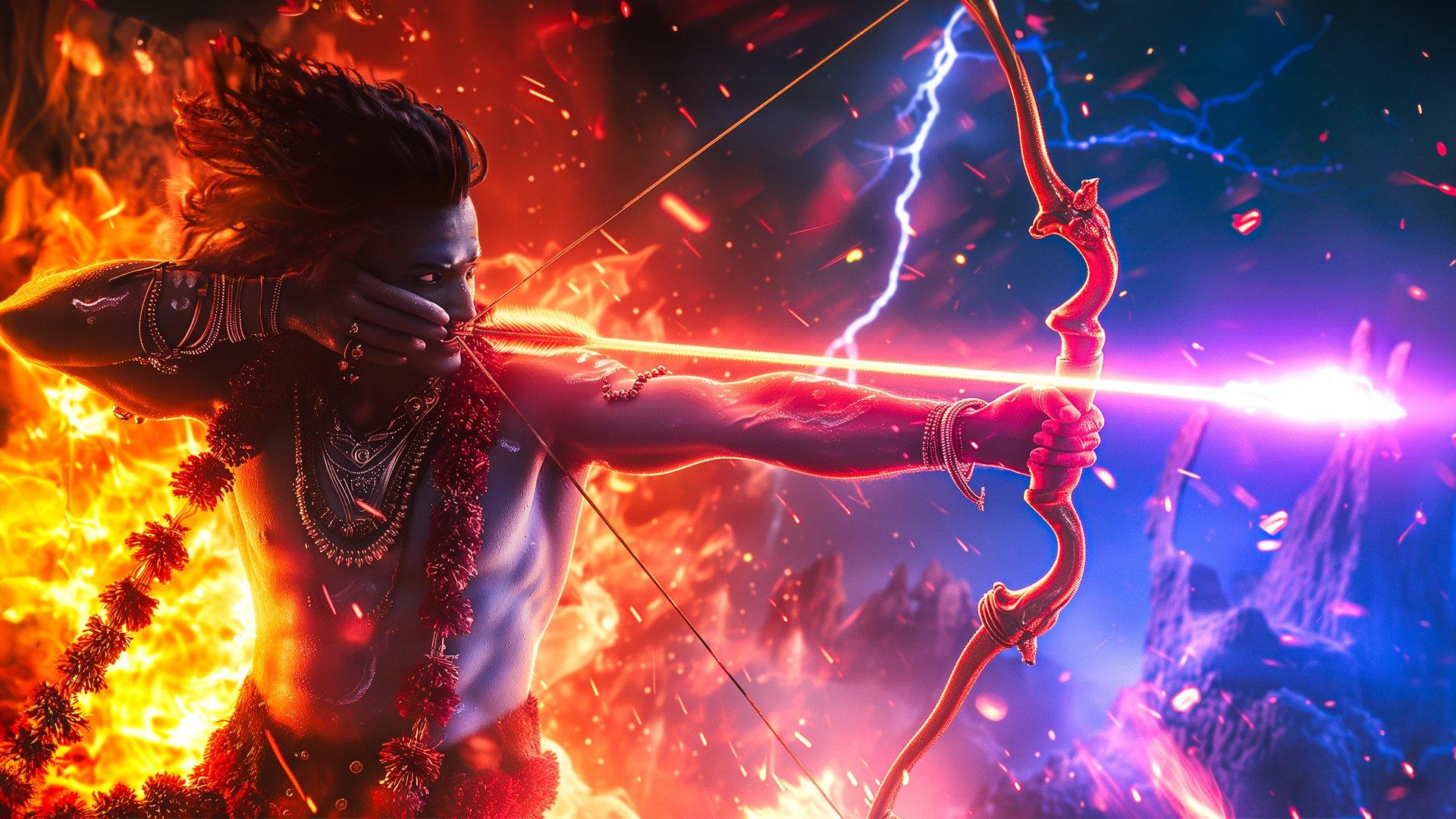
Creator Madhav Kohli, whom you can follow on X @mvdhav.
Ayodhya, capital of the great Kingdom of Kosala, was one of the wealthiest and most advanced civilizations in the world.
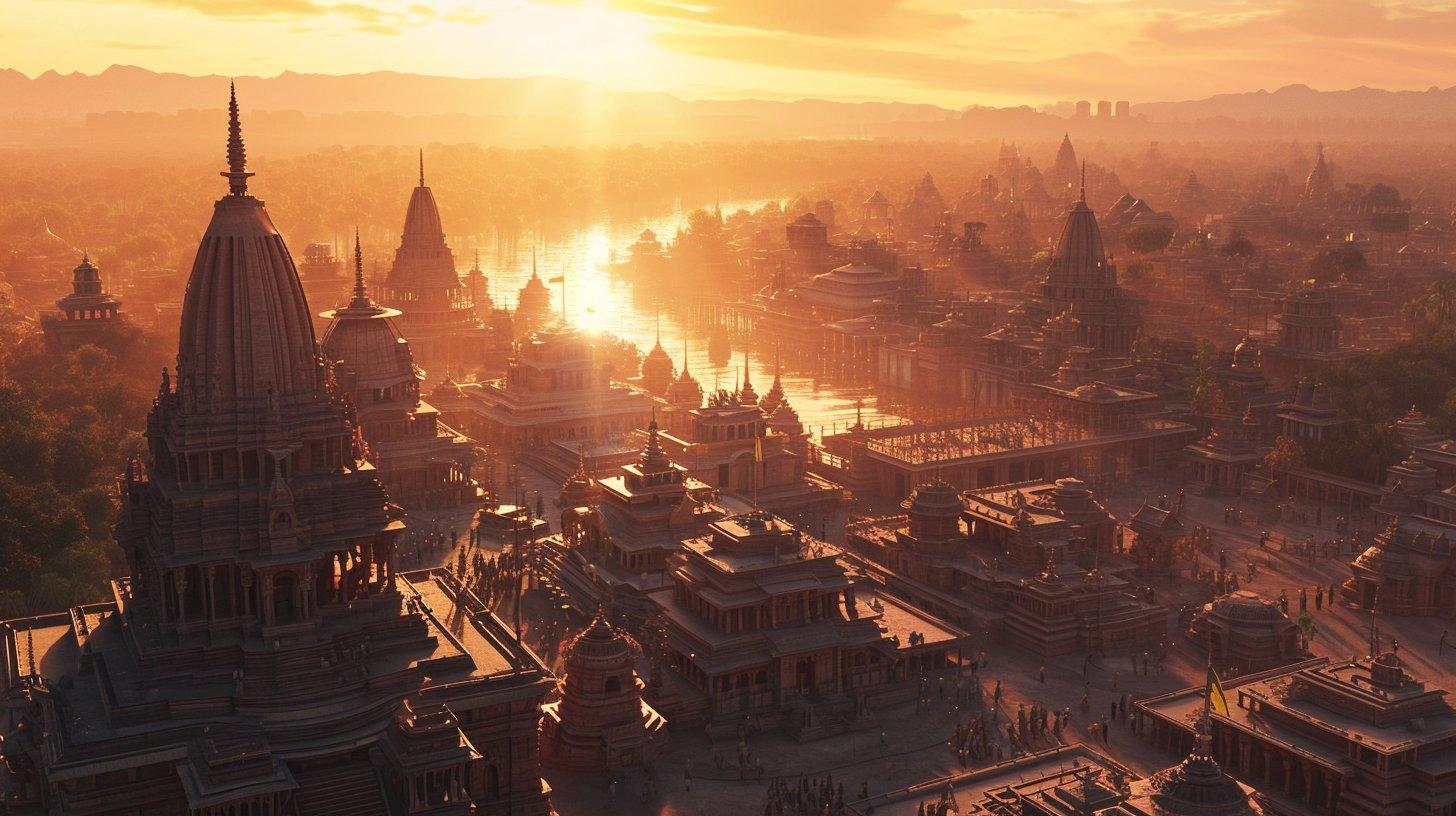
King Dasharatha, ruler of the Kosala Kingdom, had everything to his name, but a son. He ruled the greatest Kingdom in the world. But had to see it exist without an heir.
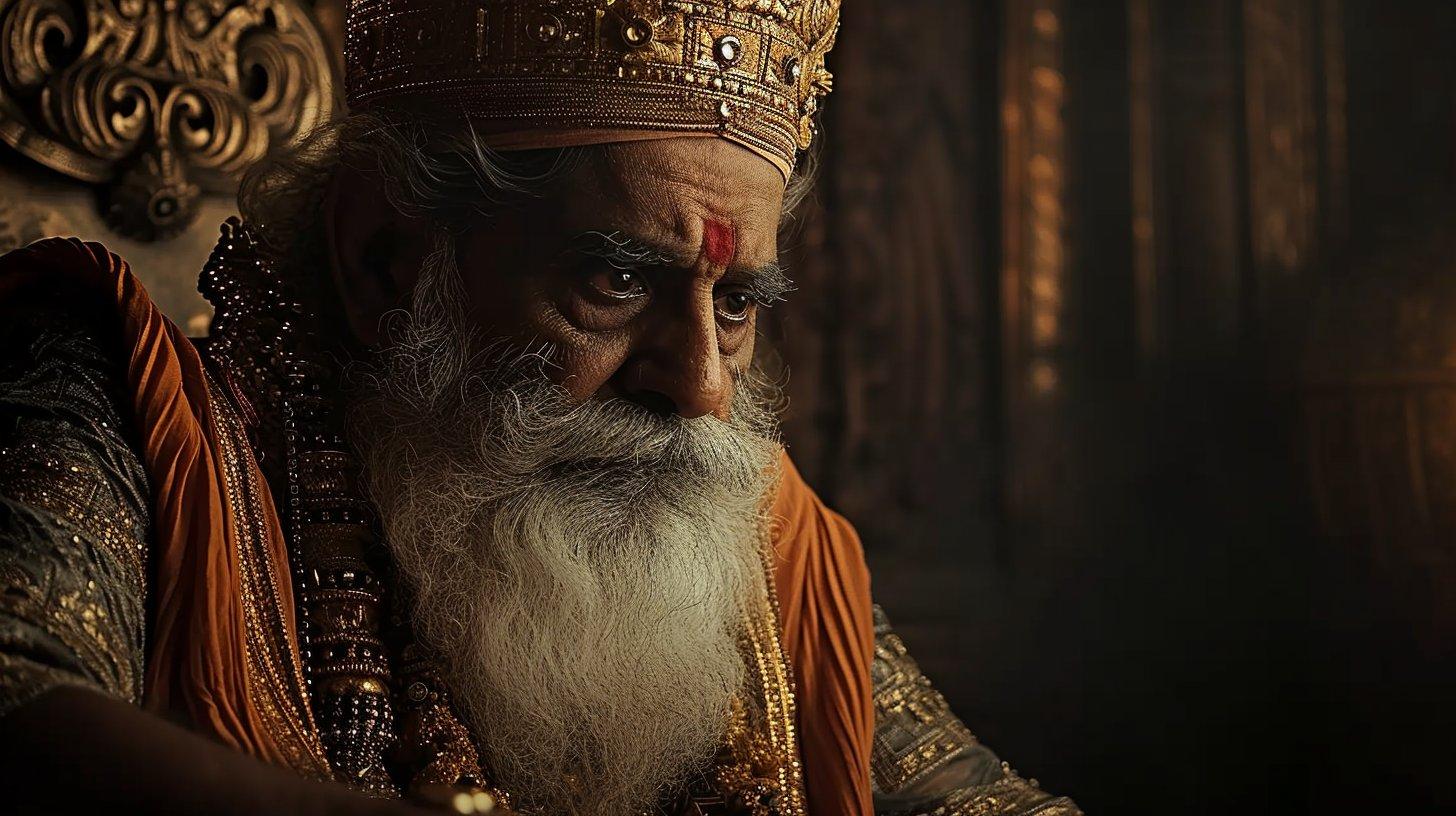
For his desire for a son, and under the guidance of Maharishi Vasishtha (and lord Vishnu himself,) he performed the Putrakameshti - to ask the gods for an heir to his kingdom.
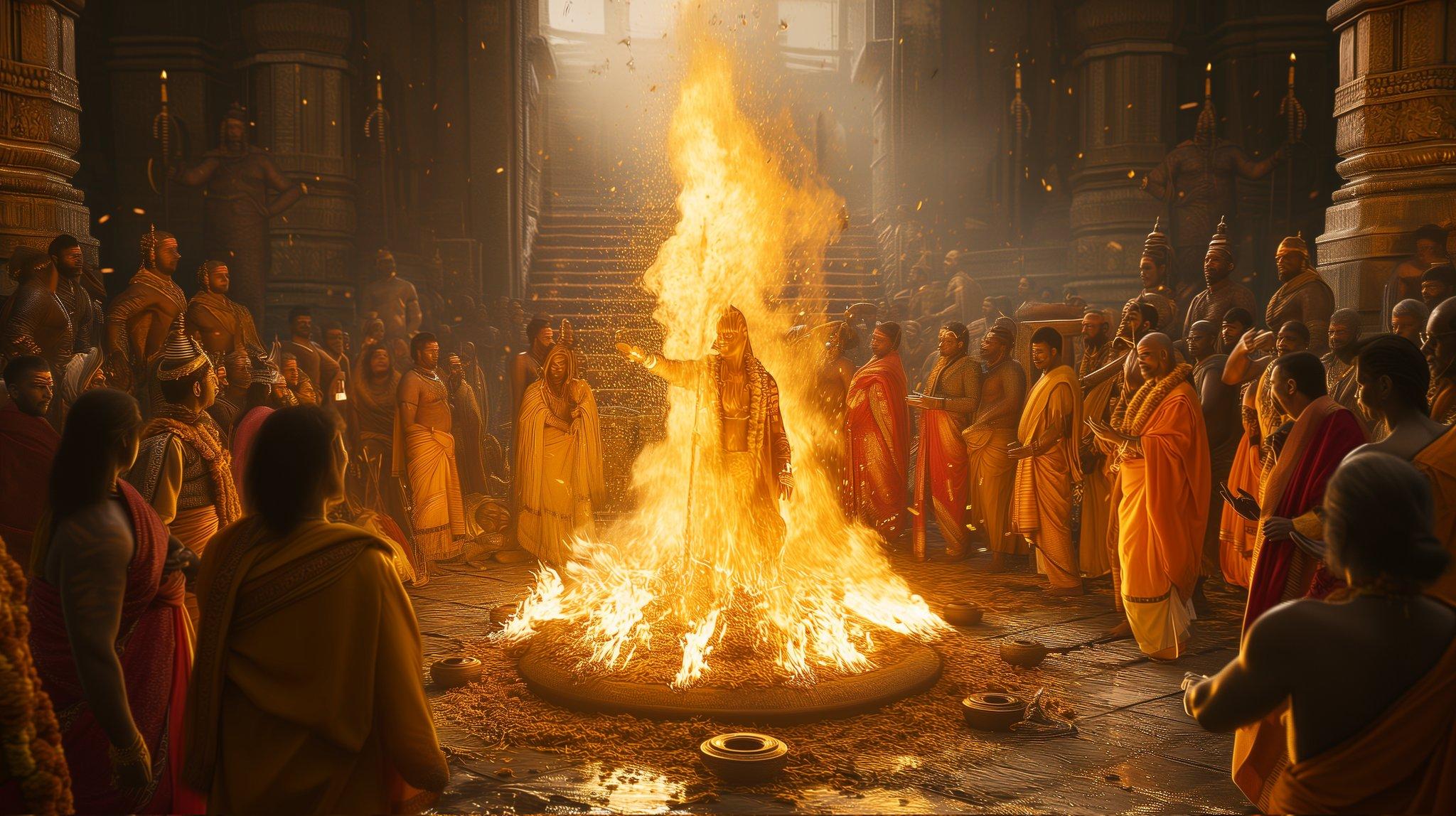
Owing to the Putrakameshti, King Dasharatha ended up having 4 sons with his 3 wives. Bharata, Lakshman, Shatrughna, And his eldest - Rama.
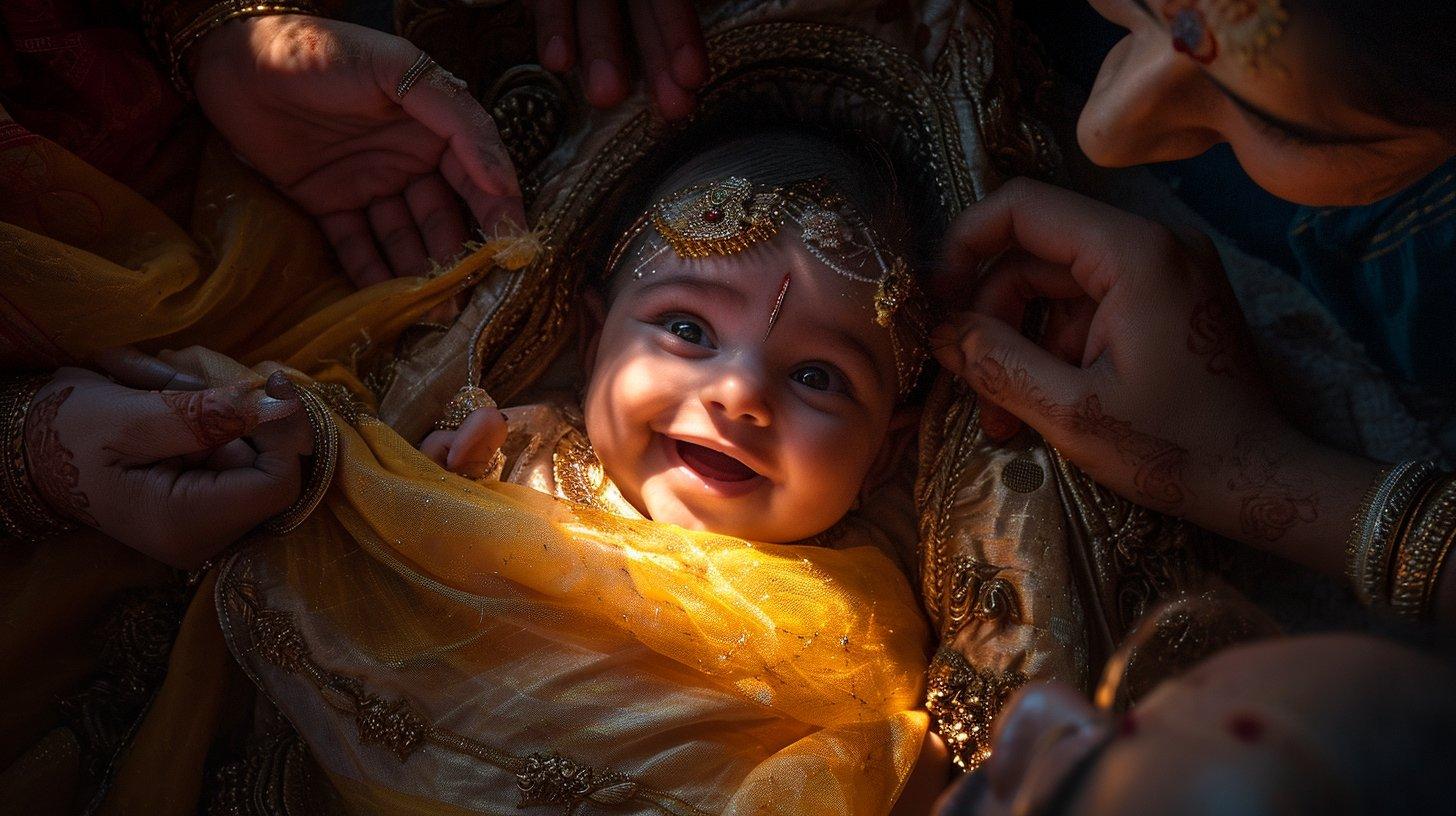
After a few years, sage Vishwamitra arrived in Dasharatha's court, asking him to send his eldest son Rama to help him fight against the demons disturbing his yagna.
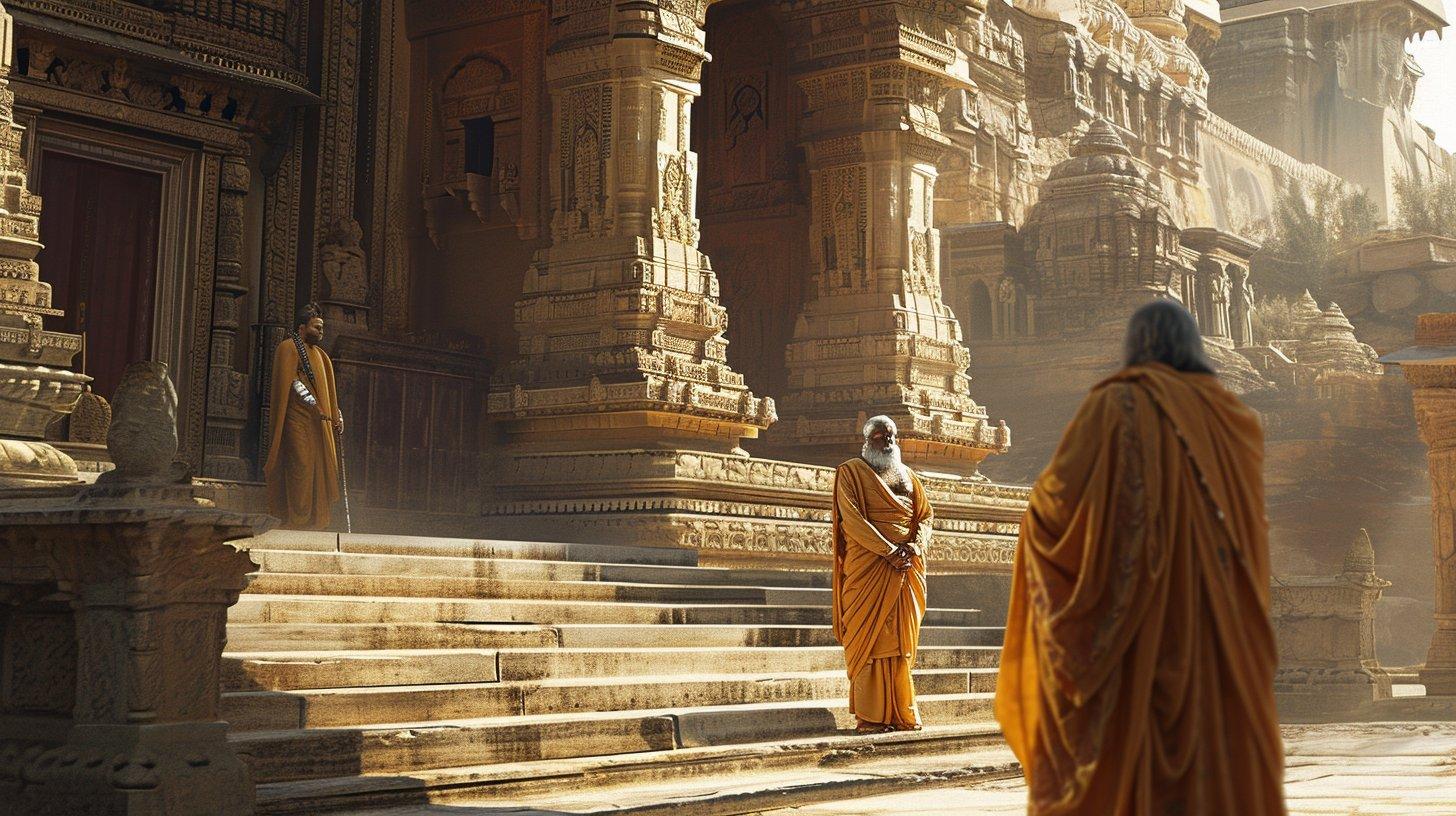
Always sticking by his side, Lakshman volunteered to join his brother to protect him from any harm that may come his way.
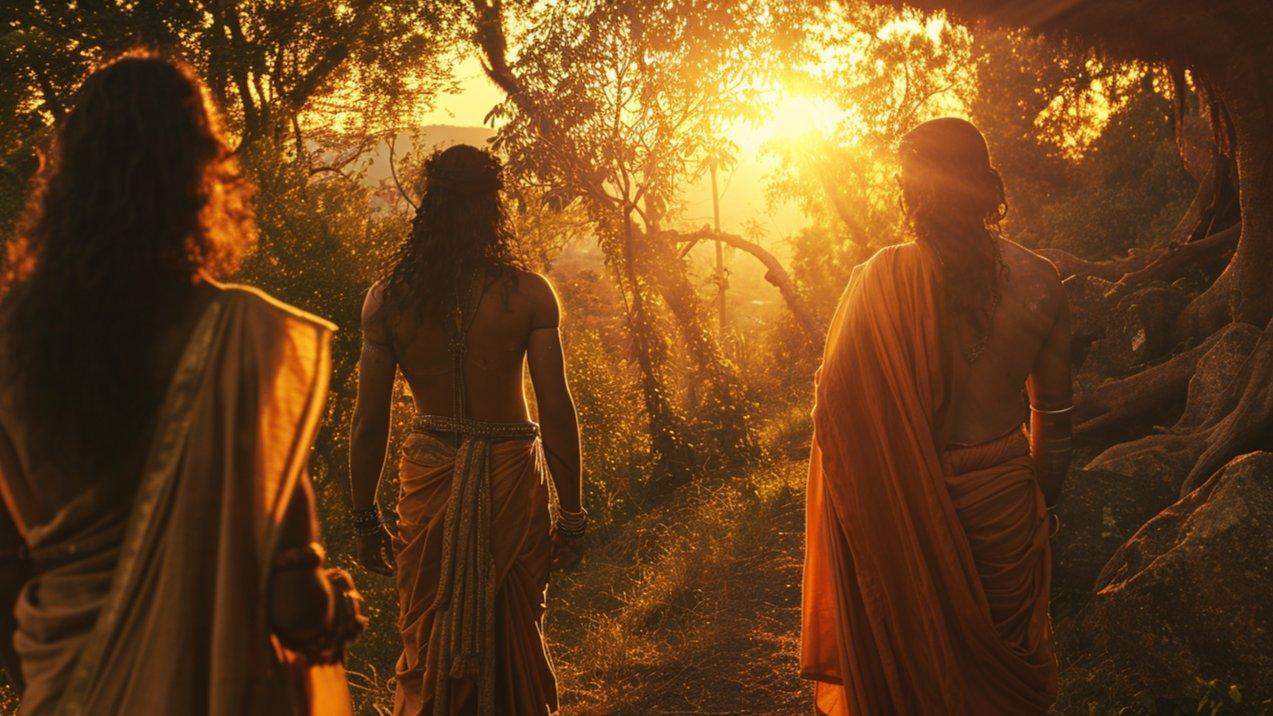
At the ashram the two princes, from Ayodhya, battle and defeat the demoness Tataka

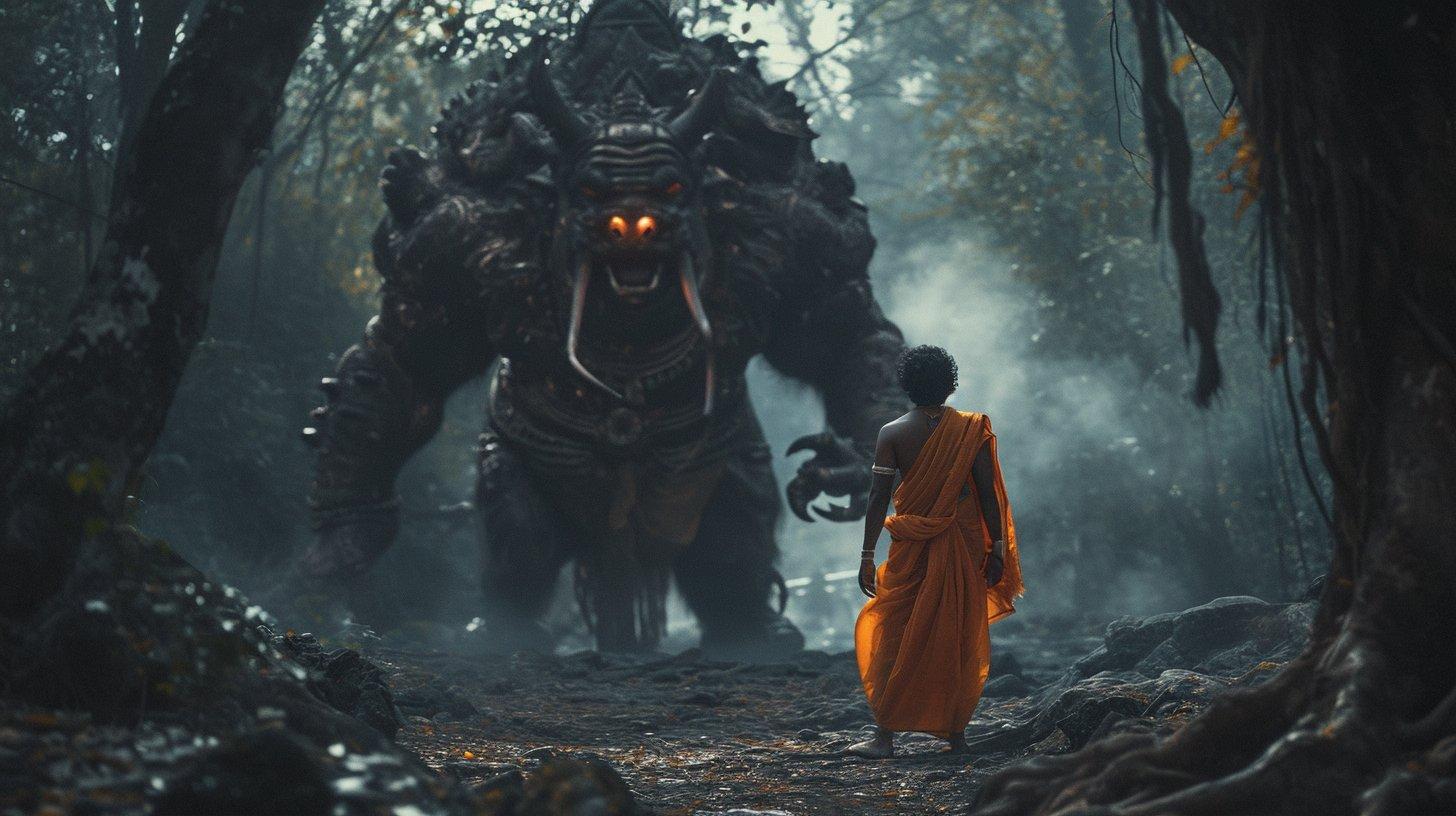
After defeating the demons, sage Vishwamitra and the two princes then travel to Mithila,
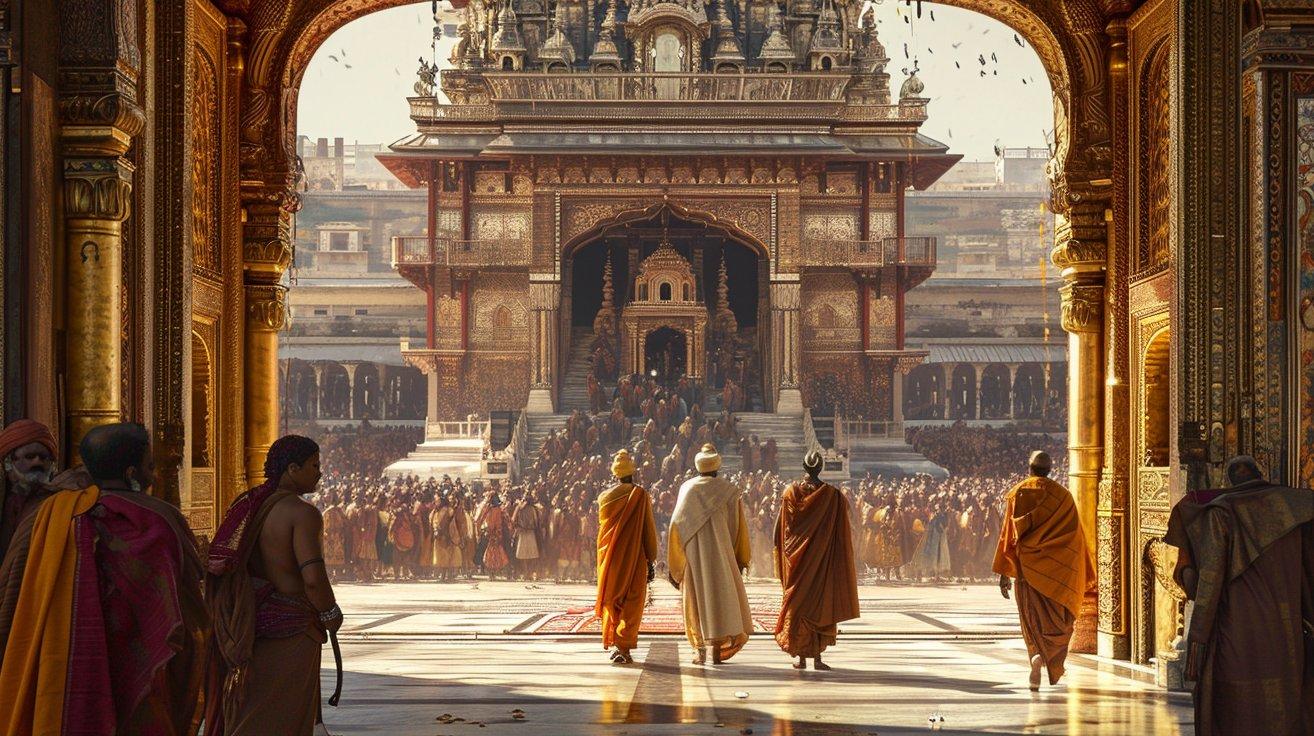
It is here, when Rama first sees Sita, princess of Janakpur.
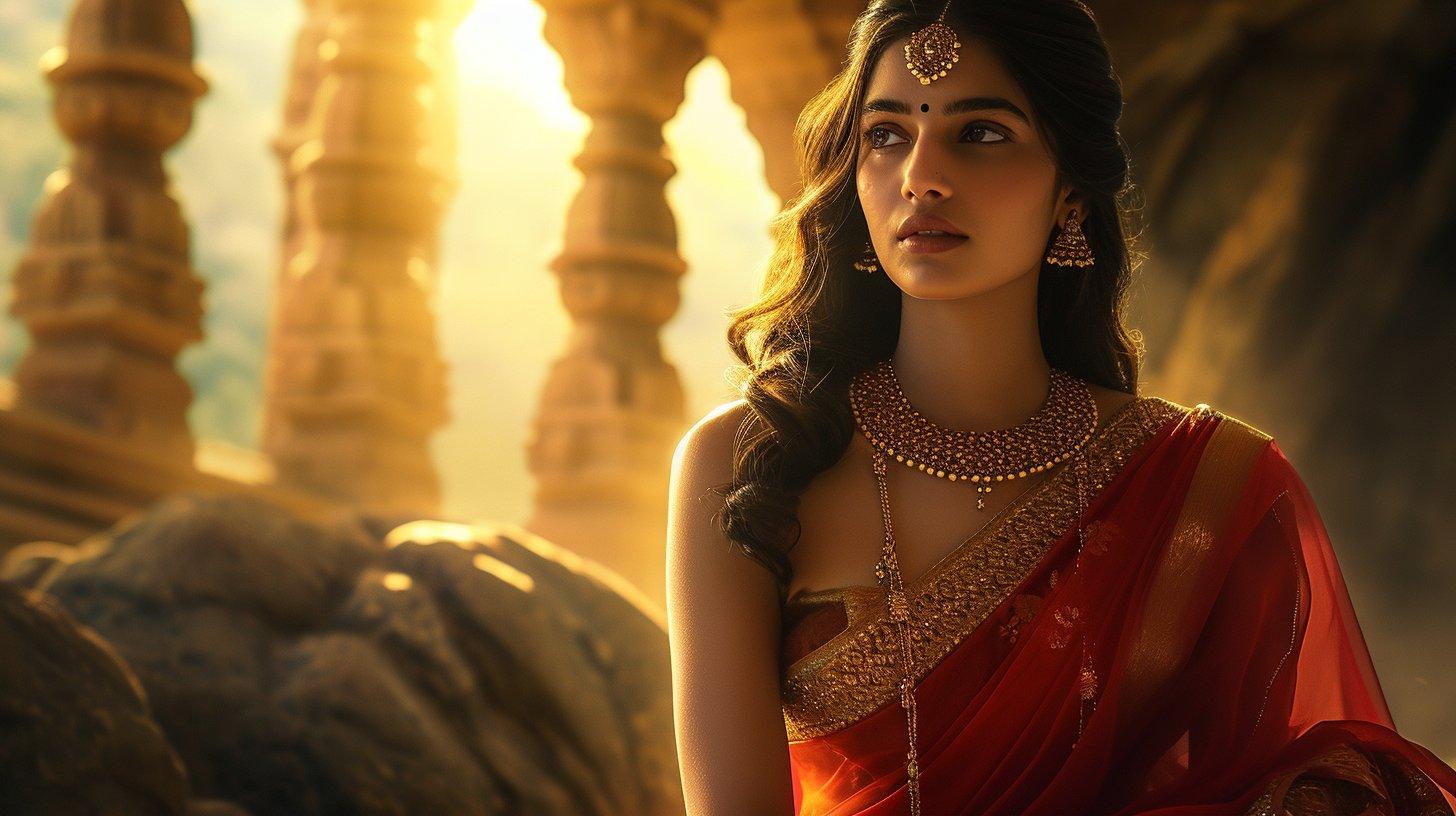
Sage Vishwamitra had brought Rama to attend the Swayamvara ceremony for Sita.
At the Swayamvara, Rama decided to participate, lifting the seemingly heavy 'Shiva-Dhanushya' even breaking it into two pieces by mistake when tying its bowstring. Leaving all those in attendance in a state of shock and wonder at his infinite strength!
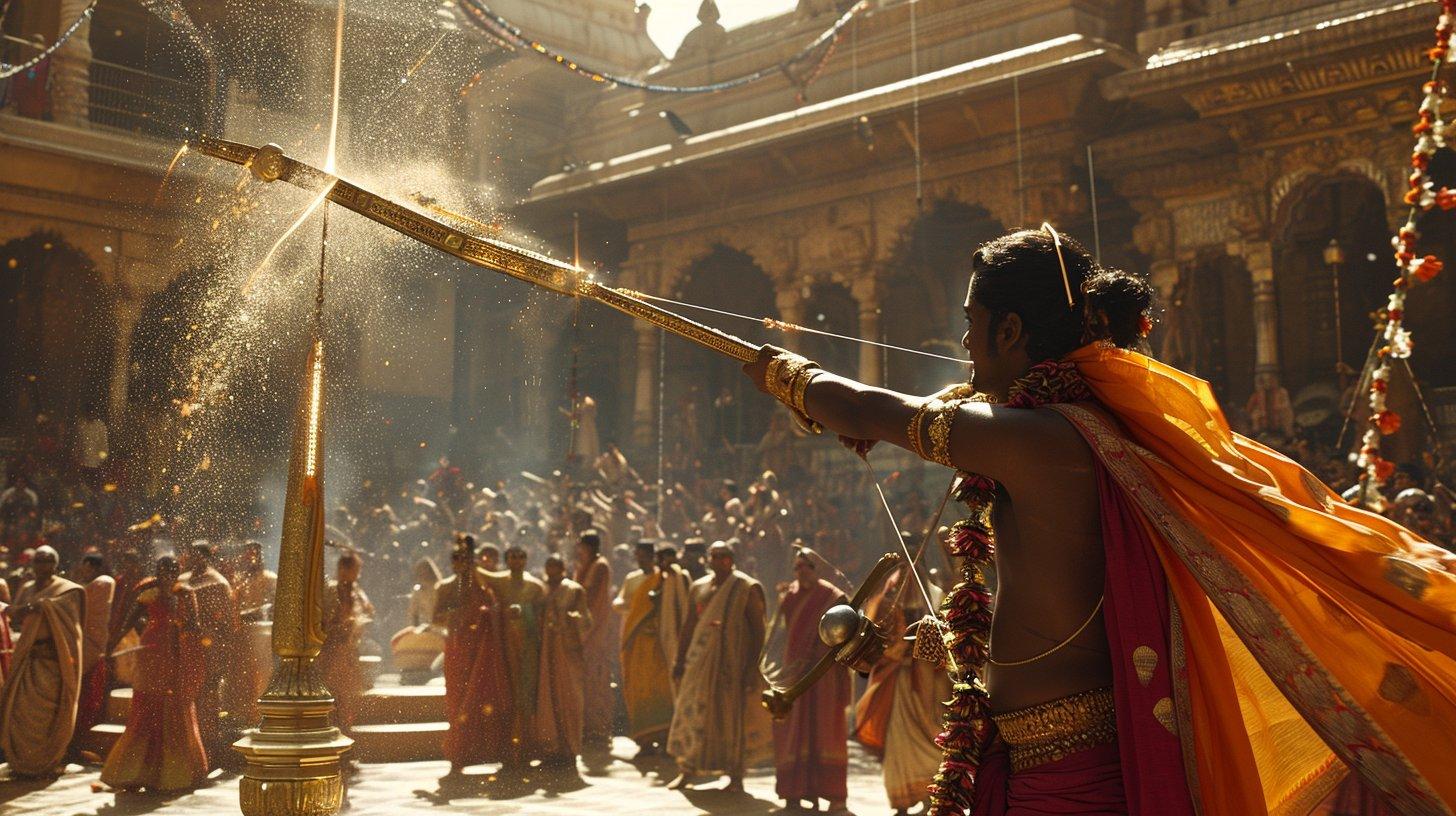
The act of breaking the immortal bow proved to Sita that Rama had won her heart. Hearing the news of Rama and Sita's acceptance of a marriage, Dasharatha arrives at Mithila with a plethora of excited guests and royal gifts.
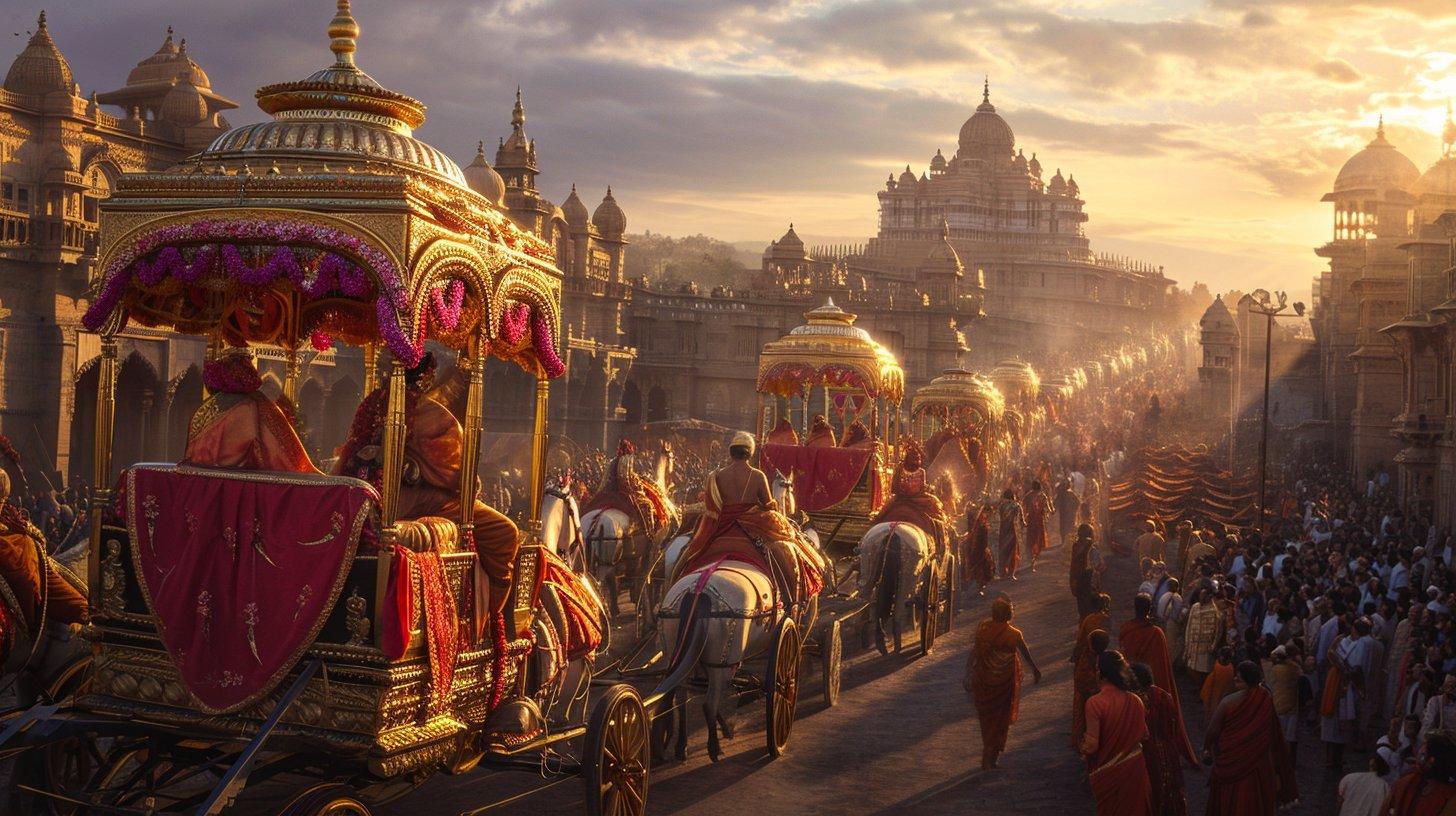
Alongside Rama and Sita, the three brothers of Rama got married to the three sisters of Sita as well.
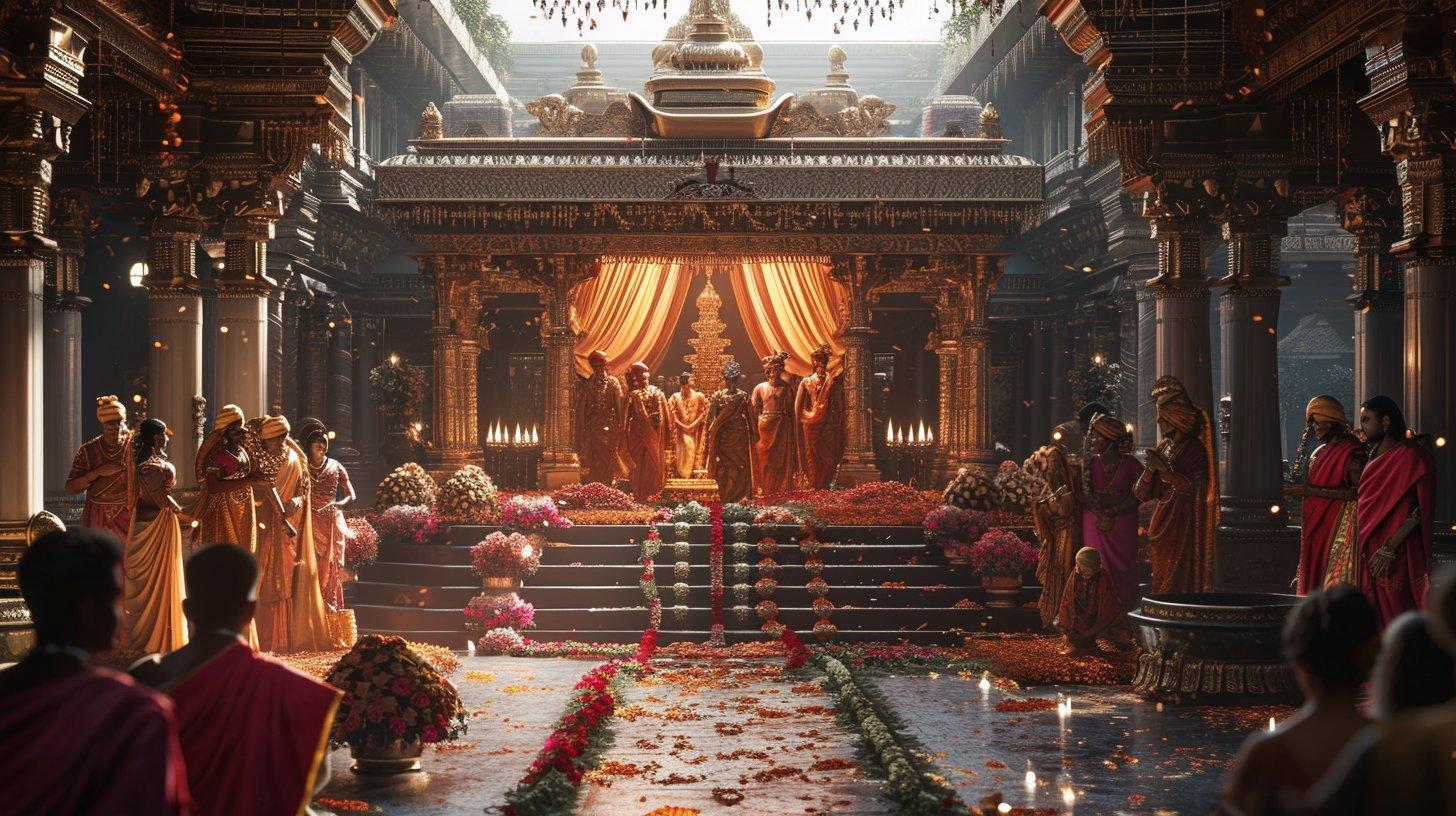
Upon their return to Ayodhya, King Dasharatha, announces his eldest son Rama's coronation. As news for this breaks out, the entire city of Ayodhya finds itself busy in celebrations and decorations.
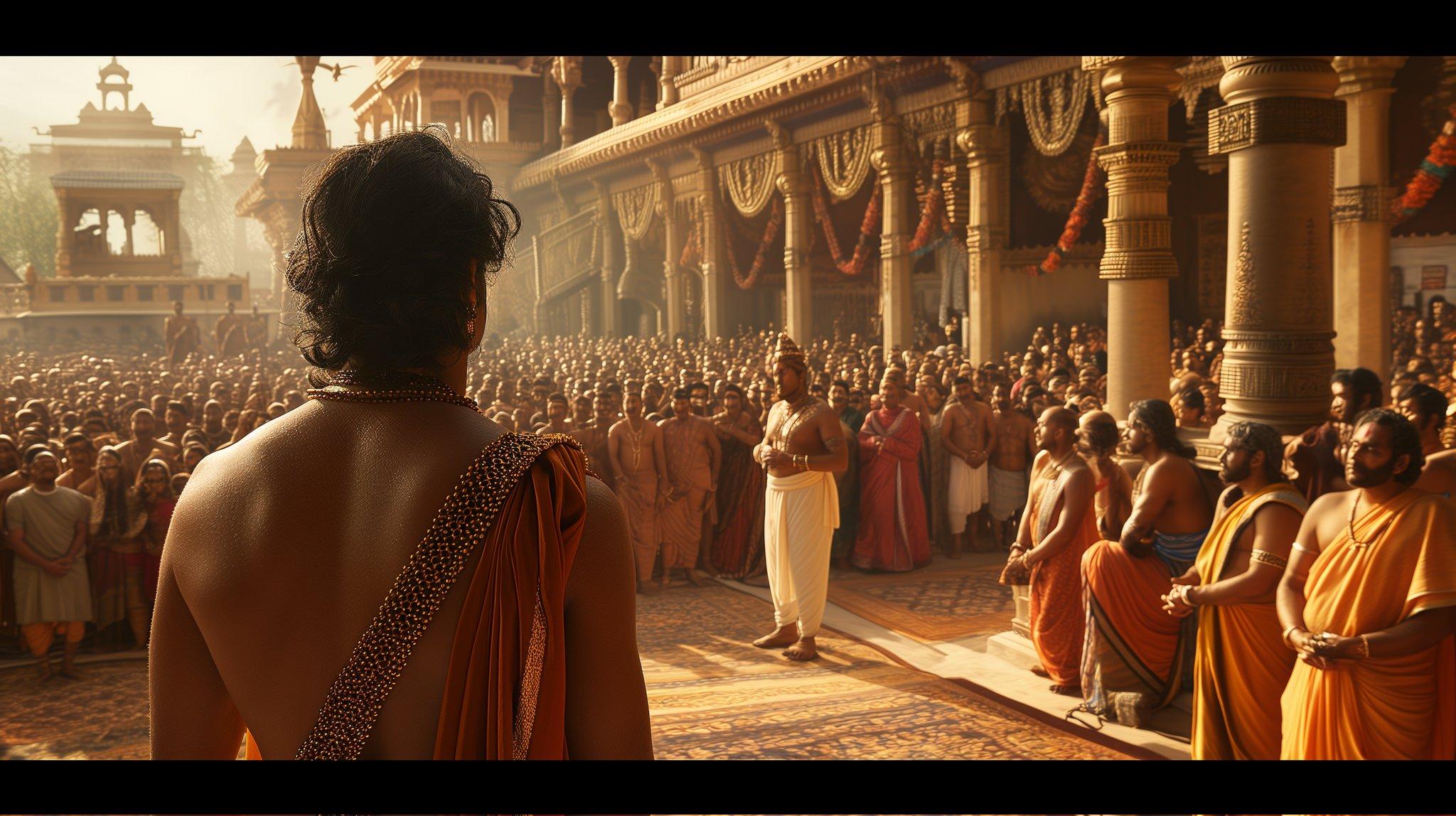
Bound by his word, and with a very heavy heart, Dasharatha had to agree due to the vow of Suryavansi (Prana Jaye Bachan Najaye).
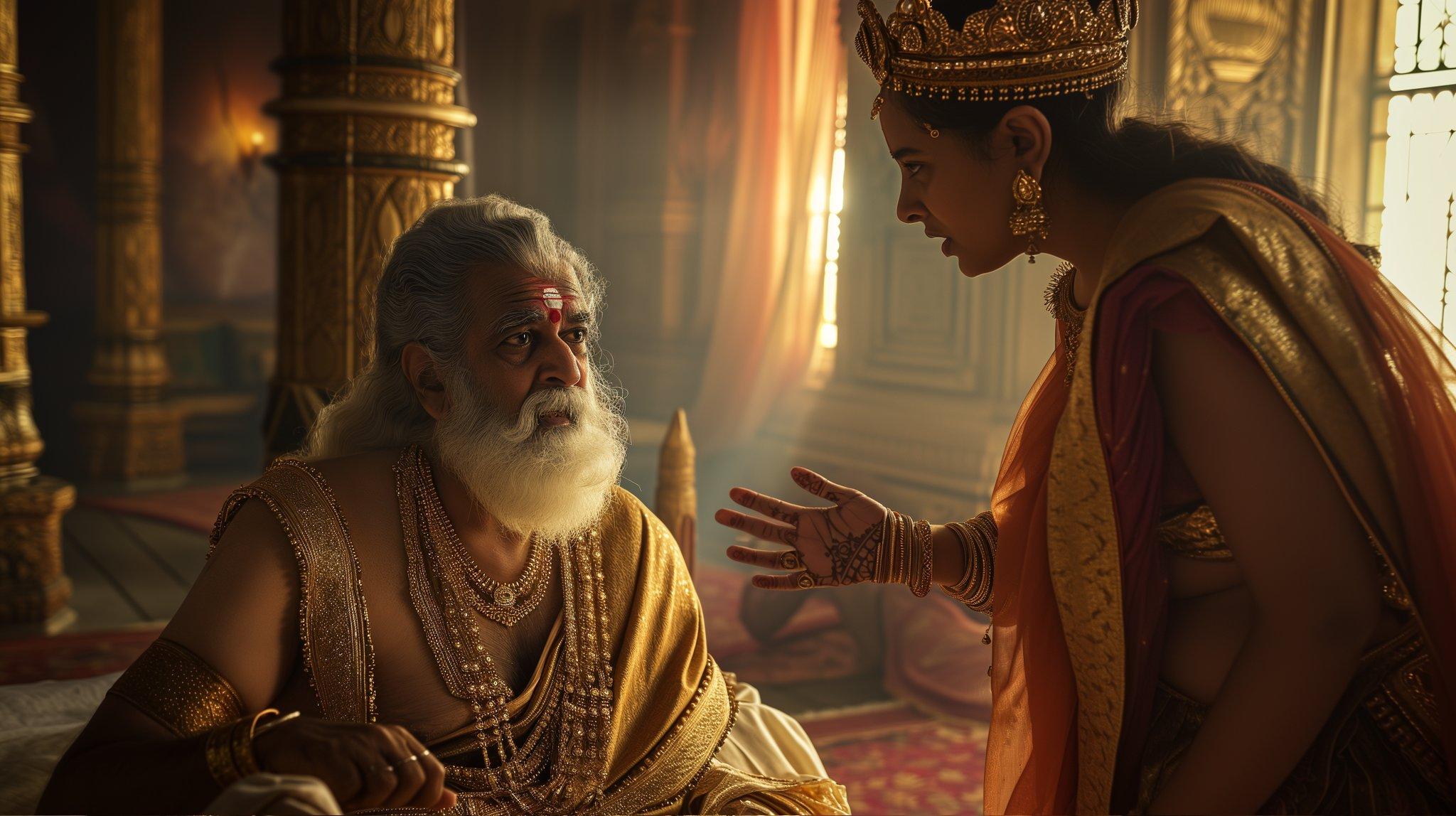
As an obident Son, Rama agrees to depart the kingdom to honor his father's word.
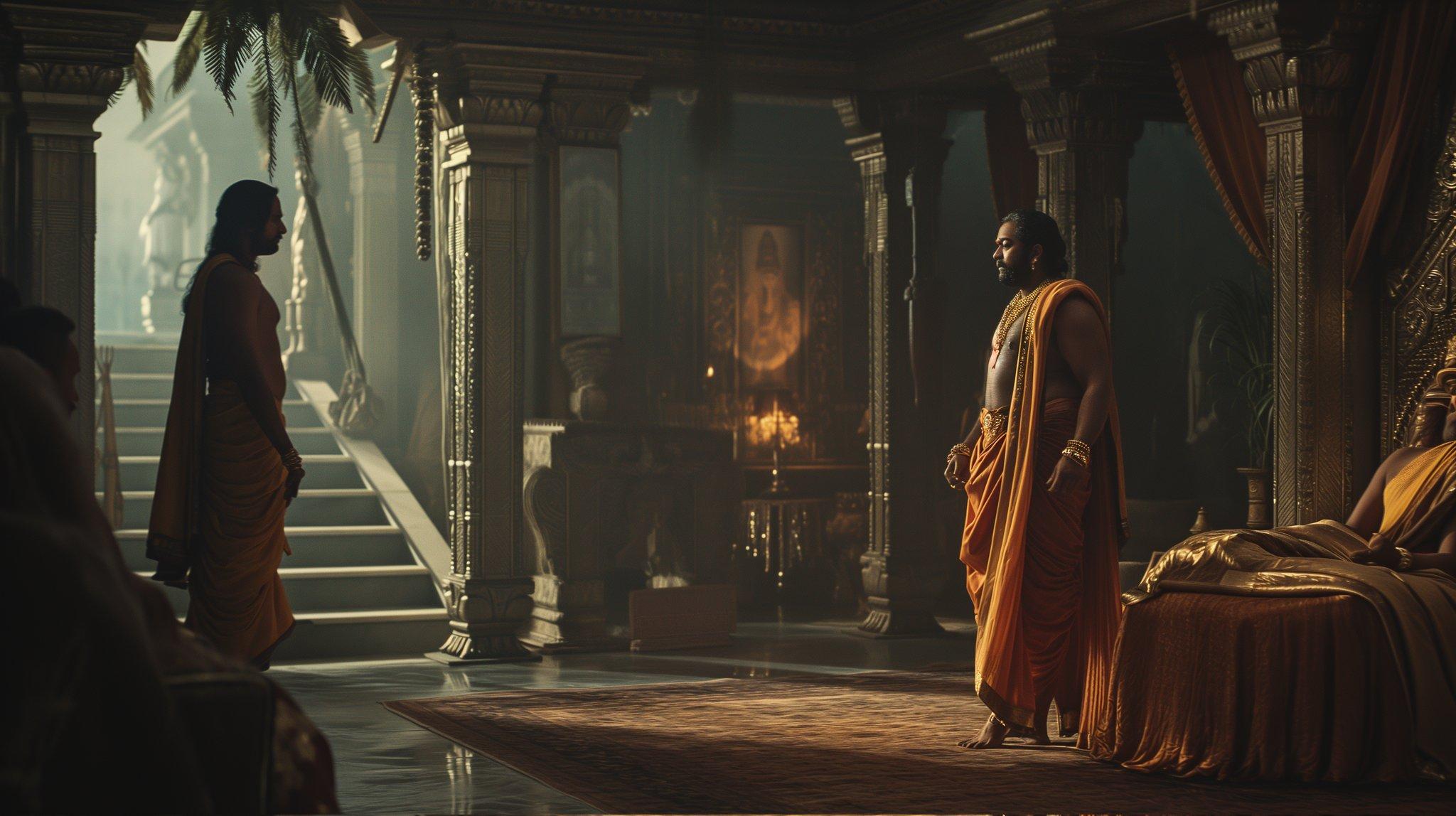
Lakshman and Sita, despite his protests, demand to join Rama in his Vanavas (14 years of exile). All three of them depart the kingdom together.
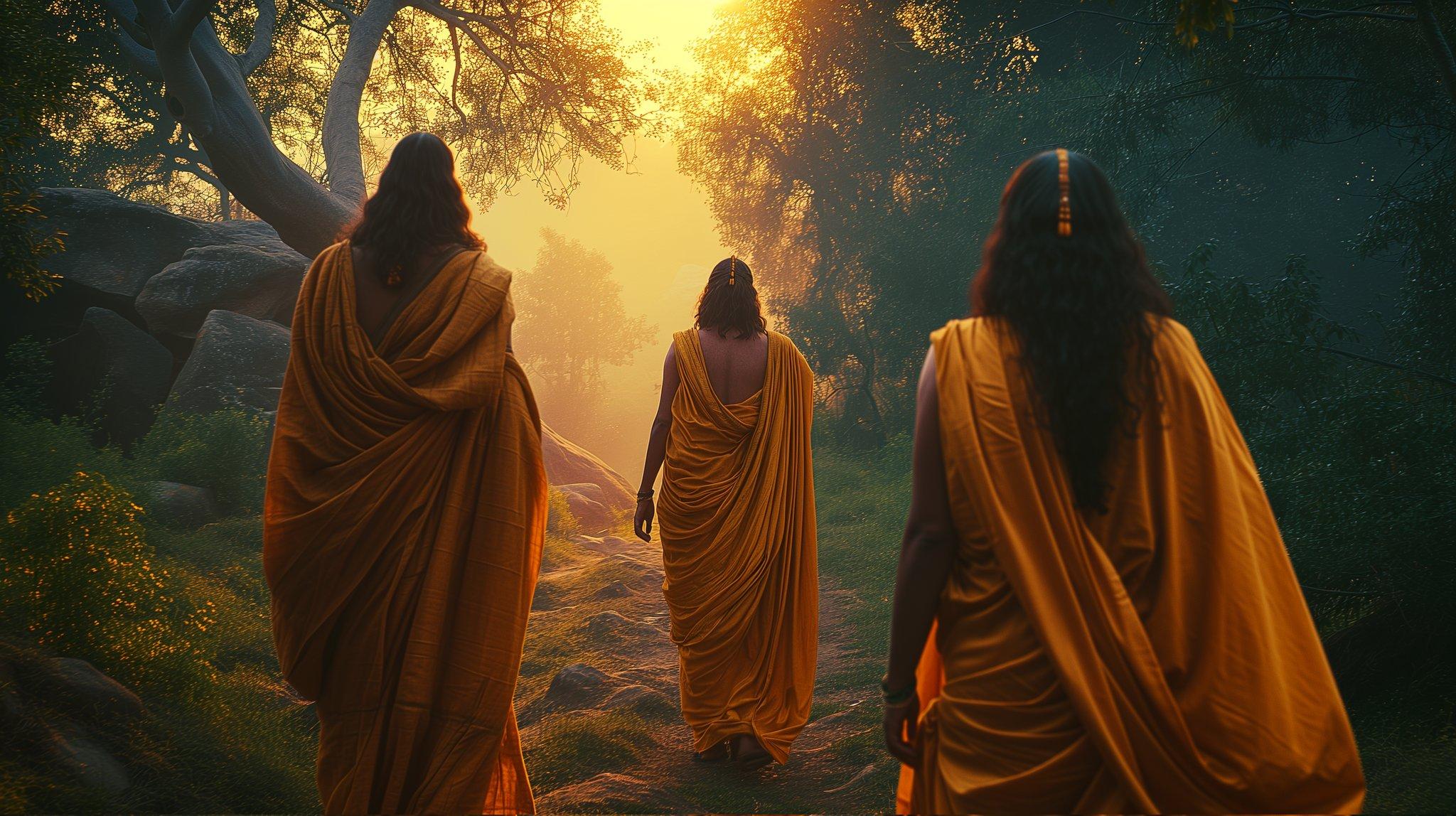
King Dasharatha passes away shortly after Rama, Sita, and Lakshmana's departure. Upon his return, Bharat learns of his father's demise and is stricken with immense grief. In the absence of Rama, he performs their father's last rites.
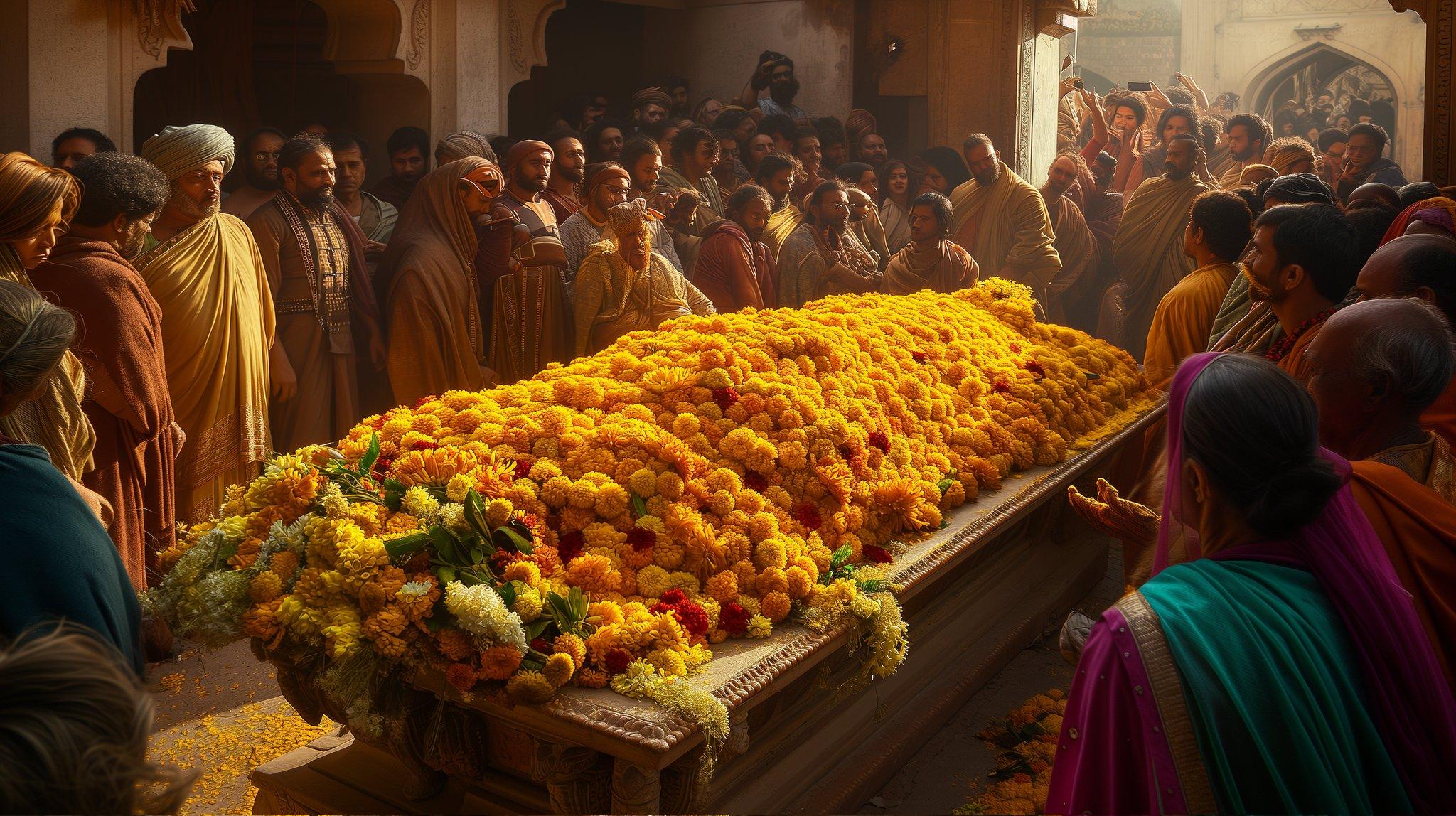
In the absence of Rama, he performs their father's last rites.
Even after pressure from his mother, Bharata refuses to accept the throne of Ayodhya, as he believes his elder brother Rama to be its rightful heir. In his search to bring Rama back, Bharata journeys to the forest with an entourage.
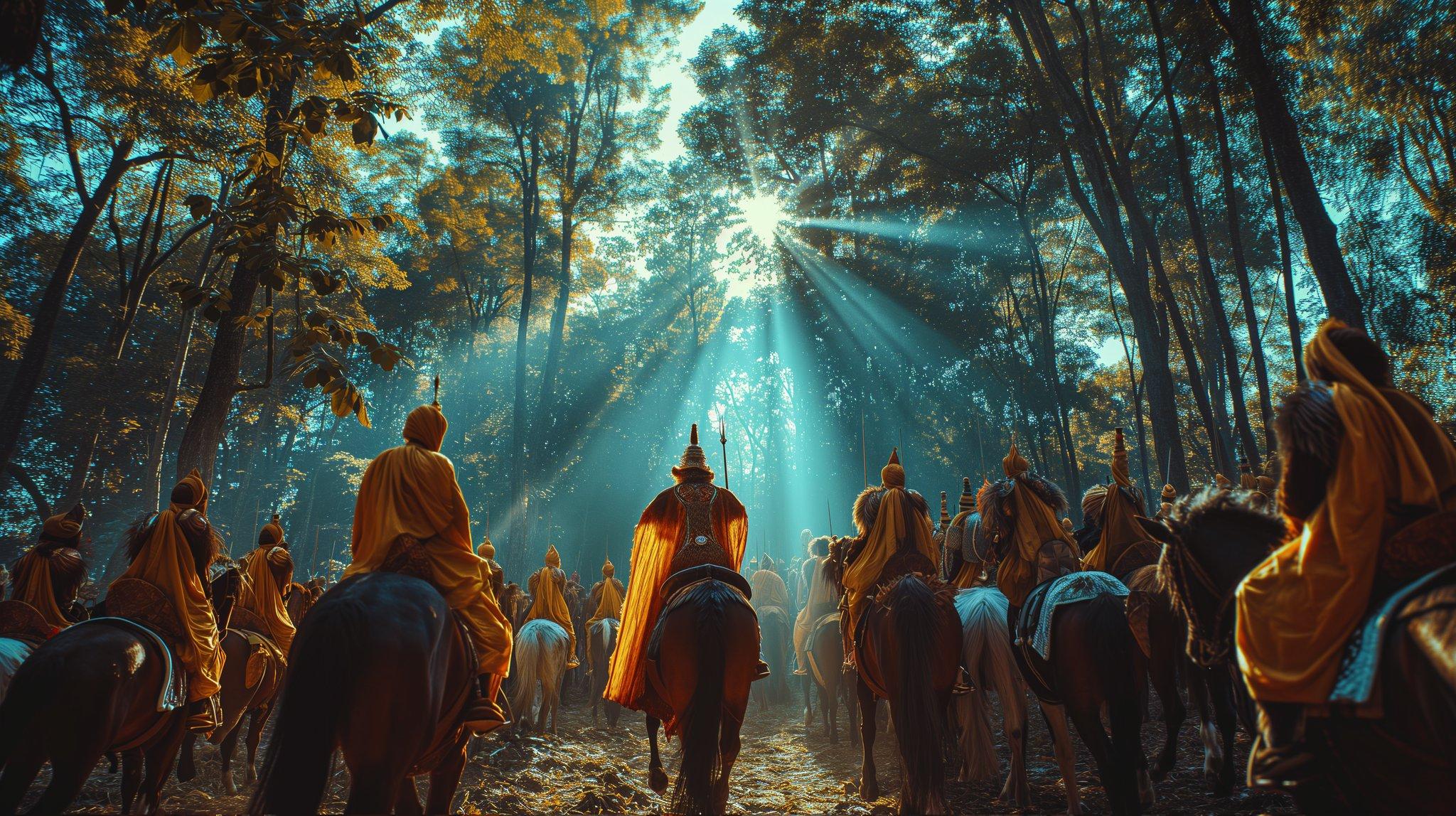
Upon meeting with Rama, Bharata attempts to convince Rama to come back to Ayodhya and accept the throne and rule the kingdom.
Rama refuses - staying true to his father's word.
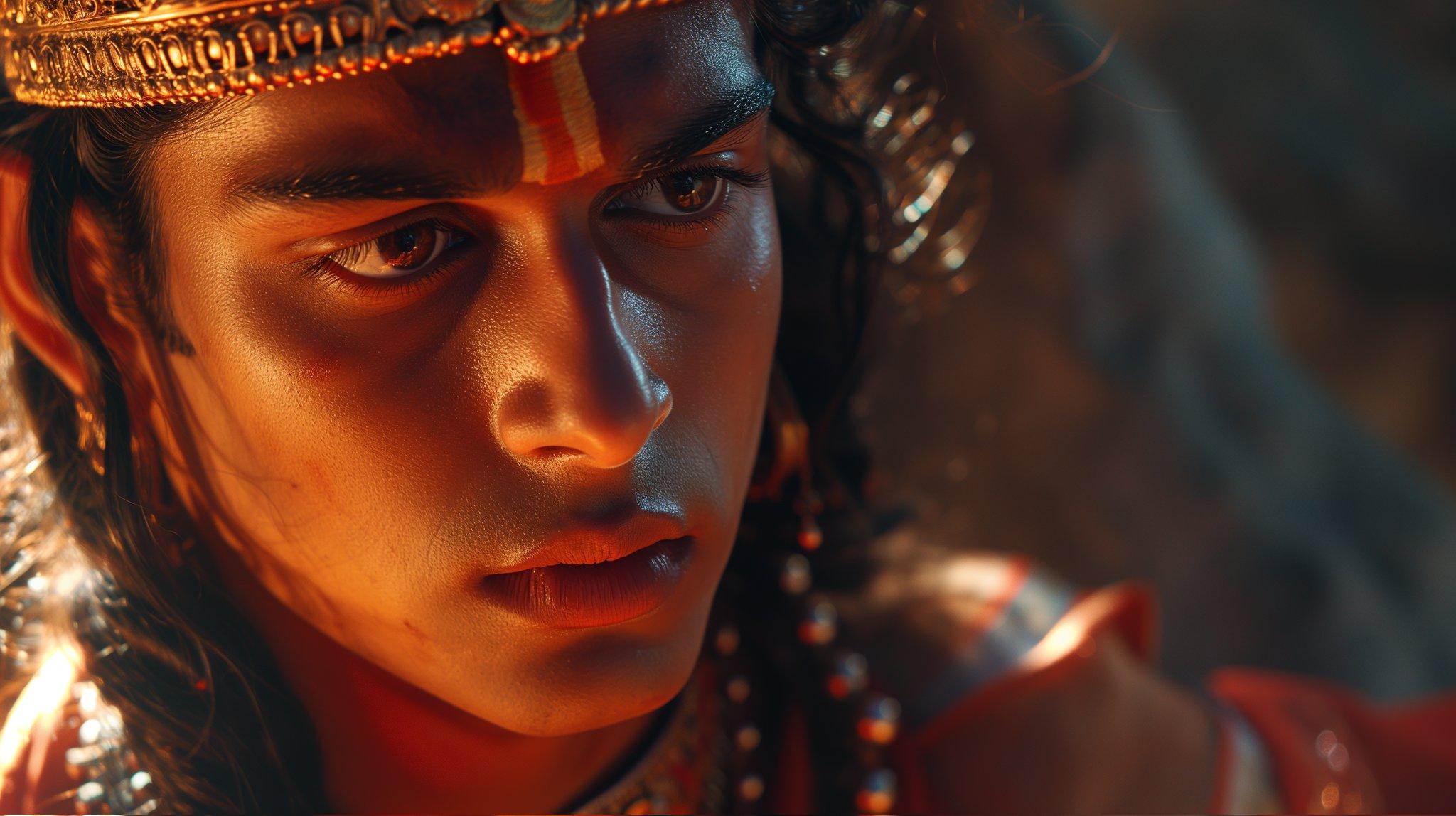
Before returning to Ayodhya, Bharata asks for Rama's Sandals - which he places on the throne in order to symbolise Rama's rule over the kingdom even during his absence.
Bharata tasks over as his regent in the meantime.
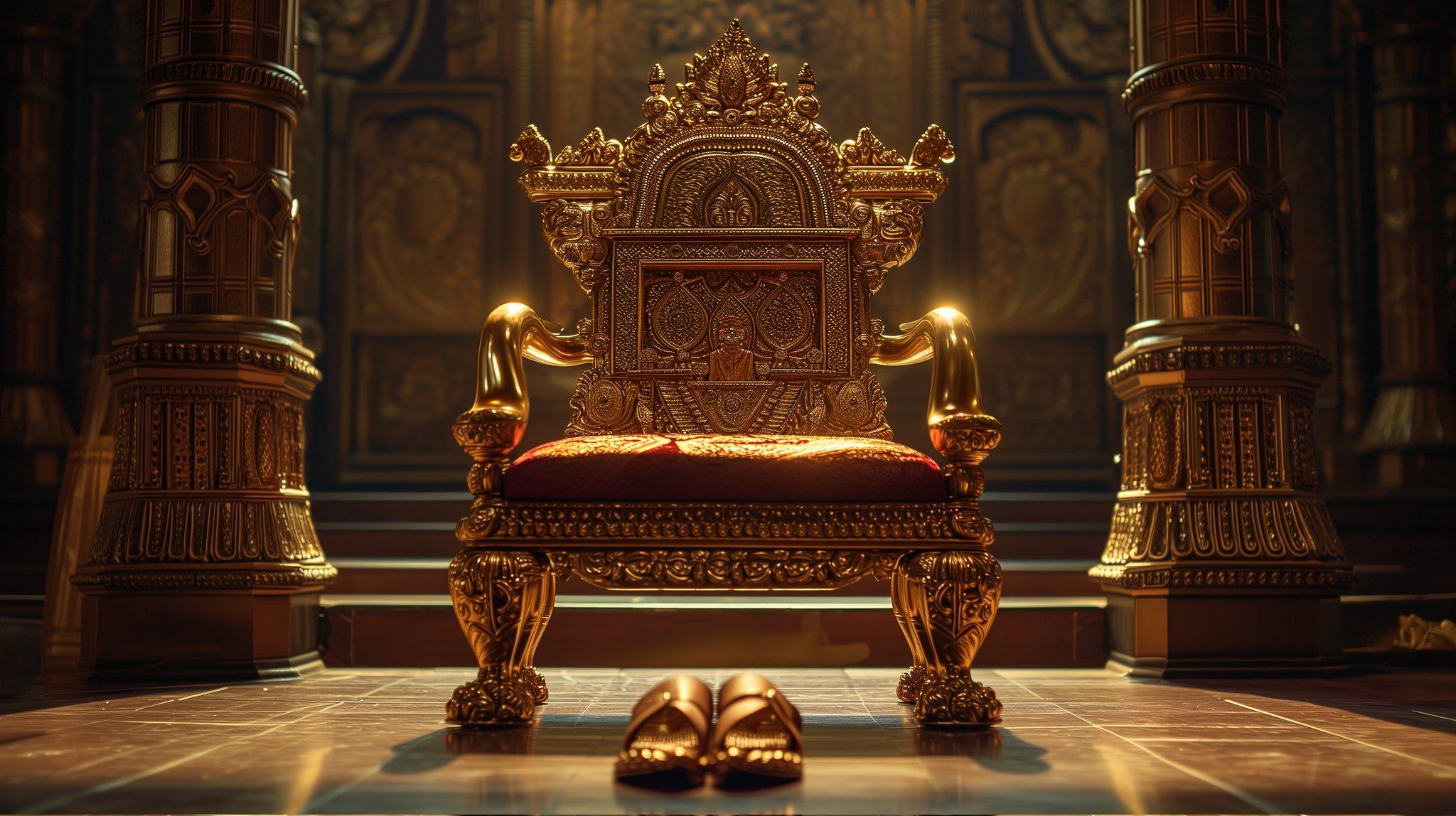
In the forest, Rama, Sita, and Lakshmana find themselves in a peculiar situation when Ravana's sister Shurpanakha falls in love with Rama and proposes to marry him.
A proposal which Rama politely declines.
Shurpanakha is unable to contain her anger and attacks Sita!
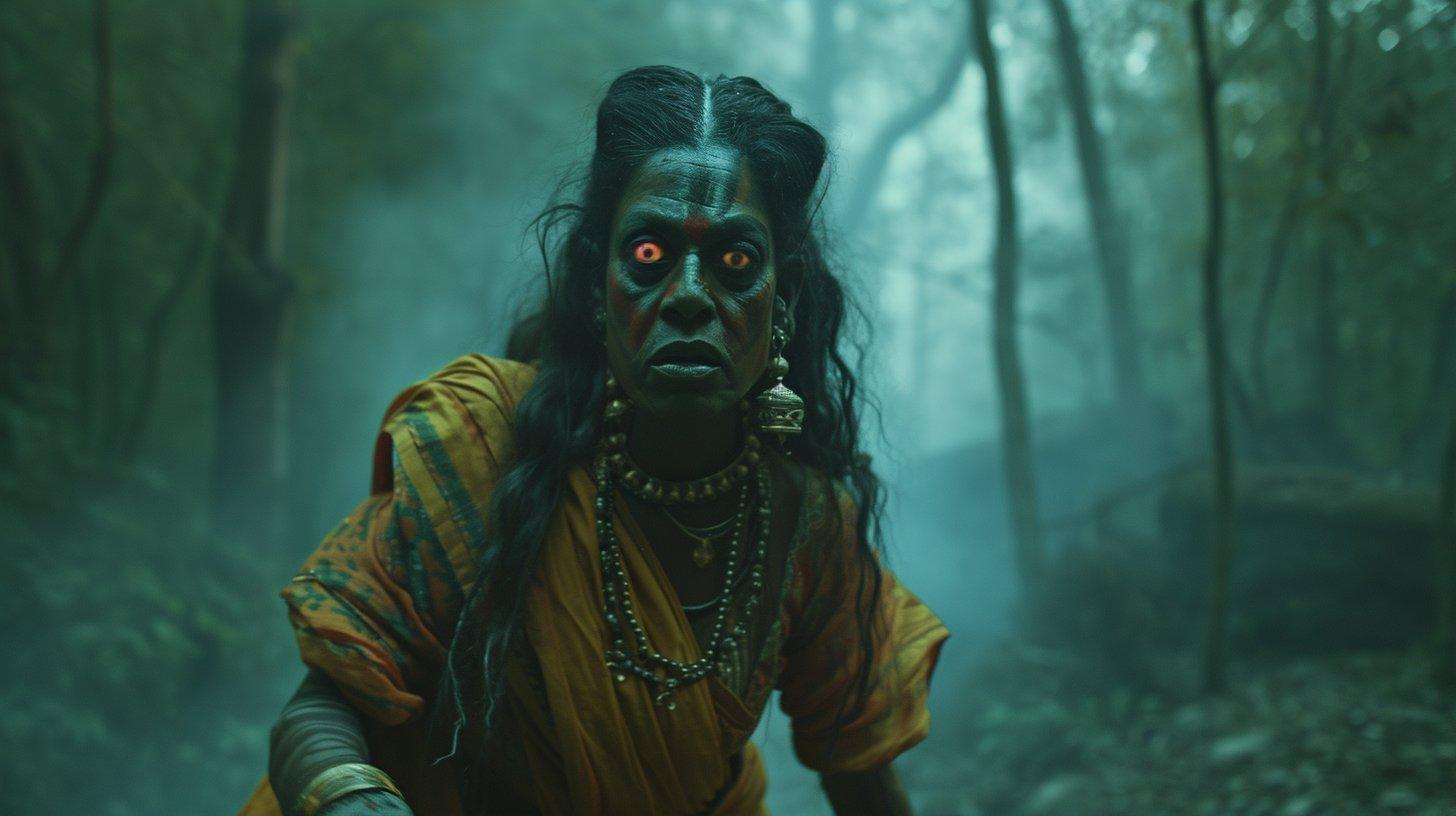
Lakshman staying true to his vow to protect Rama and Sita, decides to shoot an arrow and cut off the Shurpanakha's nose!
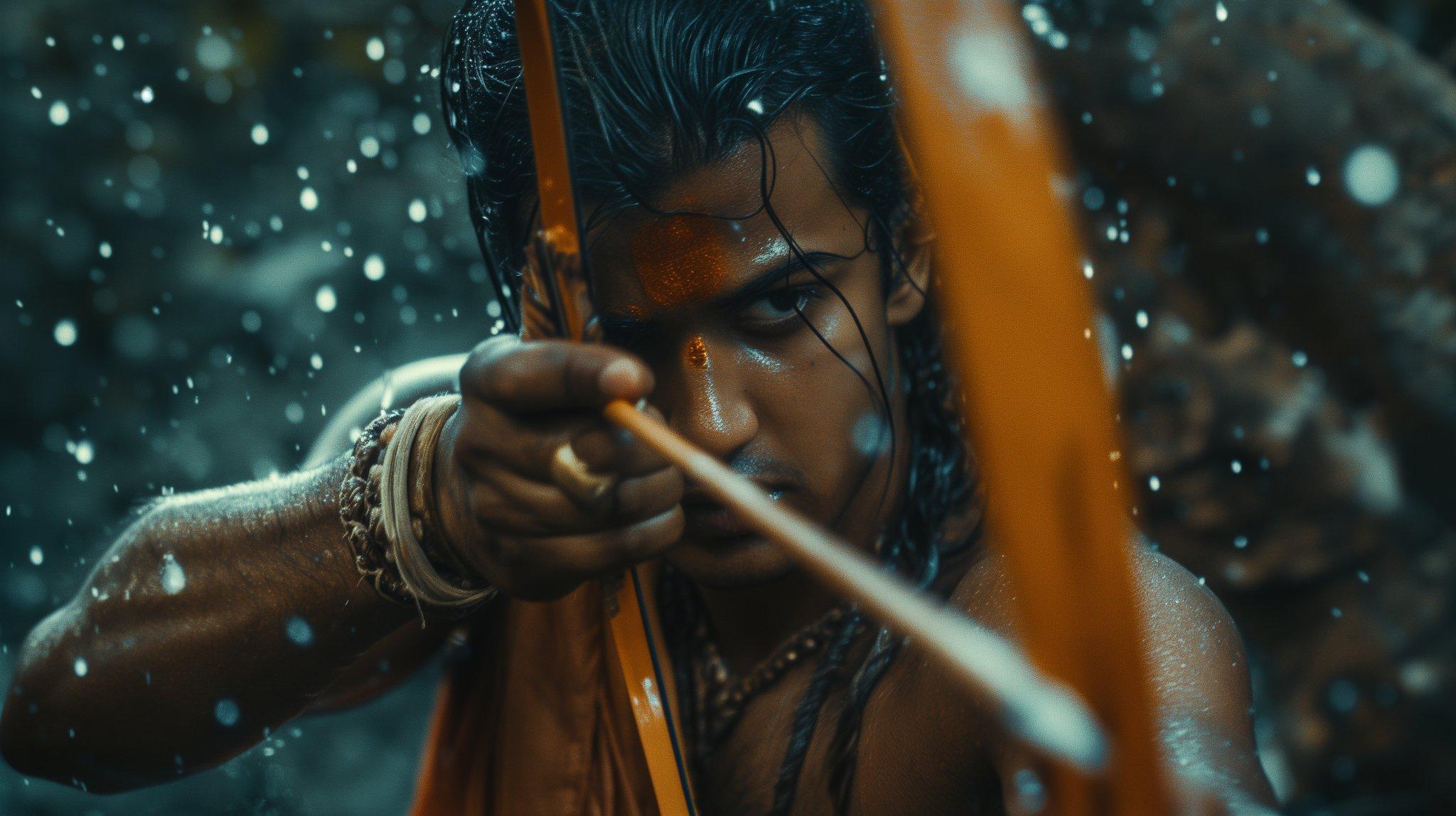
Upon hearing of this incident and the harm caused to his sister, the demon king of Lanka - Ravana is unable to control his anger. He devises a plan to avenge his sister's embarrassment!
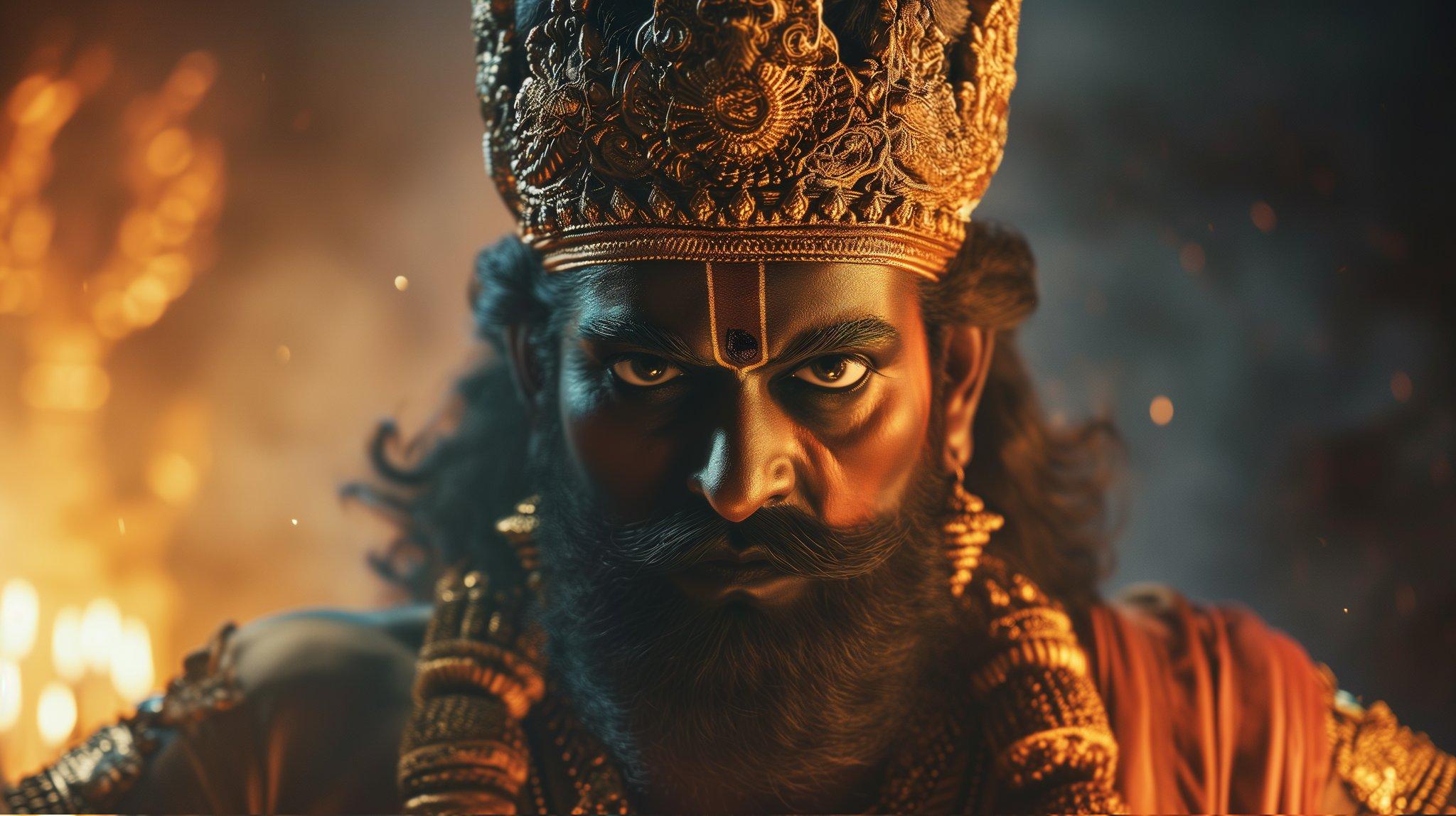
Ravana's close aide, and a demon himself, Maricha takes on the role of a beautiful spotted deer in the forest. Appearing before Rama and Sita, he lures Rama away from the camp. Leaving Sita vulnerable.
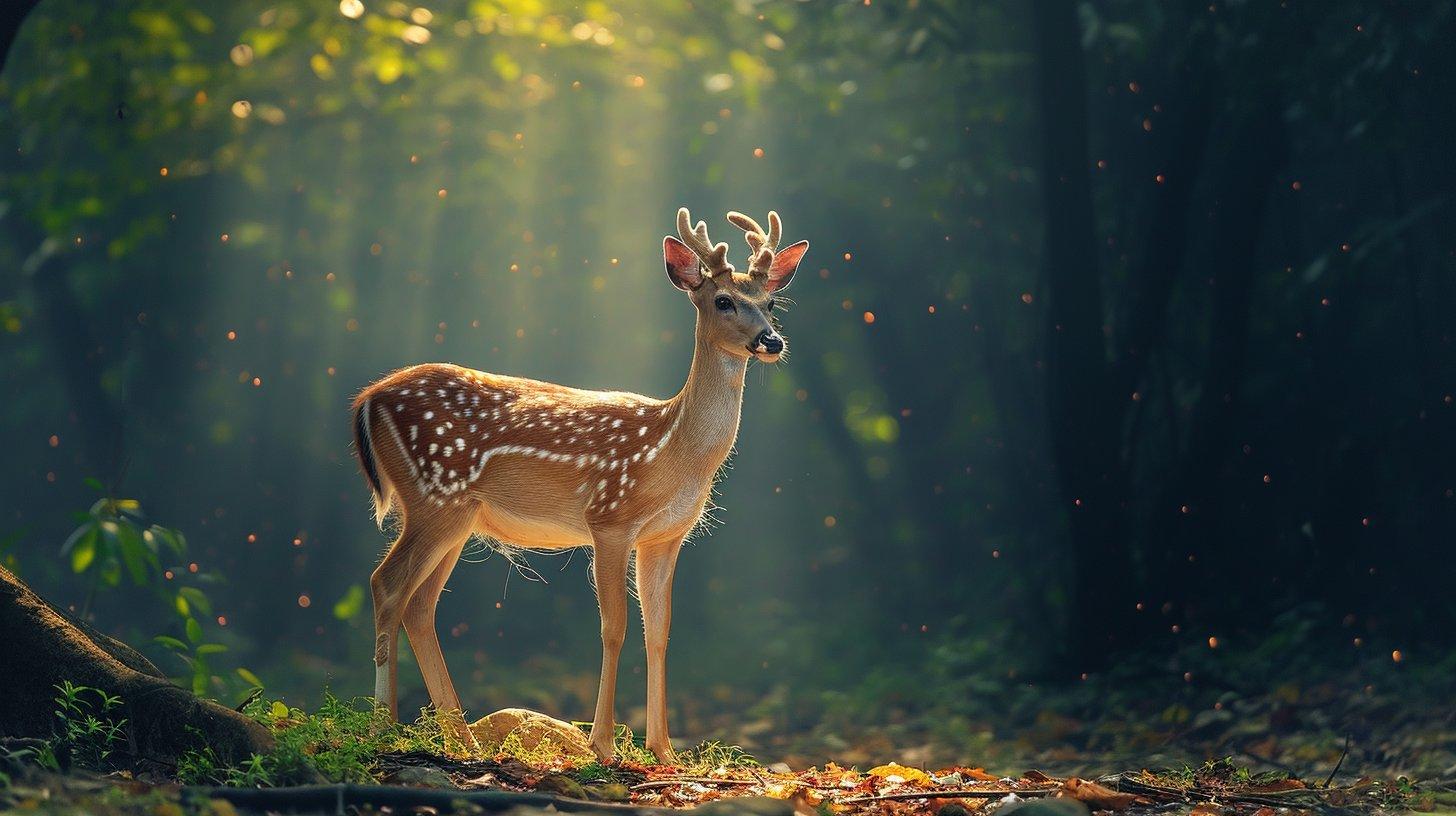
Rama shoots an arrow at Maricha and connects. Maricha mimicking Rama's voice shouts in Pain and agony! Being fooled by this trick, Lakshmana runs to his brother's aid.
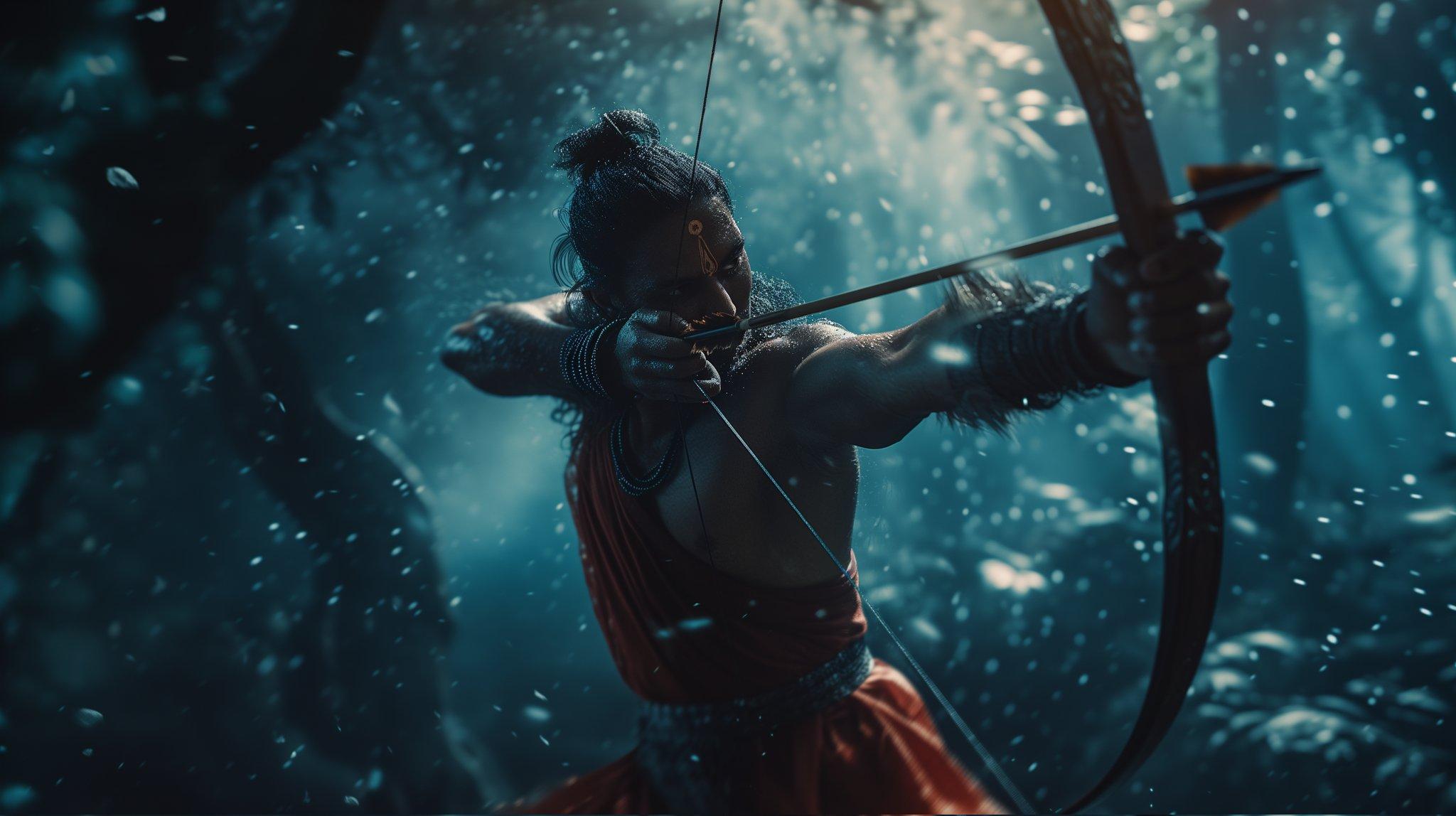
Before leaving, Lakshmana draws the 'Lakshman-Rekha' - a line that would prevent anyone from crossing over and towards the camp. Protecting Sita as long as she stays behind it.

A short while after Lakshmana departs, a sage appears near the camp...
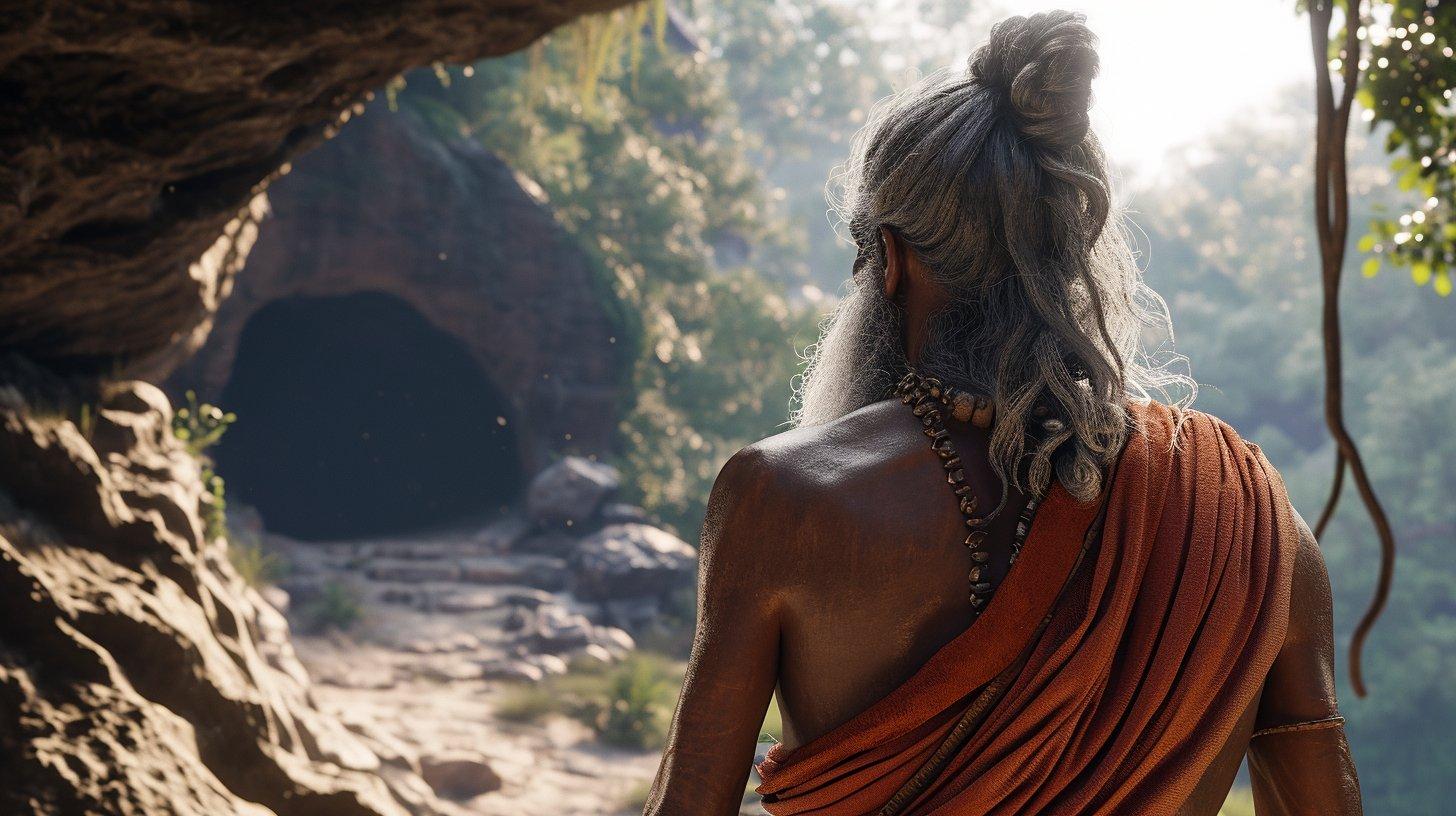
The sweet old sage asks Sita if she has any offerings to give, to which Sita happily obliges.
Sita walks up to the 'Lakshman-Rekha' and waits, holding her offerings in her hands.
The sage asks her to cross over and approach him since he is a lowly sage who may not enter the home of another.
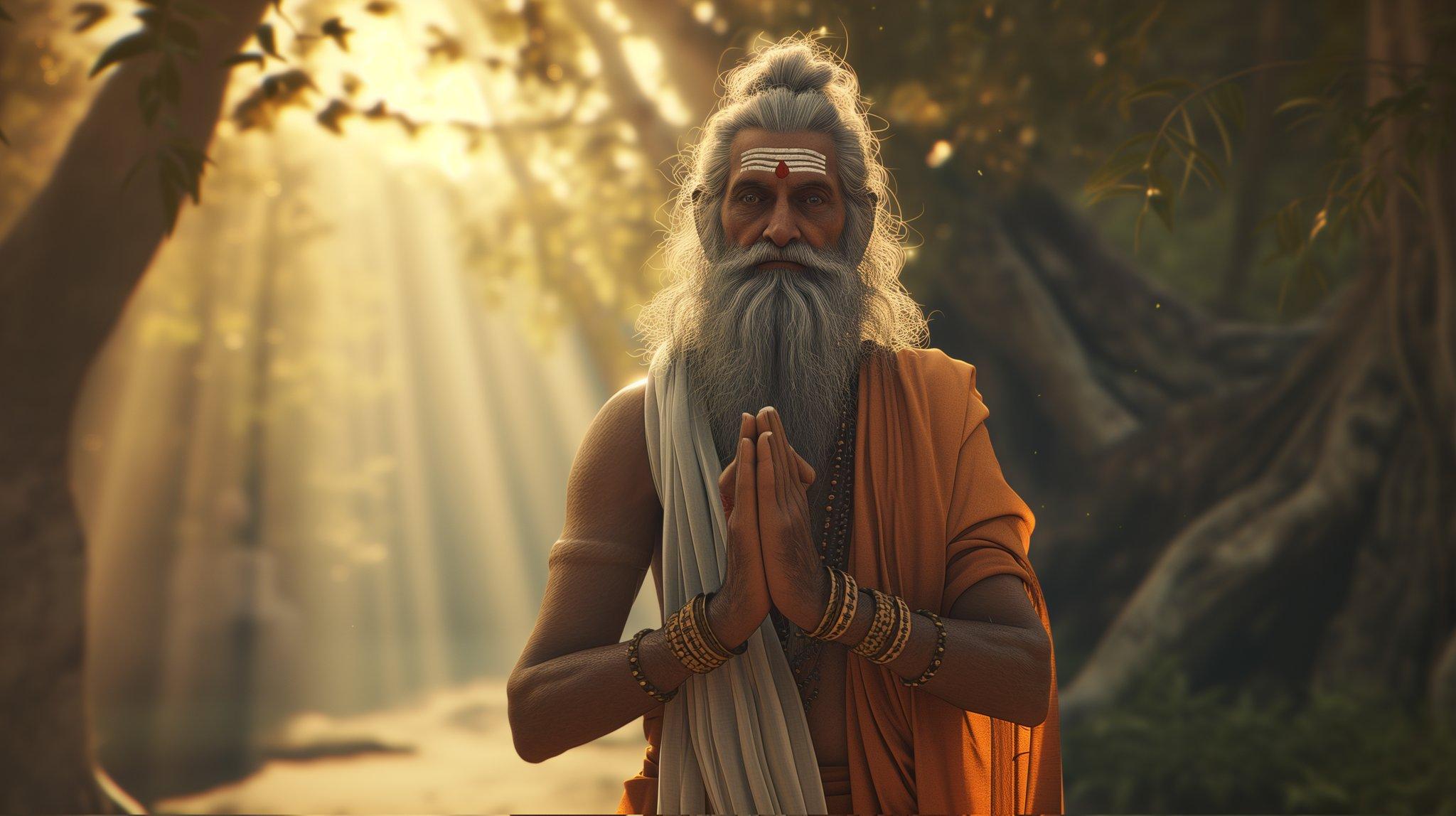
Sita, who is unable to deny the Sage of his request, decides to cross the line to the other side to give the sage her offerings...

As soon as Sita crosses the 'Lakshman-Rekha', the sage reveals himself to be the Demon RAVANA!
He overpowers and eventually abducts Sita from Panchavati.
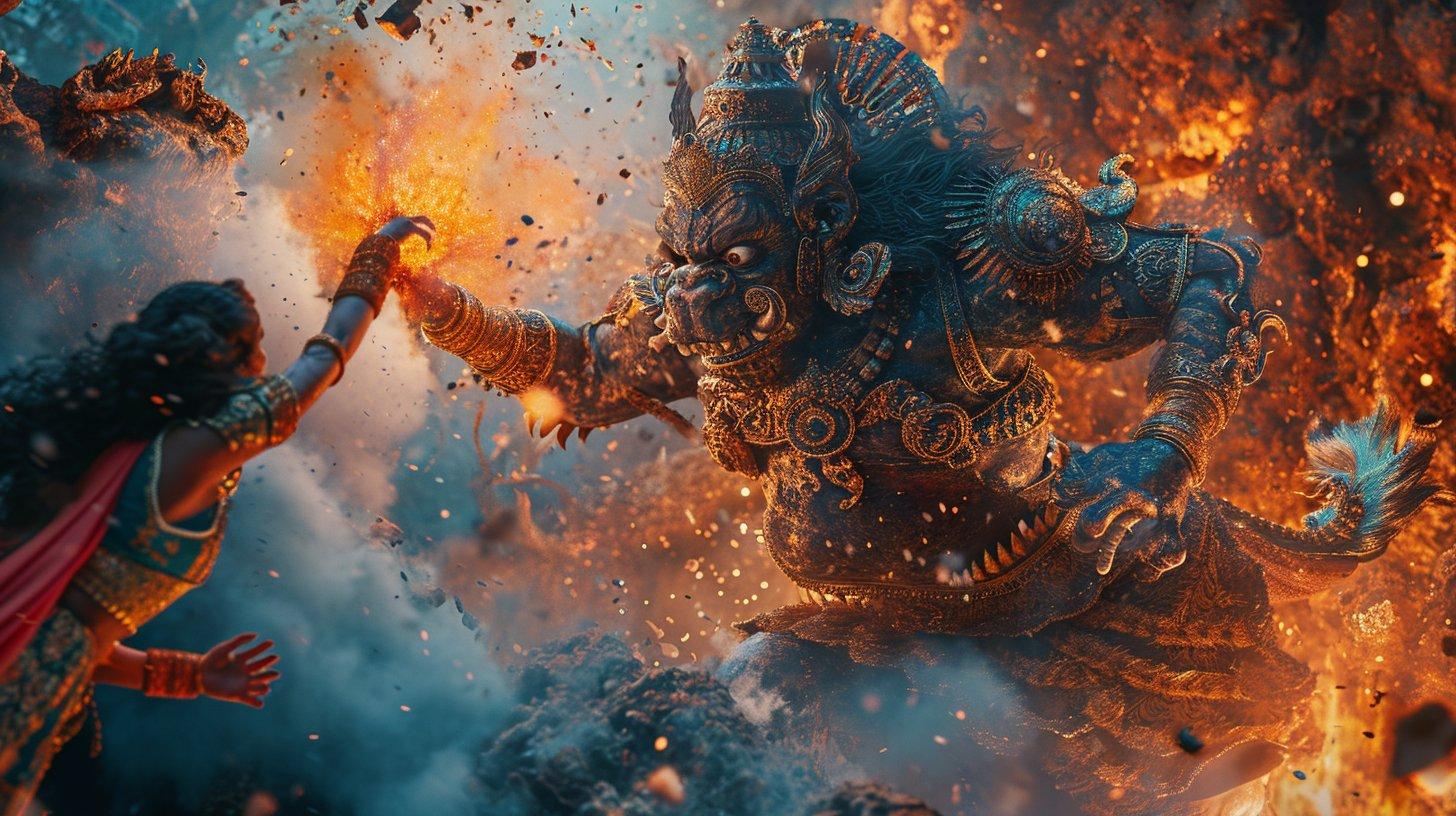
The demigod - Jatayu, the nephew of Garud, chases Ravana in order to save Sita, but is also overpowered by the immense strength of Ravana and gets tragically wounded in battle.
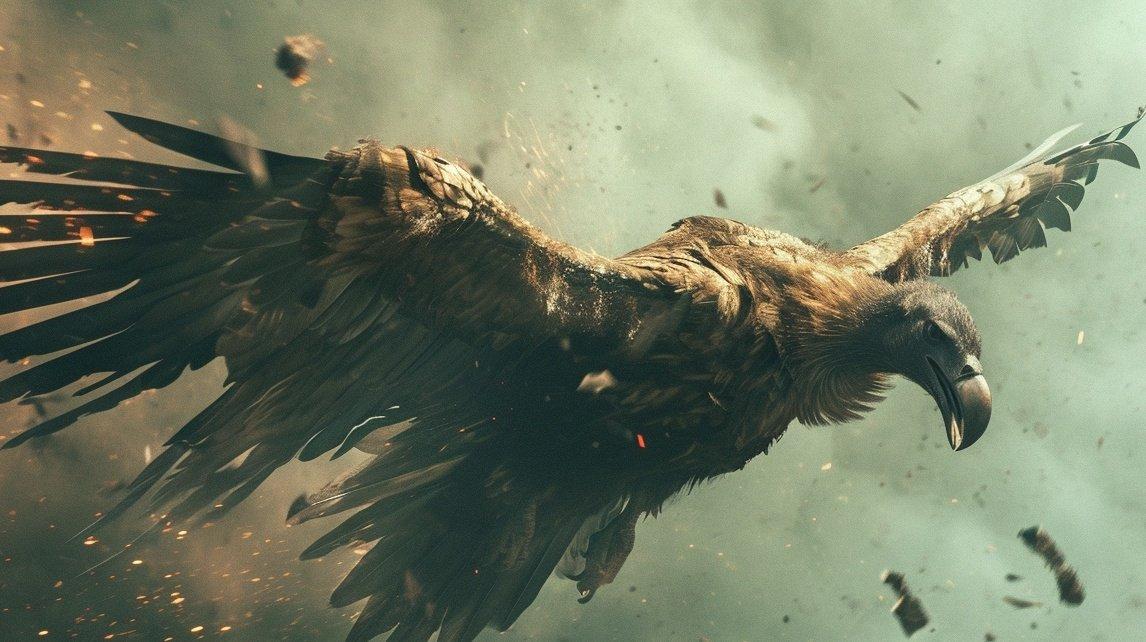

He brings her back to his fortified palace in Lanka. He places her in confinement, but doesn't lay a hand on her. Instead, she is given strict instructions and time to willingly convince herself to want to be with Ravana.
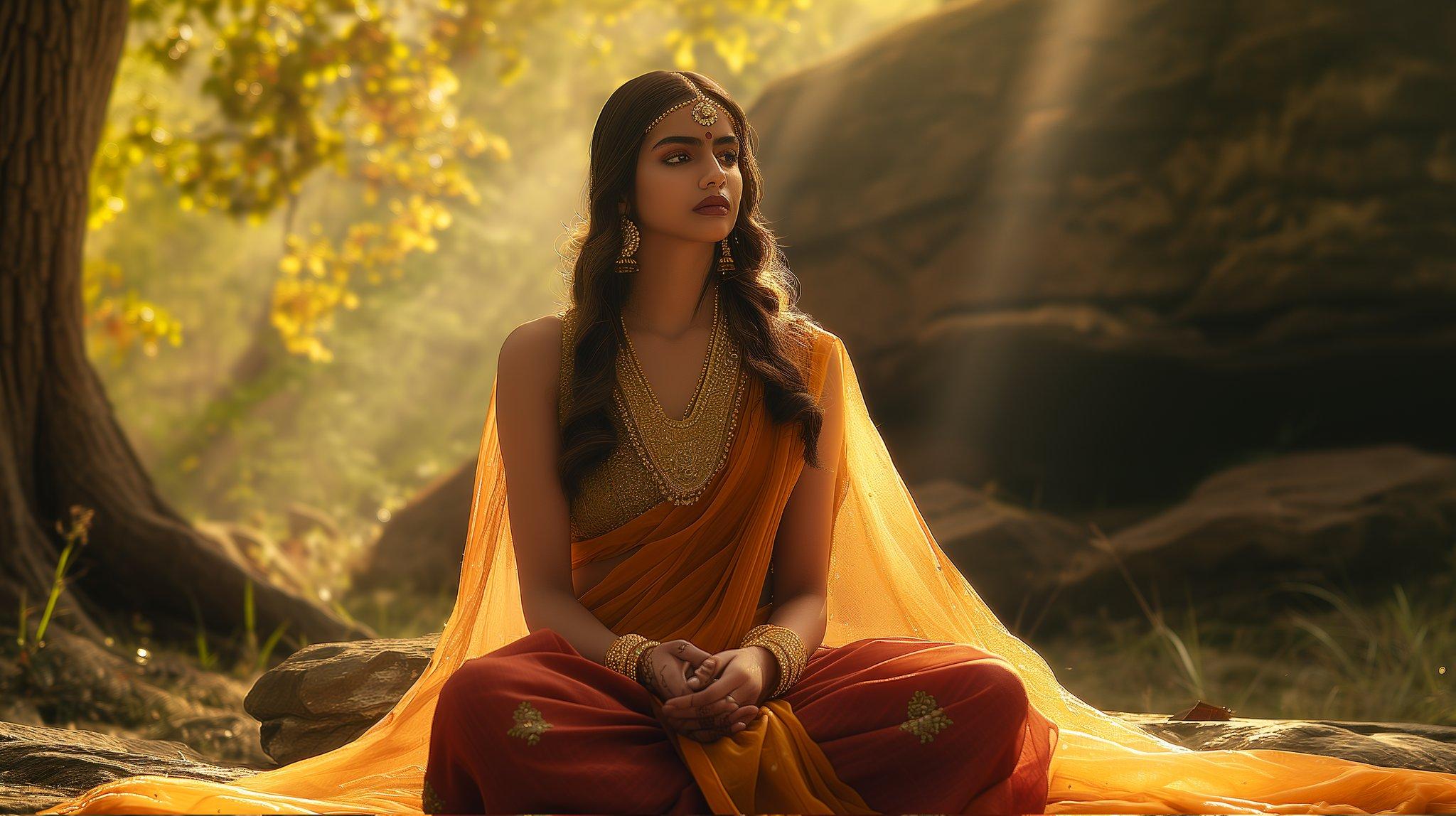
Rama and Lakshmana, through their search for a missing Sita, run into a wounded Jatayu in his last moments. He informs them that Ravana - the demon king of Lanka is the one who abducted Sita!
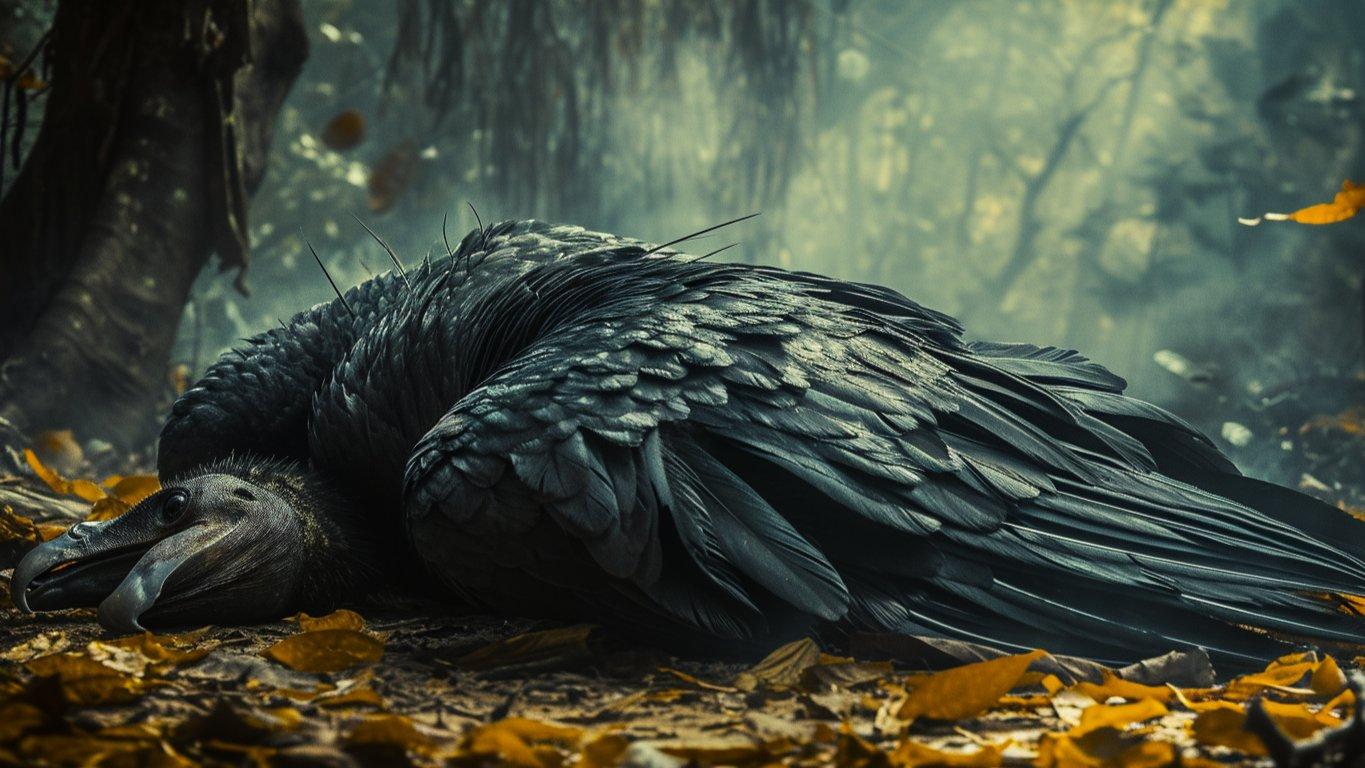
Soon, Rama and Lakshmana (in disguise) run into a sage in the forest who makes a point to showcase his intellectual prowess and knowledge of the Vedas.
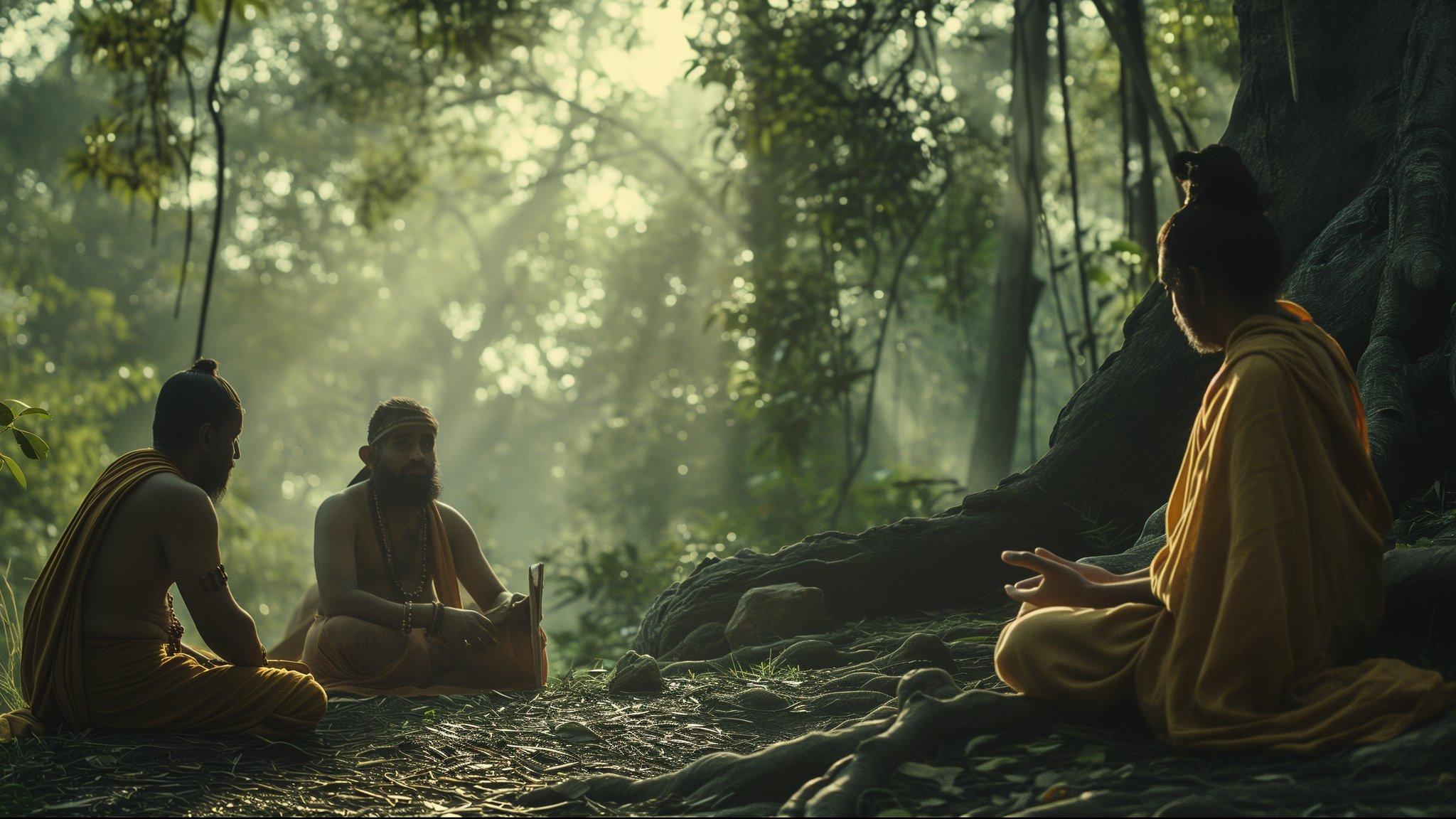
Upon revealing their true identities, Rama and Lakshmana inform the sage of who they really are. The sage then reveals himself to be Hanumana.
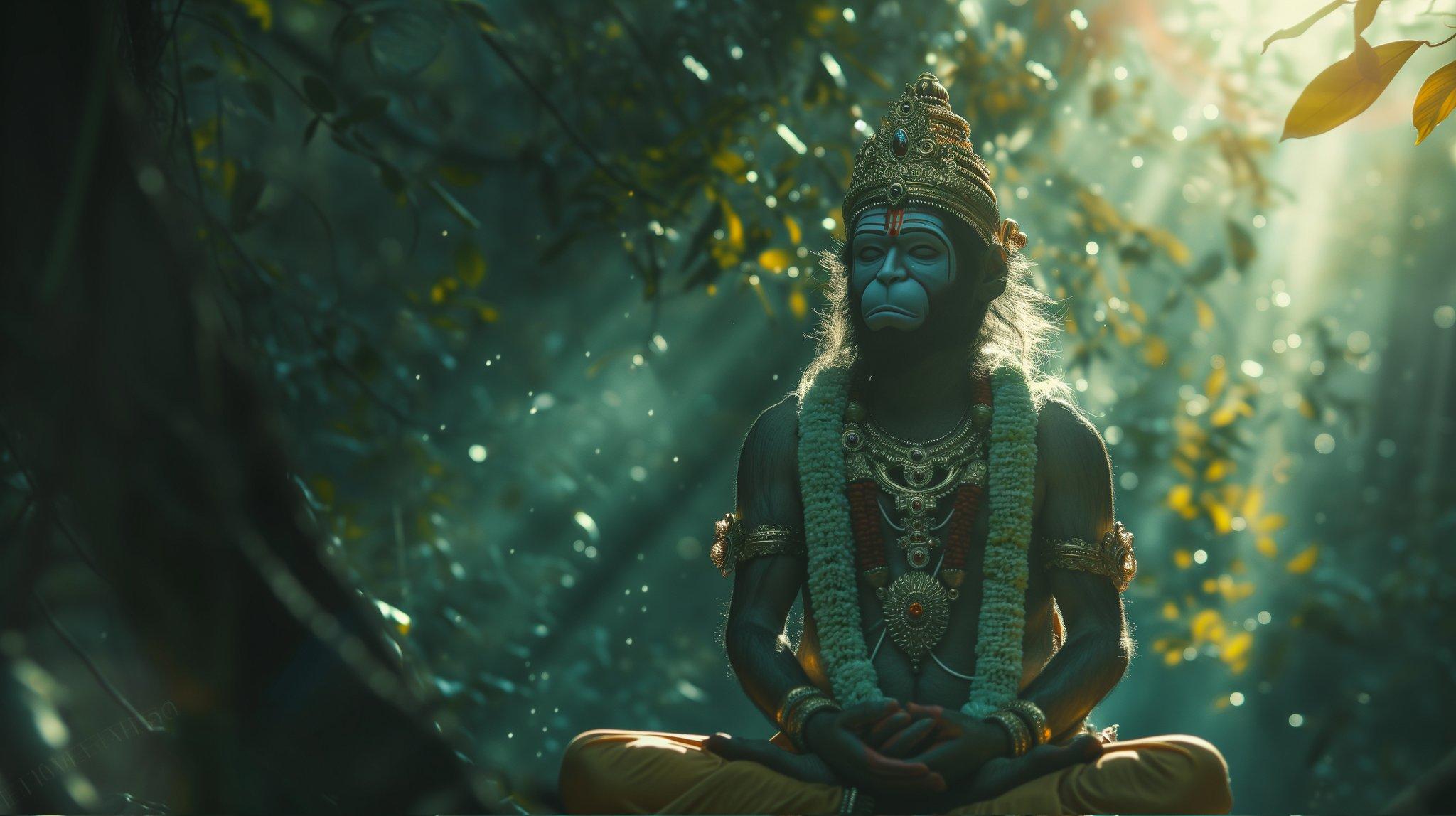
The brothers & Hanuman show each other their respect and admiration as Hanuman takes them further into the forest to meet the 'Vanar.'
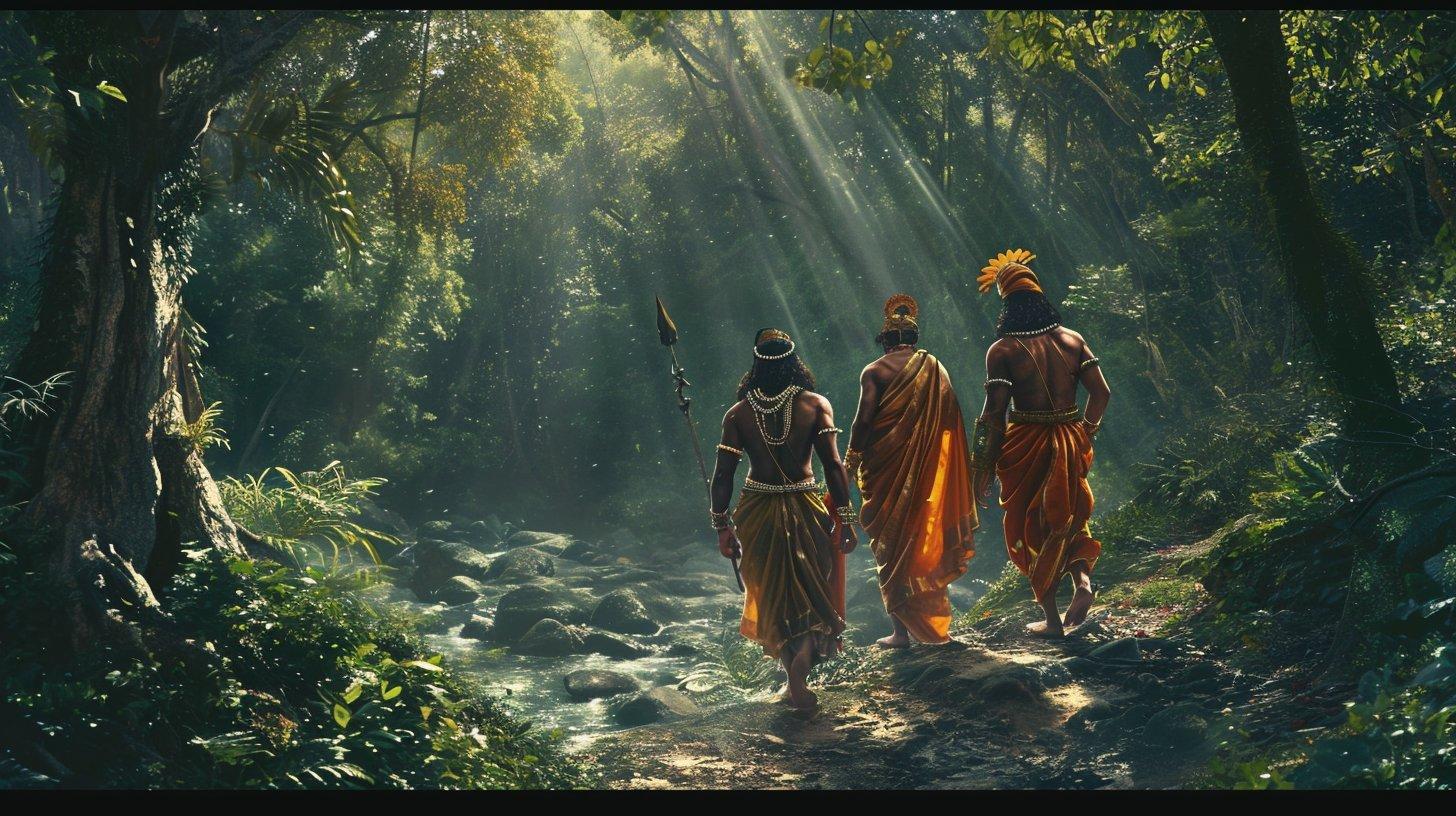
Rama & Sugriva form a pact, where Rama helps Sugriva regain his kingdom from his evil brother Vali. Vali would in turn provide Rama with his army of Vanar to help find Sita.
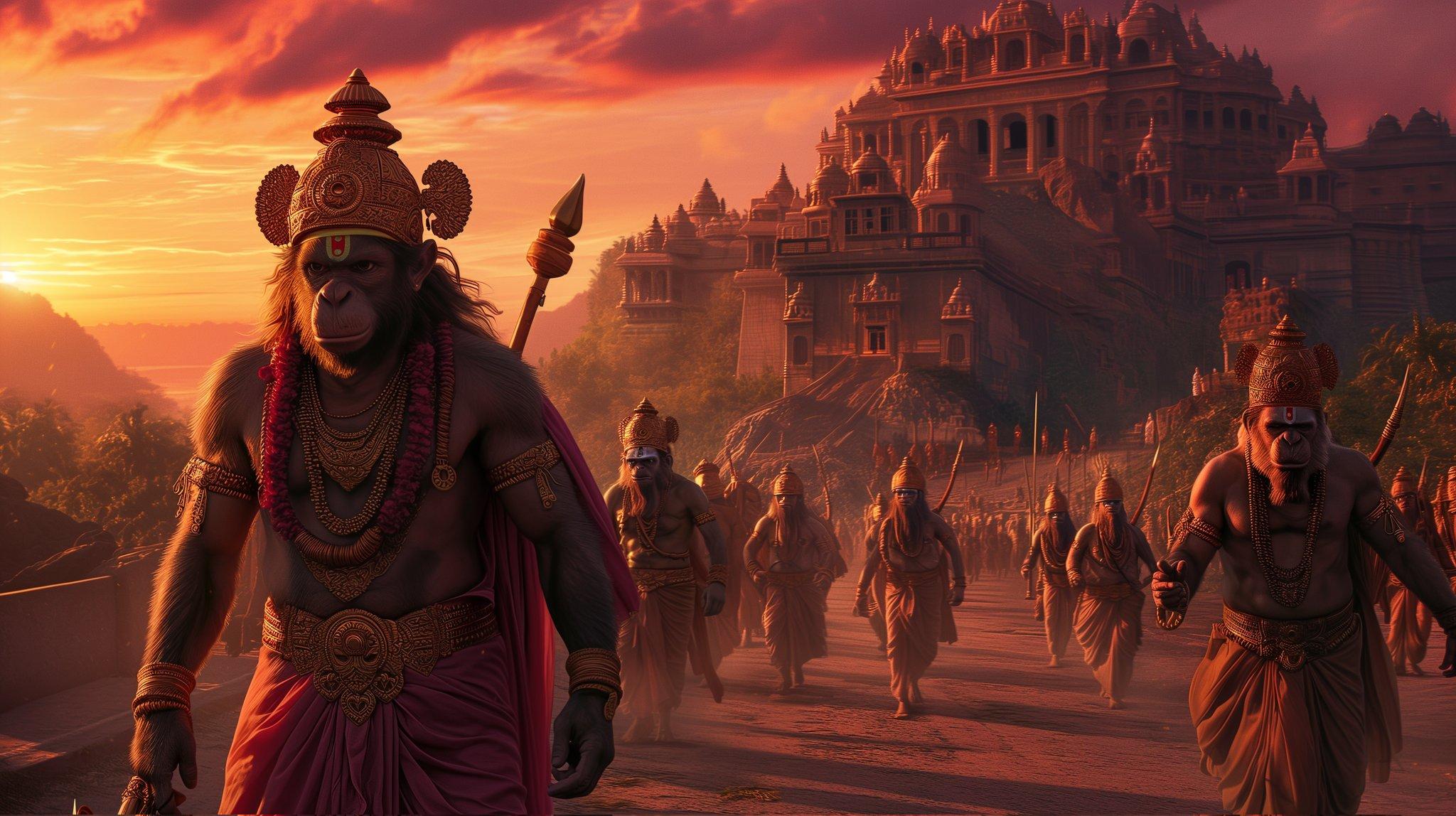
After living up to his promise, Rama, Lakshmana, Hanuman, and Sugriva mobilize the Vanar army - leading the quest for the search of Sita!
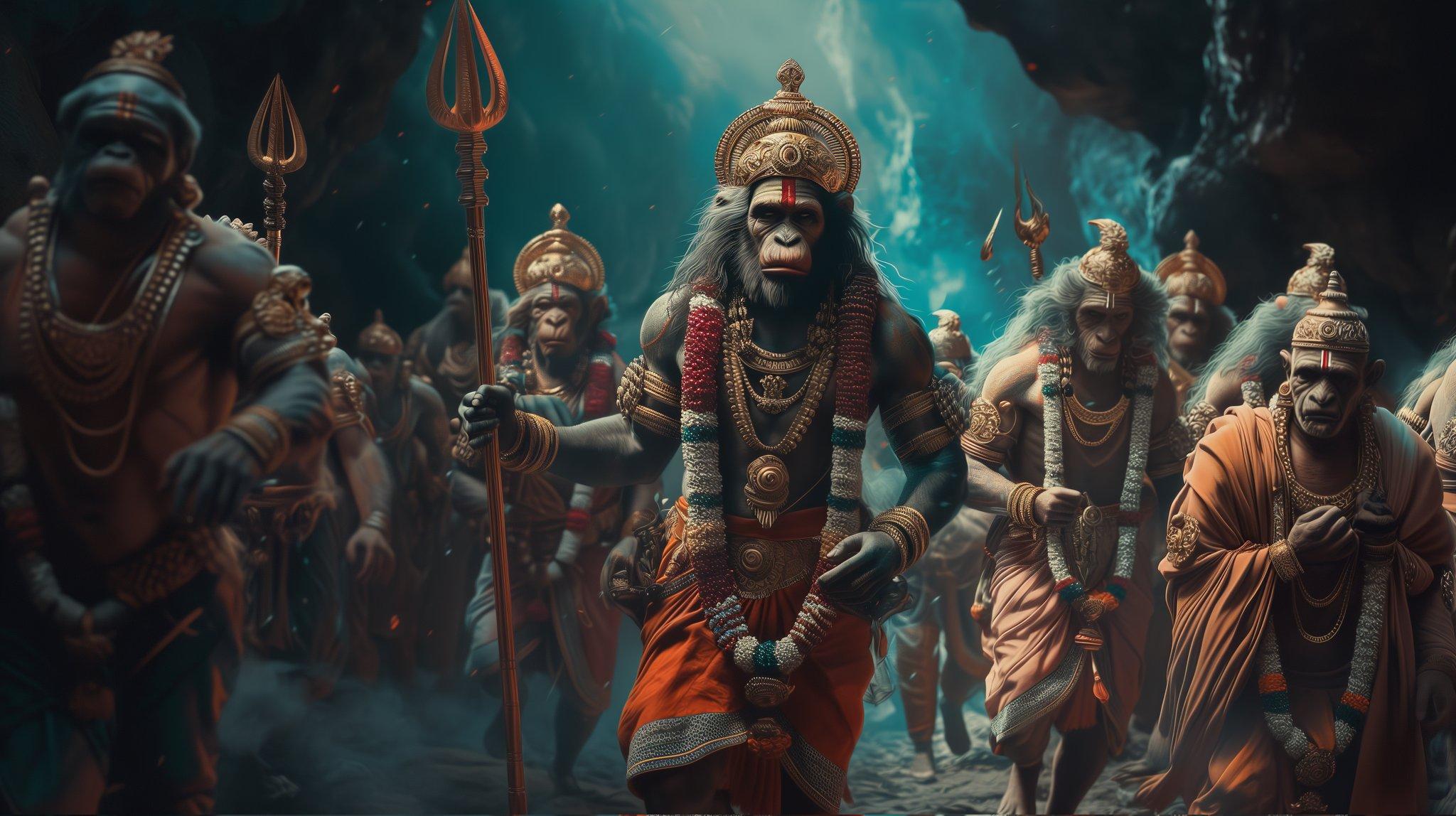
A tip from Sampati guides Hanuman in the right direction that Sita is being kept in Lanka. Hanuman, in his search for Sita, takes a mighty leap of 100 yojnas from Rameshwaram to reach Lanka.
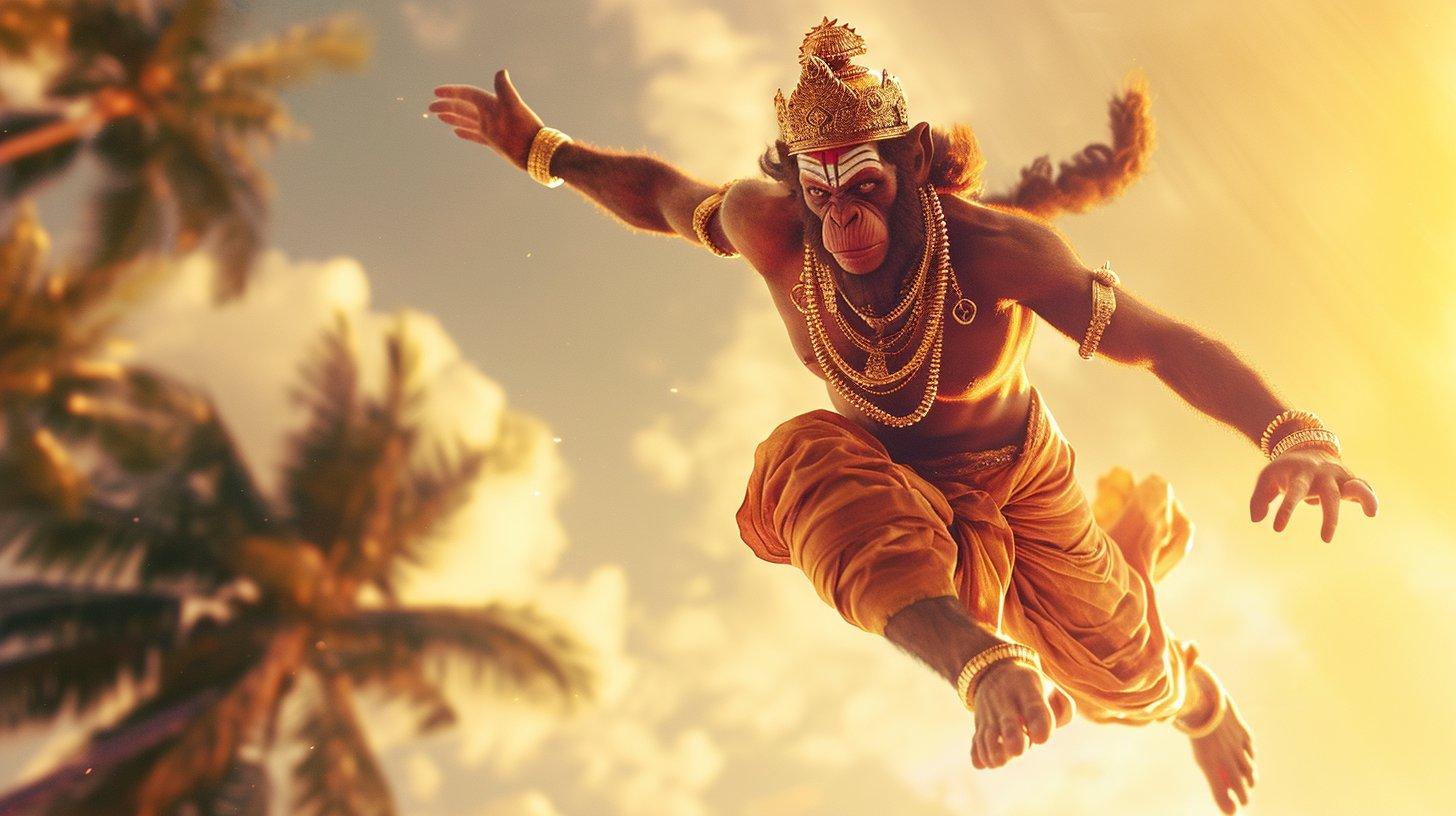
Hanuman, in his search for Sita, takes a mighty leap of 100 yojnas from Rameshwaram to reach Lanka. After sneaking into Lanka by disguising himself as a monkey, Hanuman discovers Sita in Ashoka Vatika, under a tree. Guarded, and in despair.
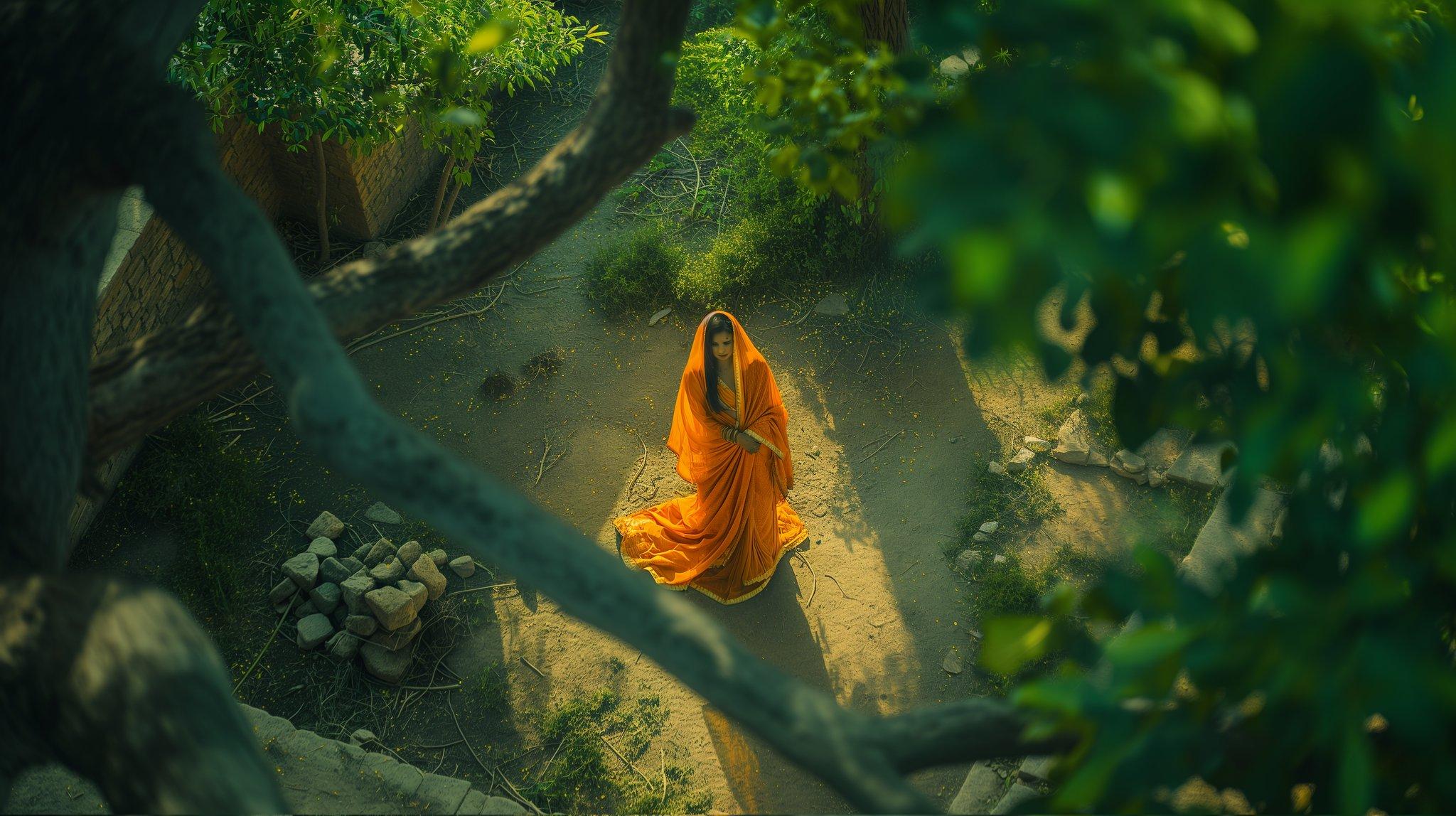
While initially distrusting the stranger, Sita ends up believing Hanuman when he presents to her a golden ring given to him by Rama - proof of his allegiance. Hanuman recounts Rama's grief and efforts to rescue Sita from Lanka. Sita in turn gives Hanuman her choodamani (jewel) to present to Rama as a message of her well being.
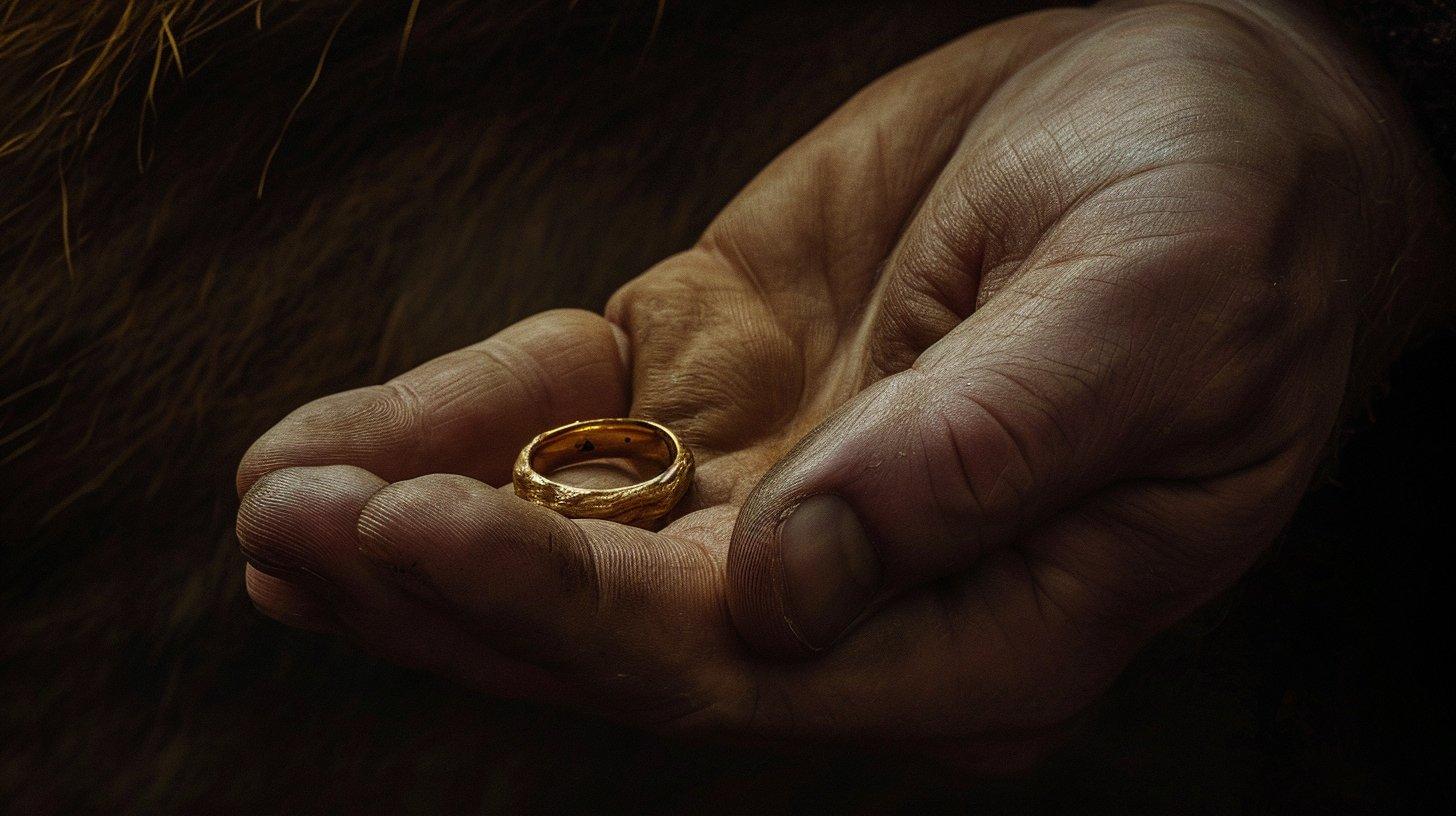
Upon exchanging souvenirs, Hanuman assured Sita of Rama's imminent arrival, and left. While leaving he caused a great disturbance due to his massive size. Ravana's son, Indrajeet, captures Hanuman with a mighty Bhramastra.
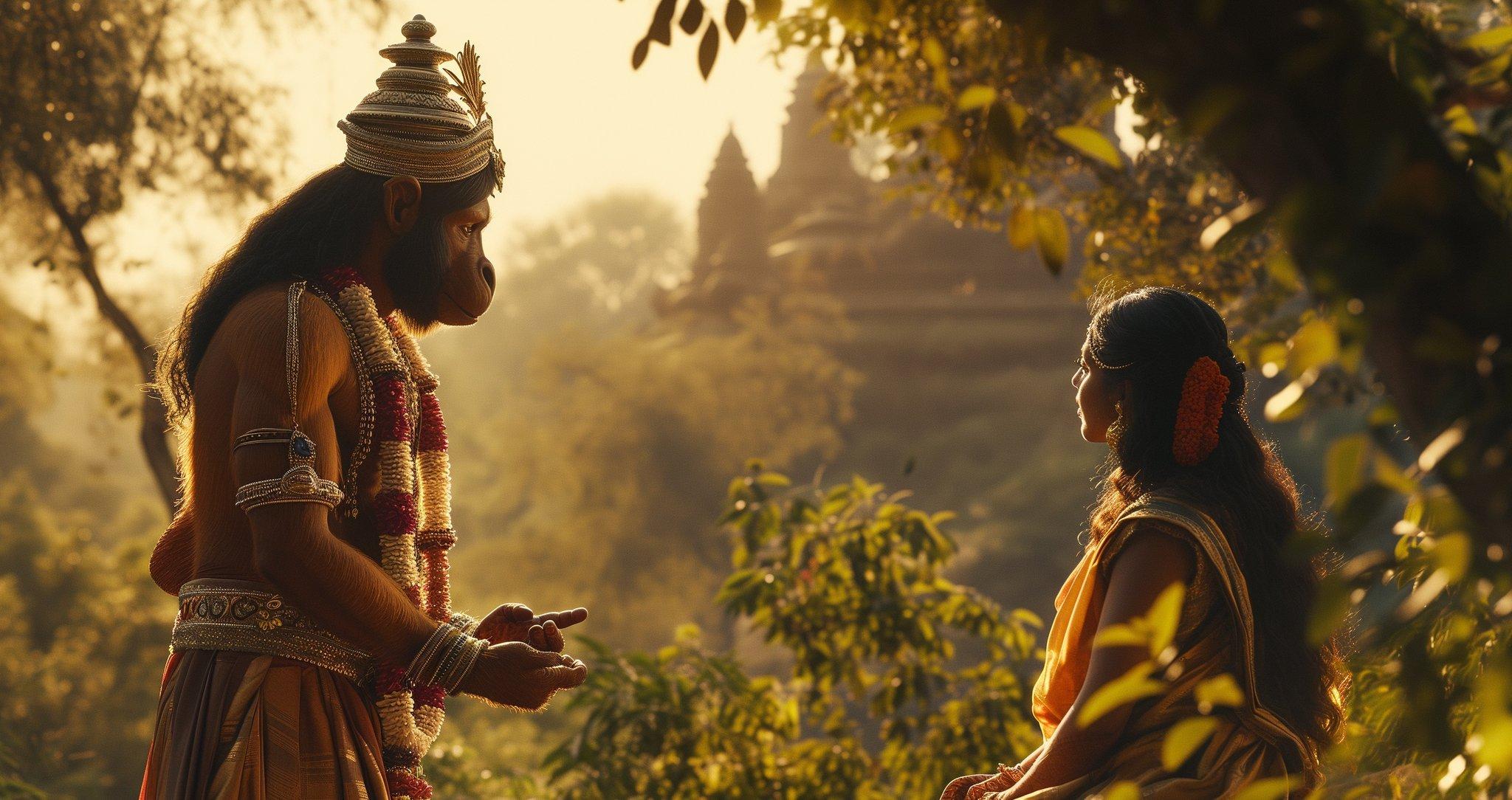
After being captured, and brought to Ravana's court, Hanuman confronted Ravana. Ravana in-turn ordered Hanuman's tail to be lit on fire.
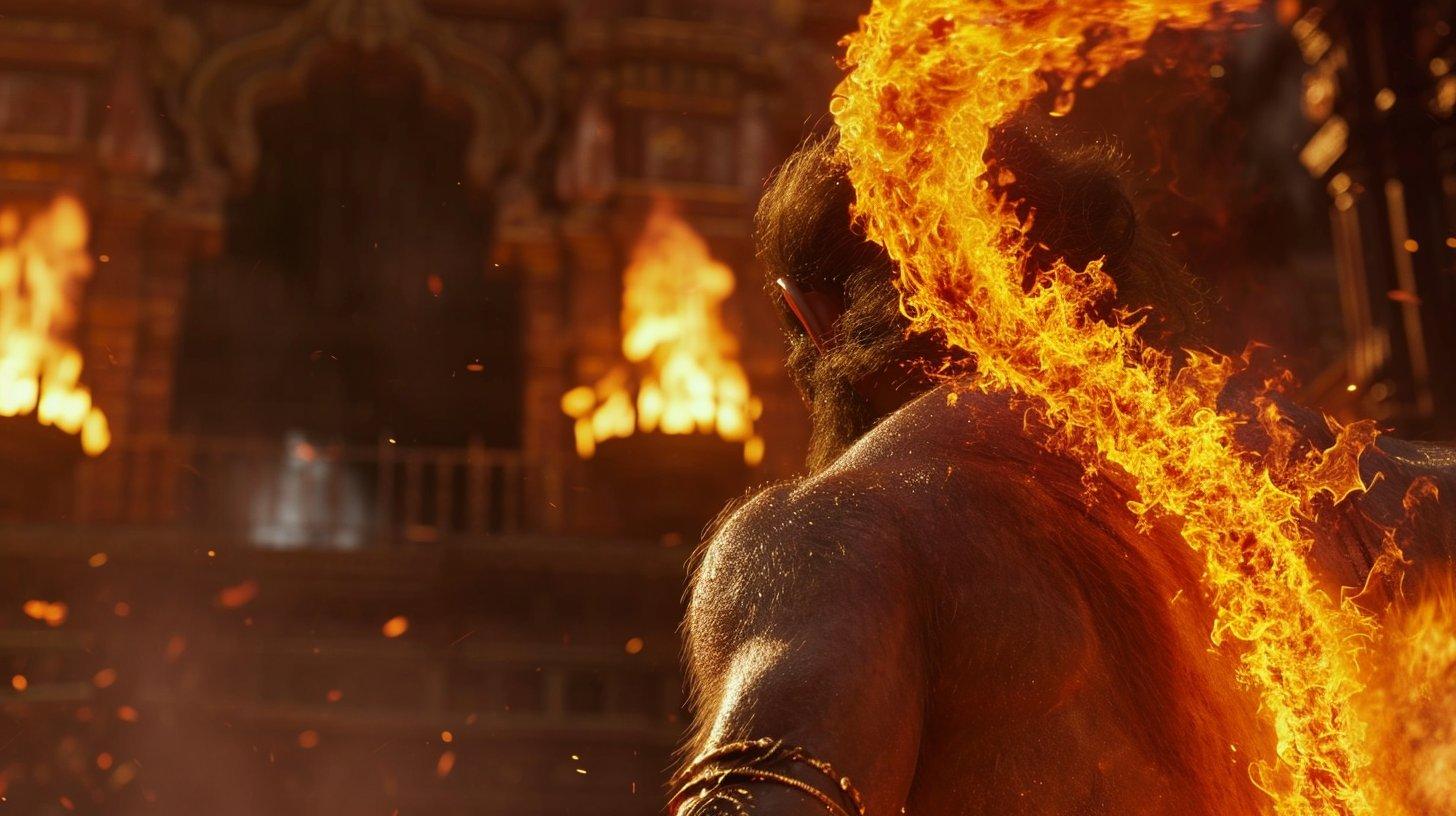
Hanuman, out of anger, uses his tail to light Ravana's entire palace on fire. Causing a great amount of destruction and panic throughout Lanka!
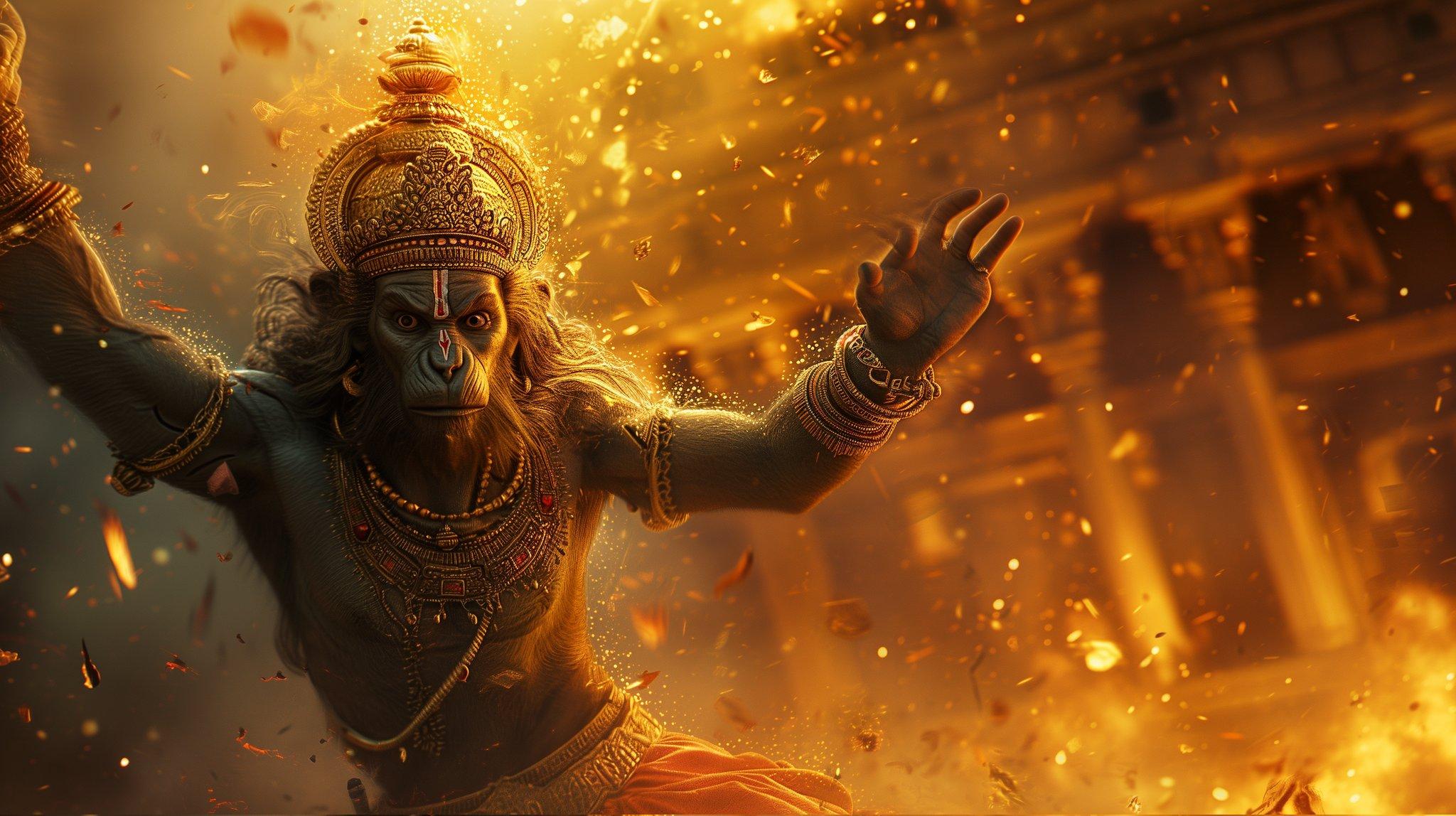
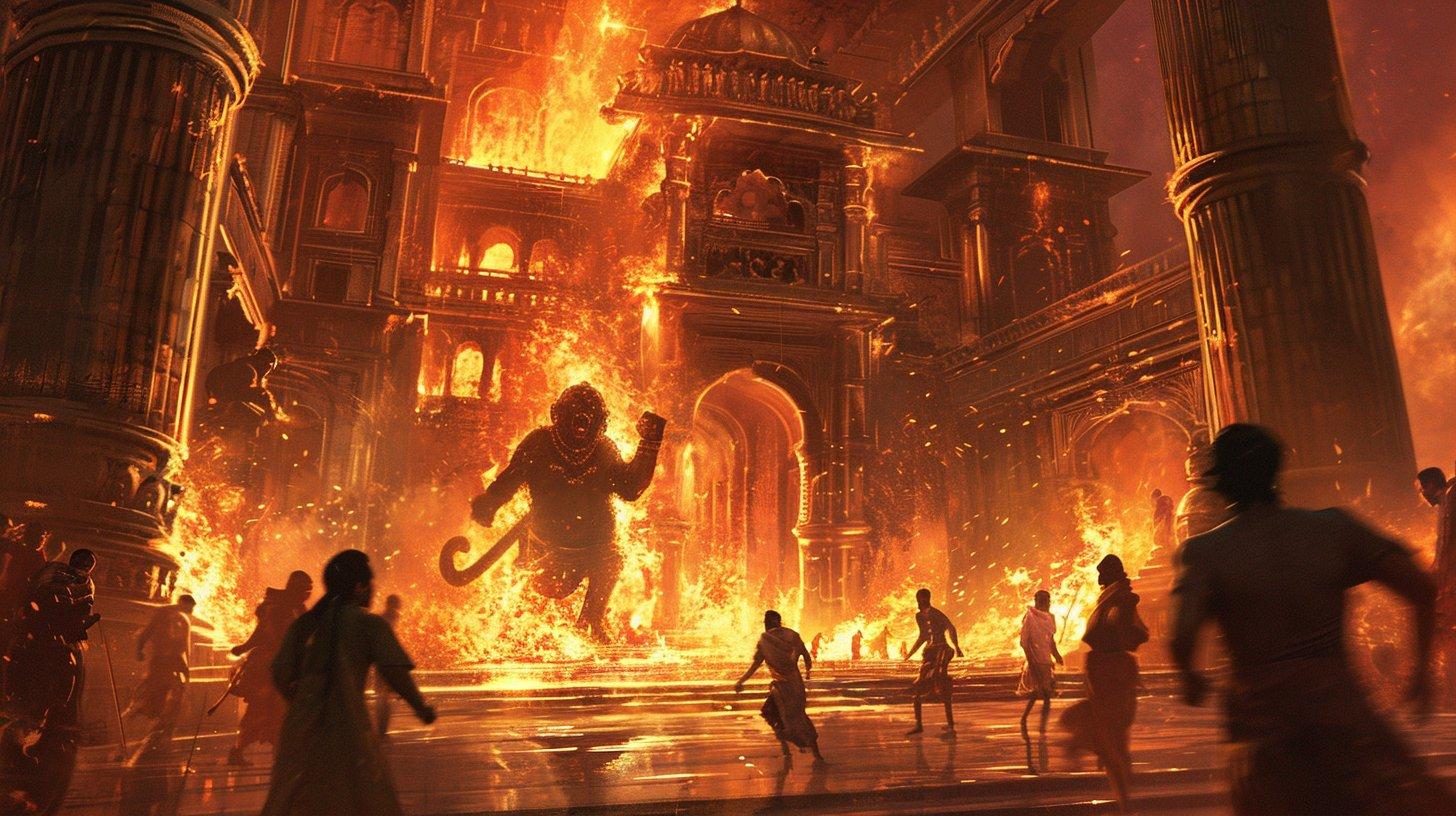
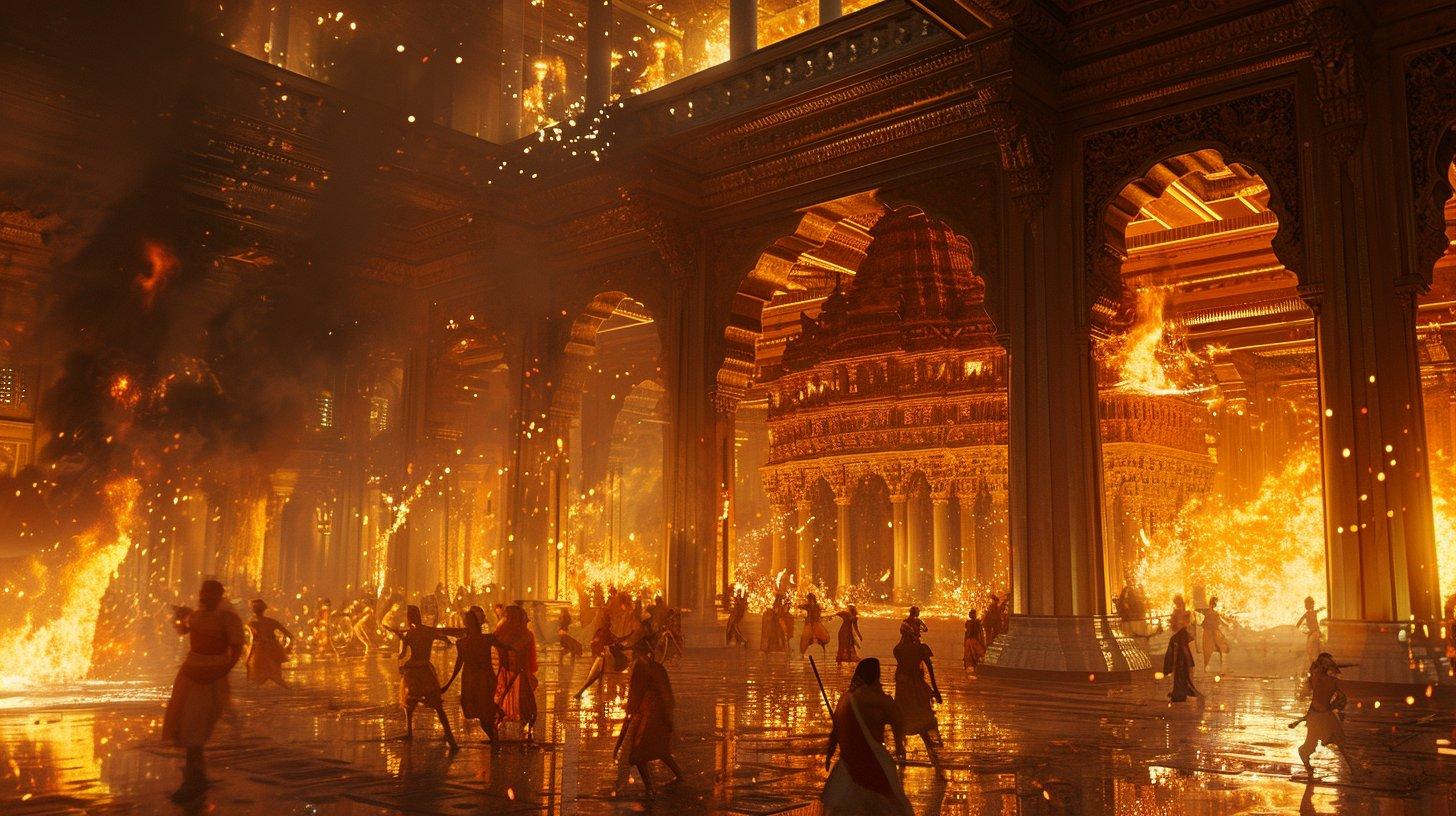
Hanuman then safely leaves the ruined palace and returns to Rama, to whom he presents Sita's choodamani.
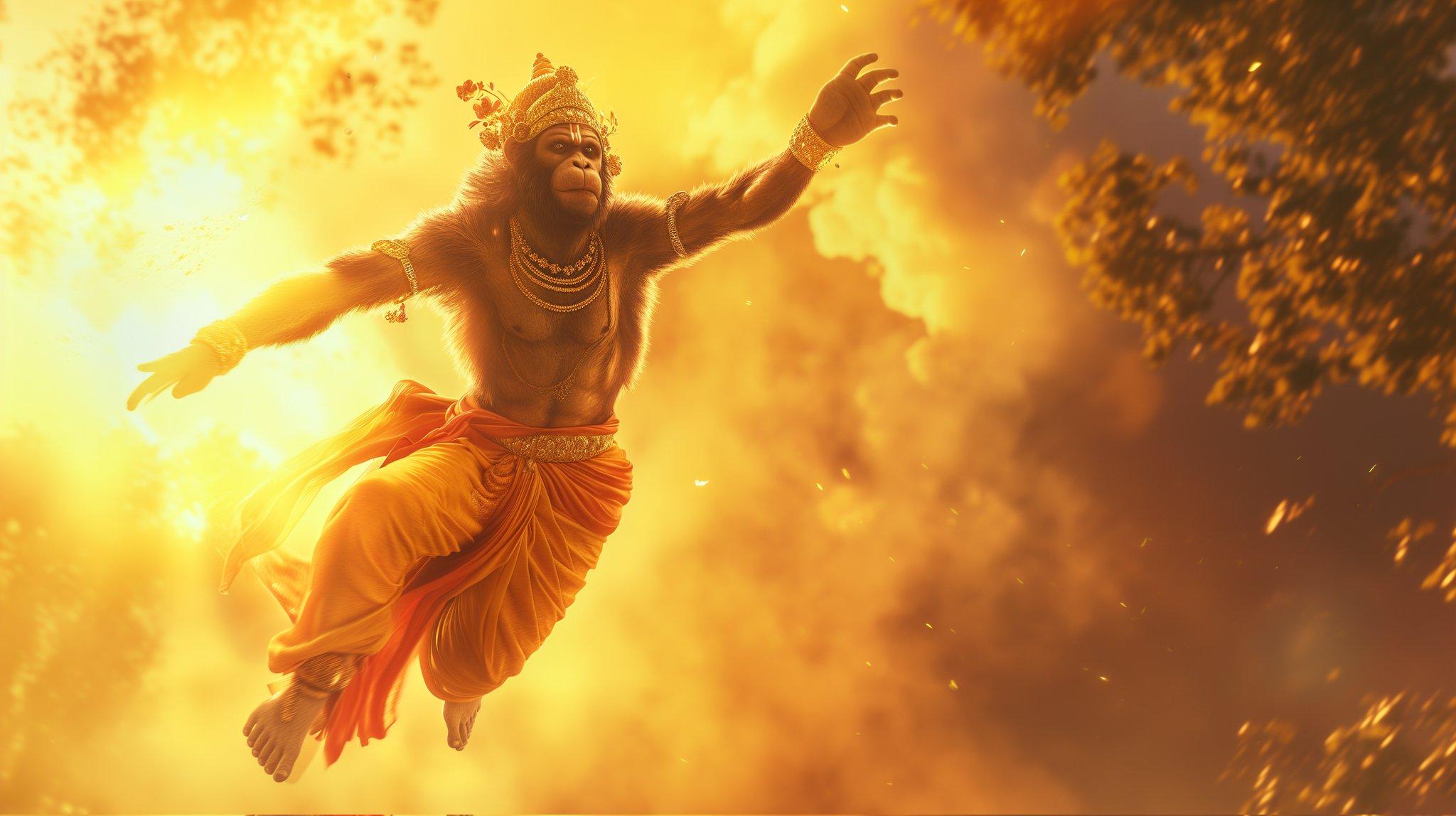
The Lanka burned for a long time, before the flames settled down, leaving irreparable damage...
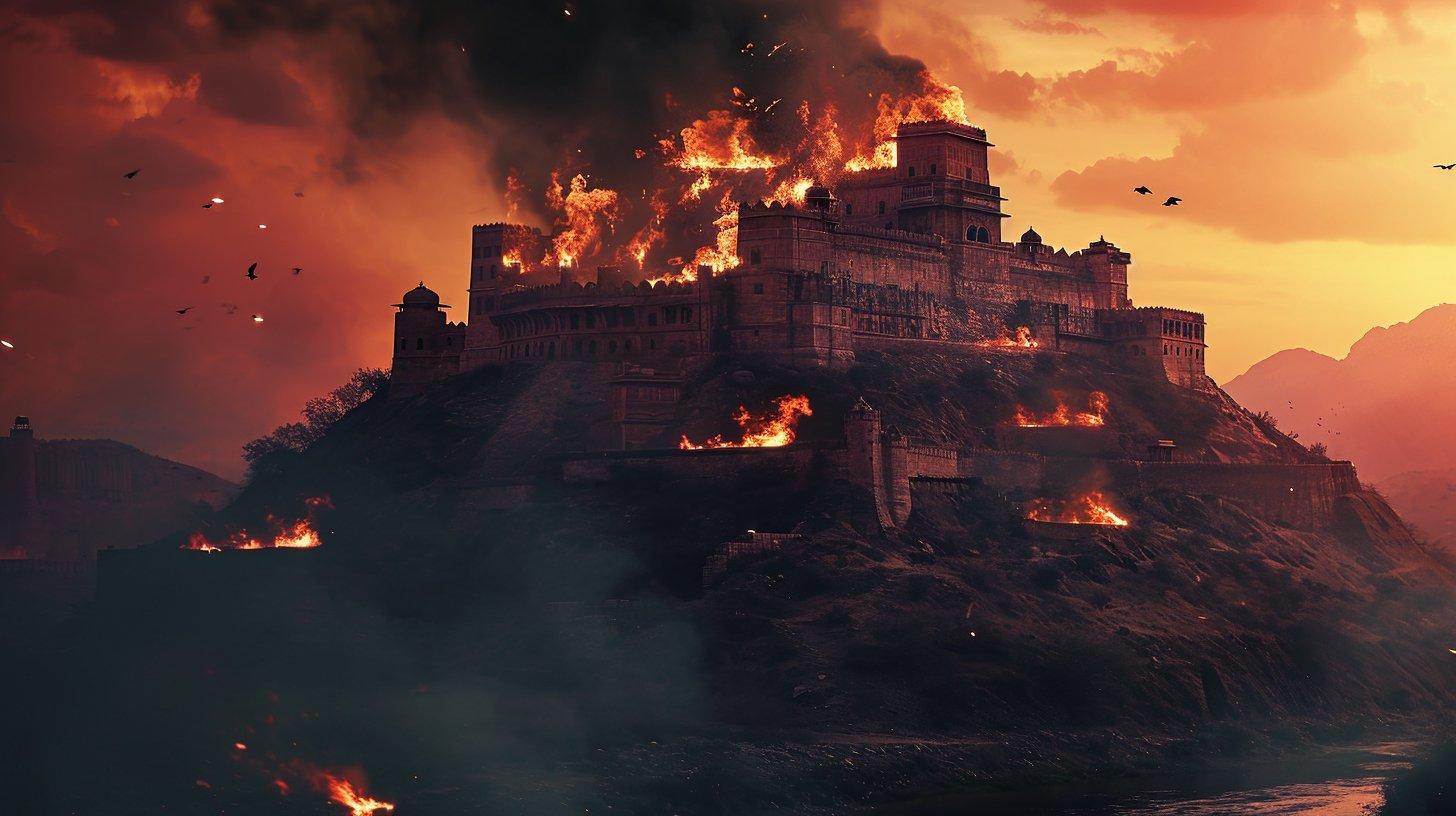
After Hanuman's exit, Vibhishana - Ravana's younger brother - had a change of heart and demanded that Sita be released immediately! Seeing that his elder brother Ravana is not willing to do so, Vibhishana abandons Lanka and finds himself joining hands with Rama. Who readily accepts him.
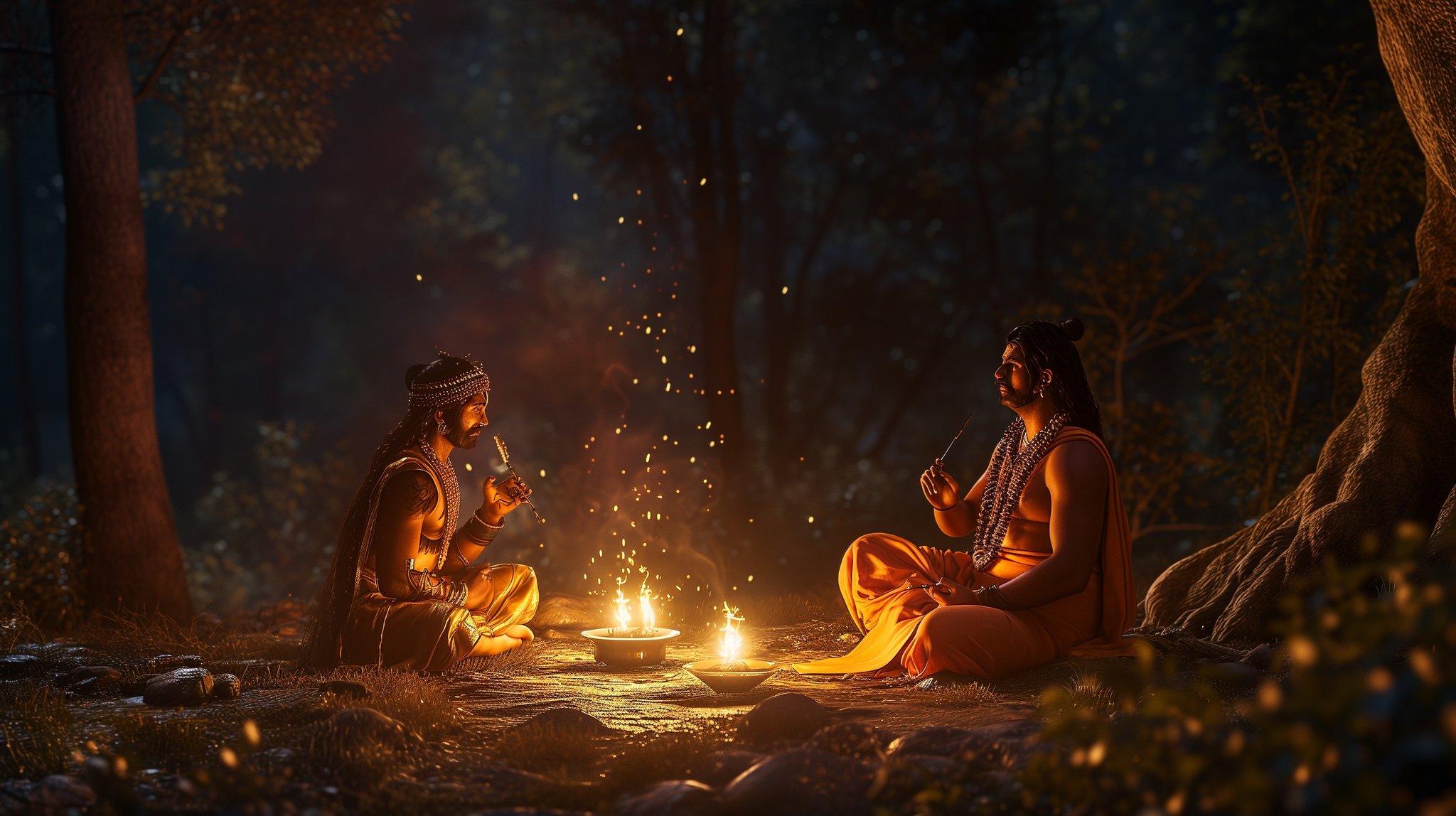
Upon reaching the southern tip, the army realises that it would be impossible to cross the river without a bridge. The Vanar sena then throws rocks into the sea to create a bridge of rocks with Rama's name written on them.


The army then proceeds to cross the Ram Setu bridge!
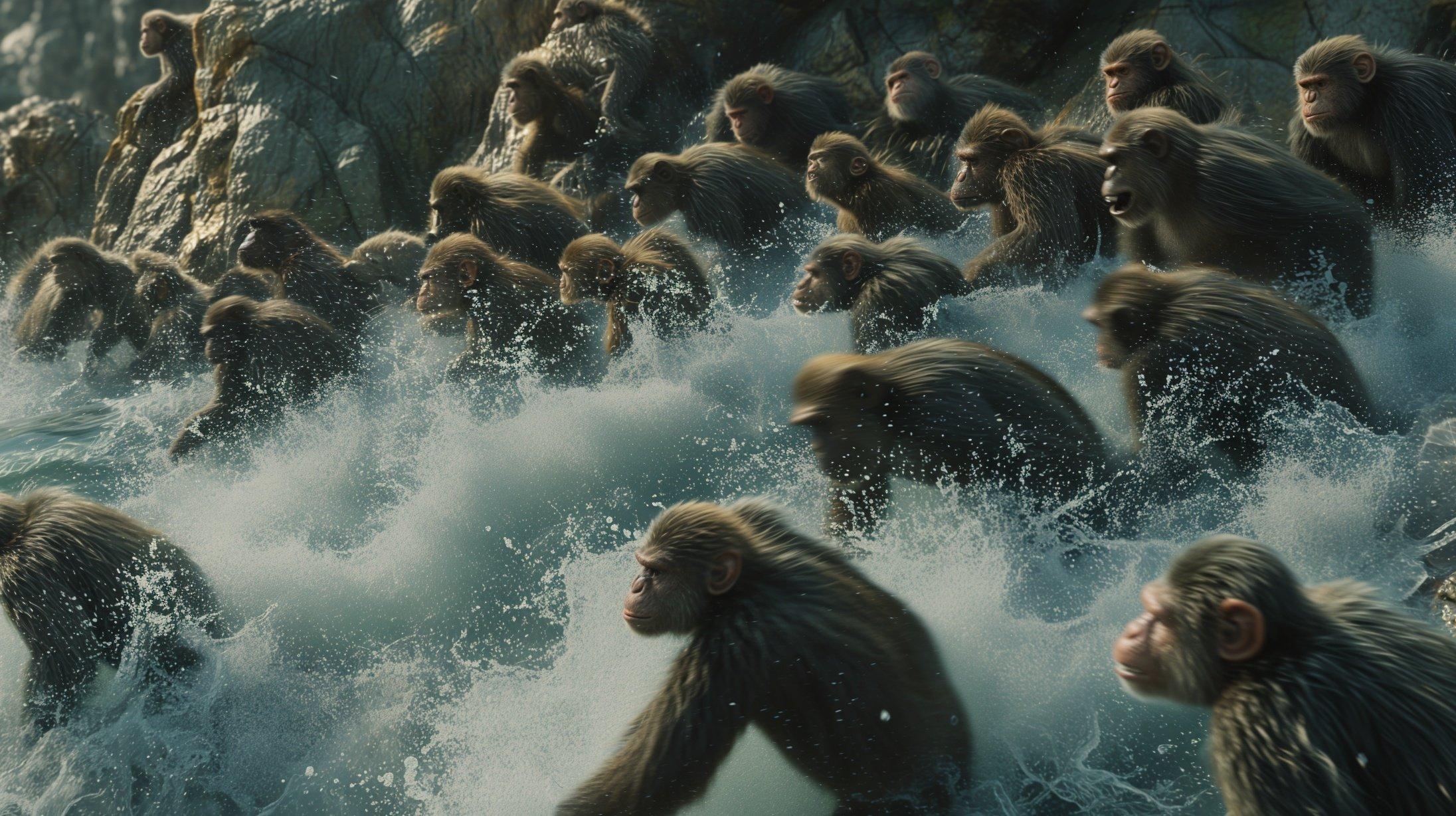

As the day of the battle draws closer, Rama and his commanders draw plans and strategize.
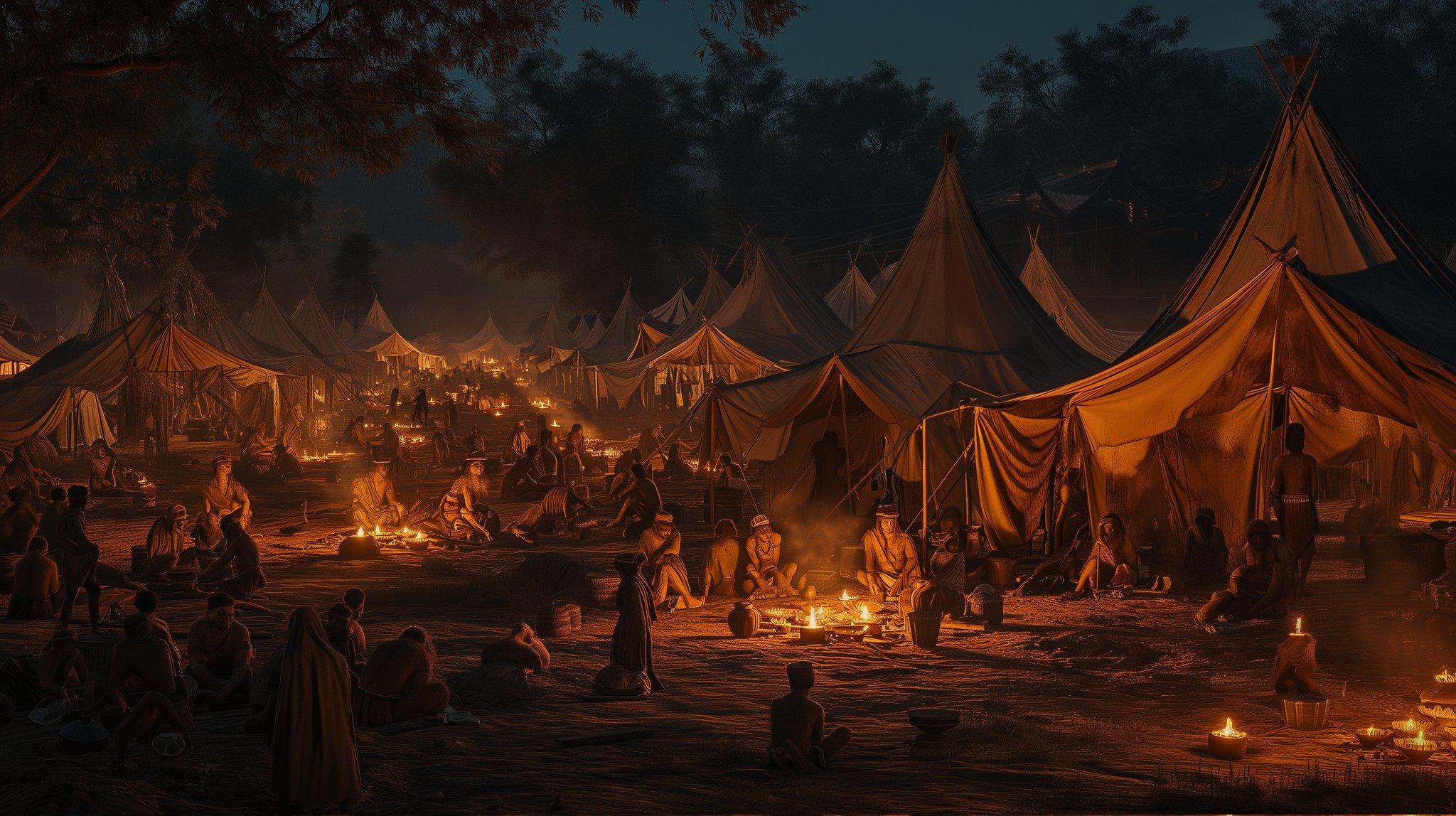
As the war begins, the giant Kumbhakarna is awoken to cause great damage to the Vanar army! Rama confronts, and eventually kills Kumbhakarna!
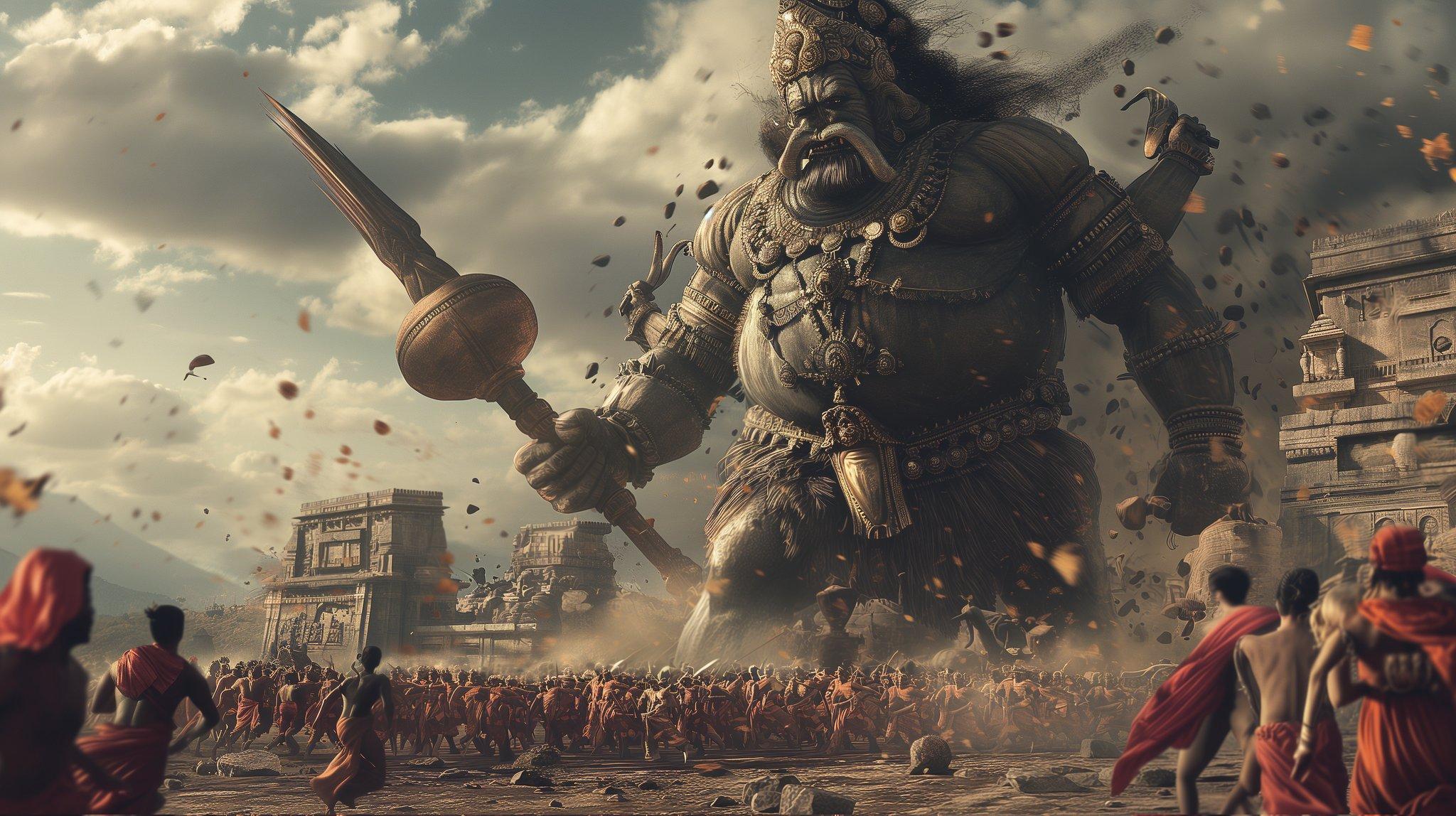
In order to cure a severely wounded Lakshmana - at the hands of Ravana's son Indrajeet - Hanuman is dispatched on a mission to procure the 'Sanjeevni Herb' from the Himalayas. Unable to find the specific herb, Hanuman carries the entire mountain back to the battlefield! Eventually helping heal and recover Lakshmana.
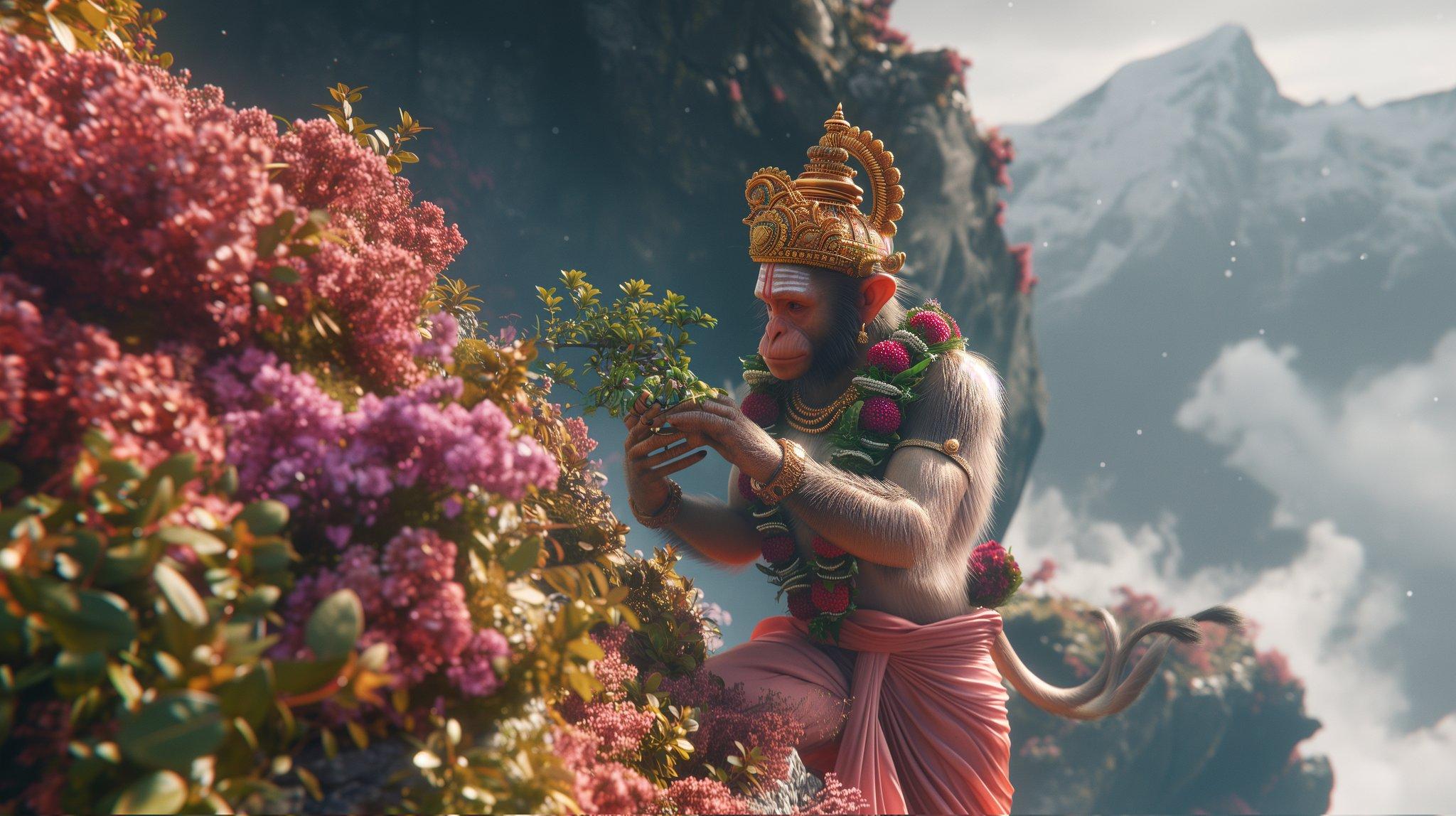
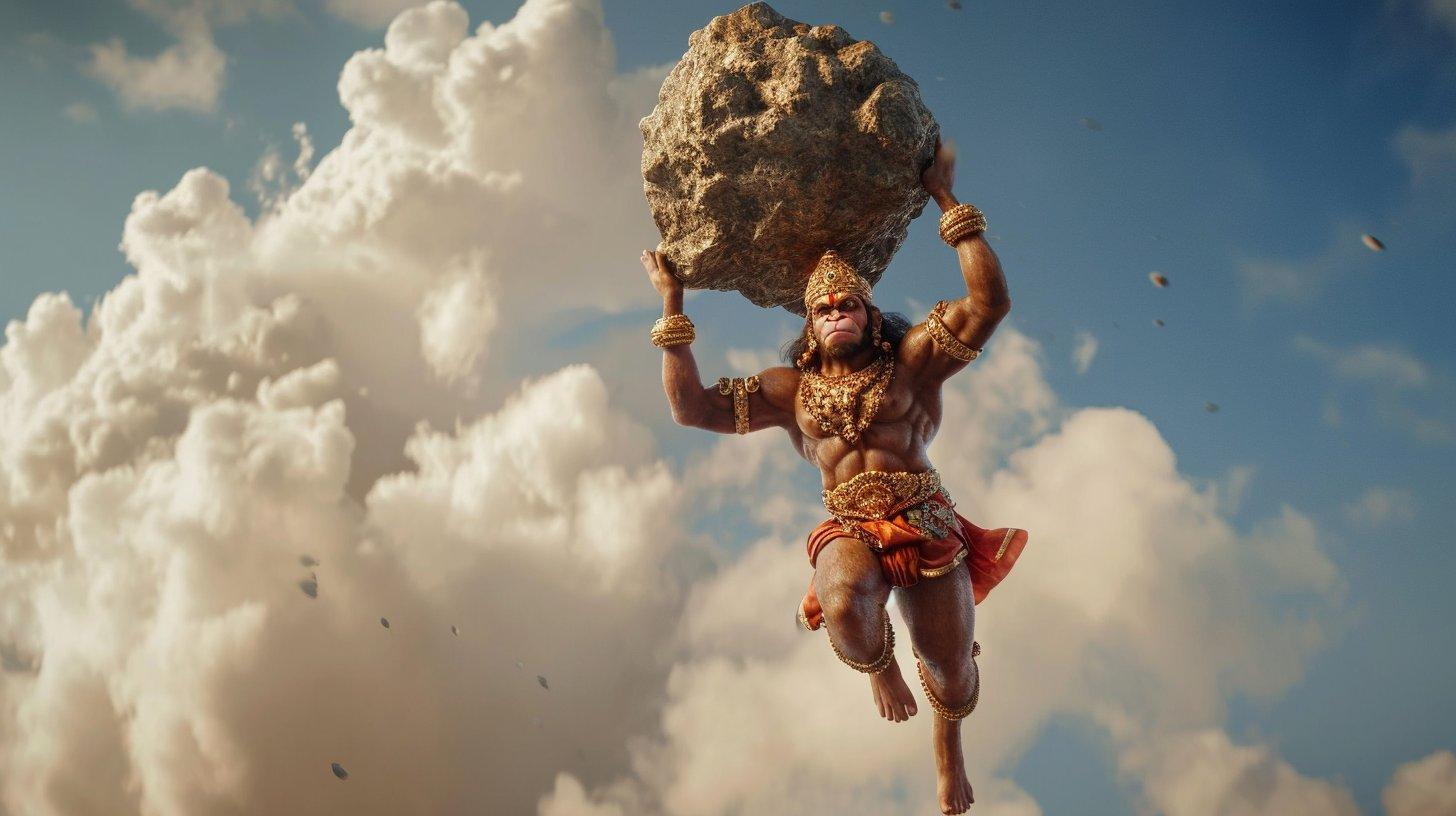
After recovering, Lakshmana goes on to kill Indrajeet. Ravana, unable to bear the loss of his son, gets outraged to an extreme extent!! Causing chaos and destruction towards everything in his path!
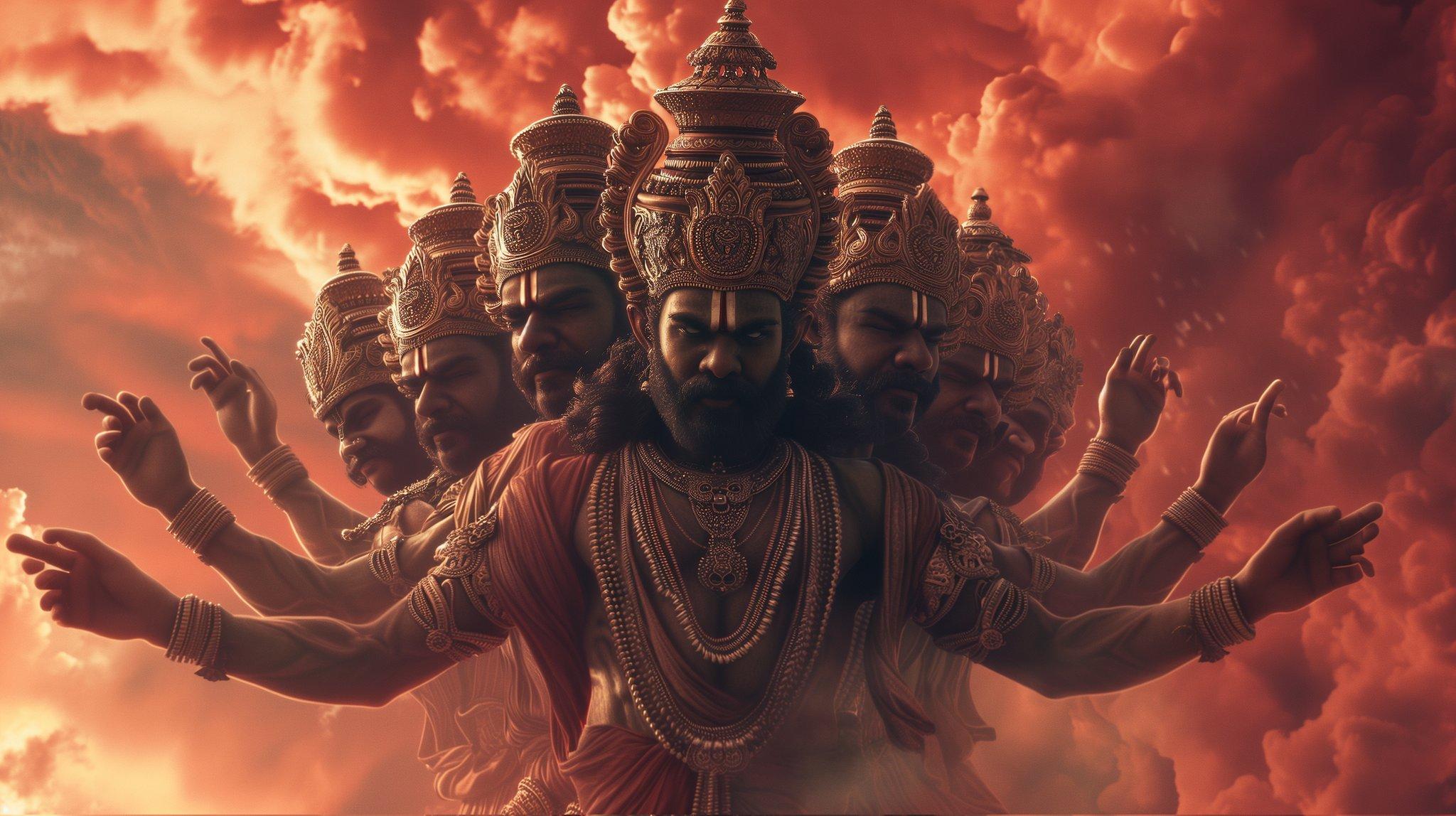
Ravana ATTACKS!
The first in a long series of attacks from him to Rama.
Both of them exchange blows, each surpassing the other.
Ravana with the boon of Shiva's power puts up a tough fight for Rama!
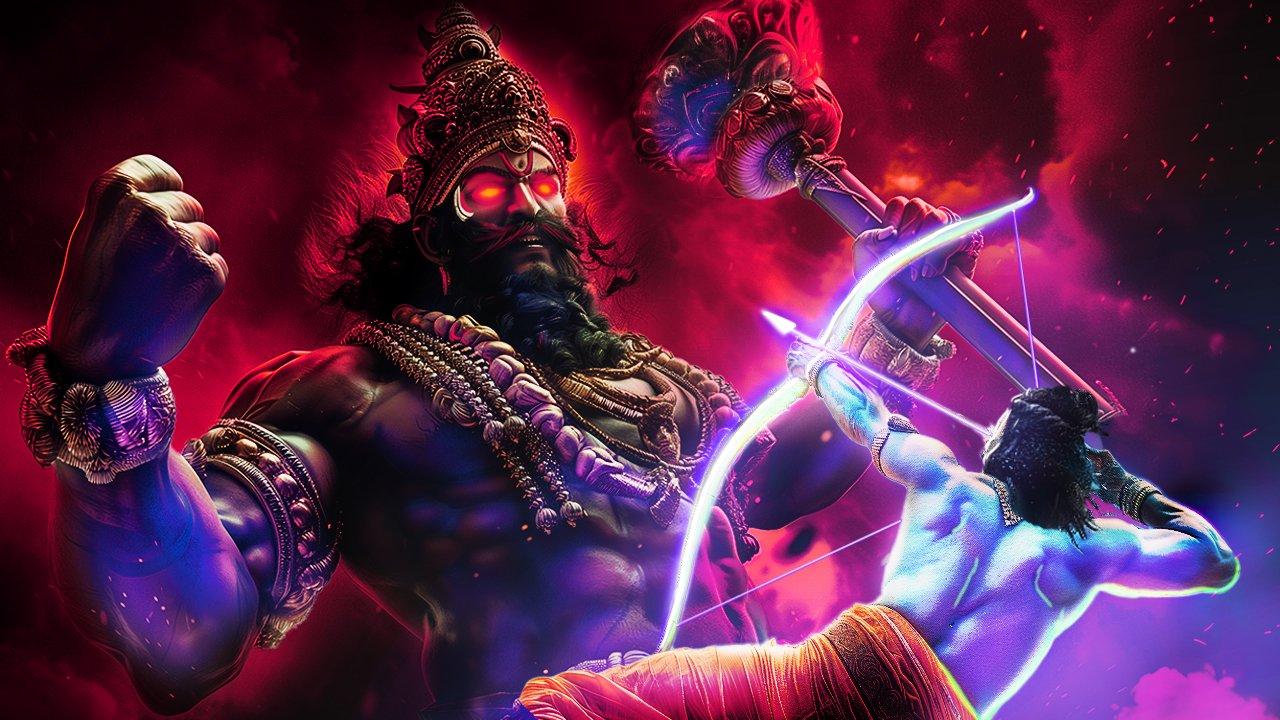
To assist Rama in his fight against Ravana, lord Indra sends his personal bow and arrows. Rama stands upon the divine chariot Matali and uses it to gain a vantage point over Ravana. Using the powerful Brahmastra given to him by sage Agastya, Rama shoots and fatally wounds the Evil Demon King of Lanka. Marking an end to Ravana's reign of terror.
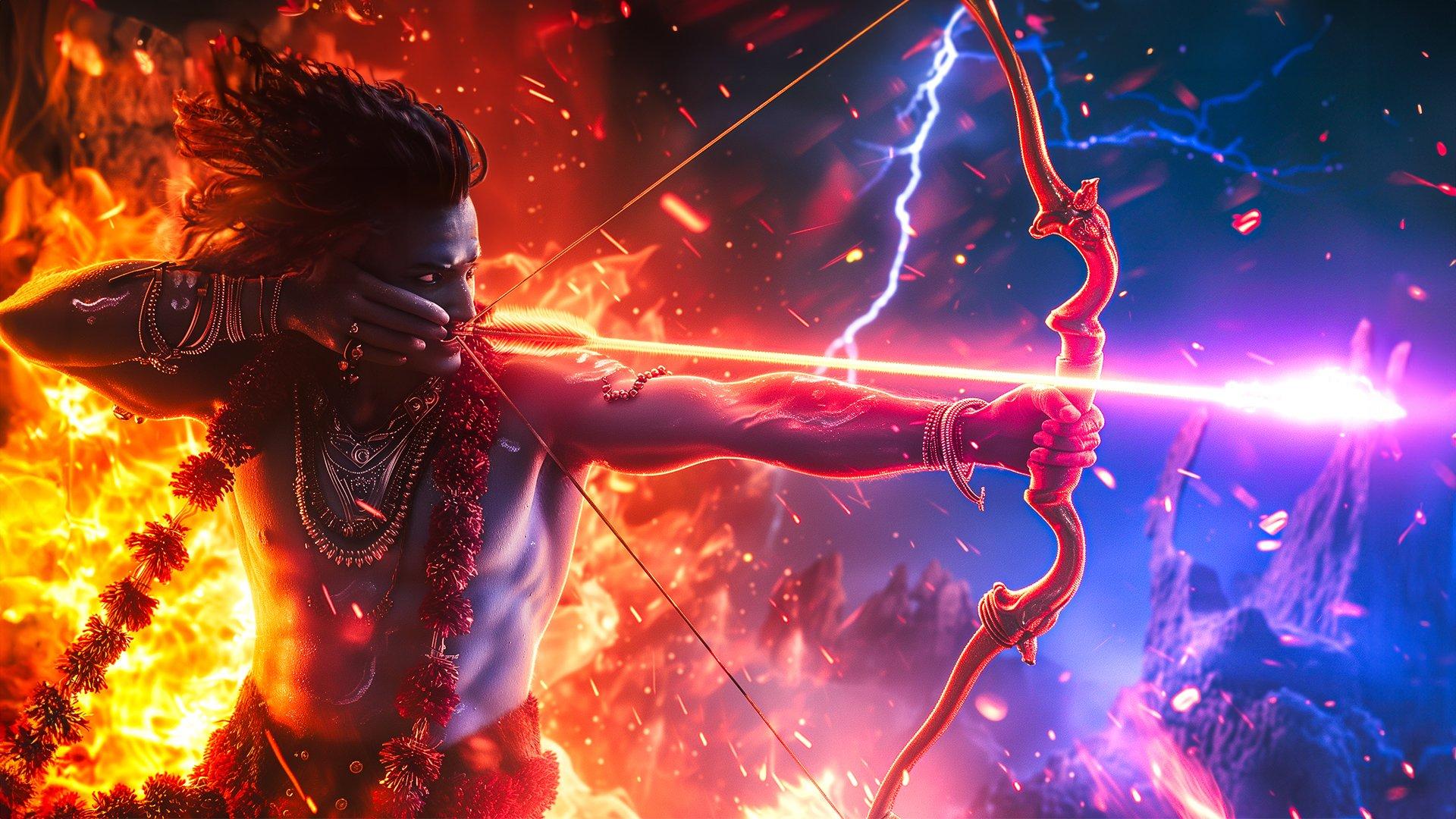
Rama, Sita, and Lakshmana return safely to Ayodhya from the Pushpak Viman. Upon their return to Ayodhya, the entire city is decorated with beautiful flowers, and rangoli colors, and lit up with oil diyas!
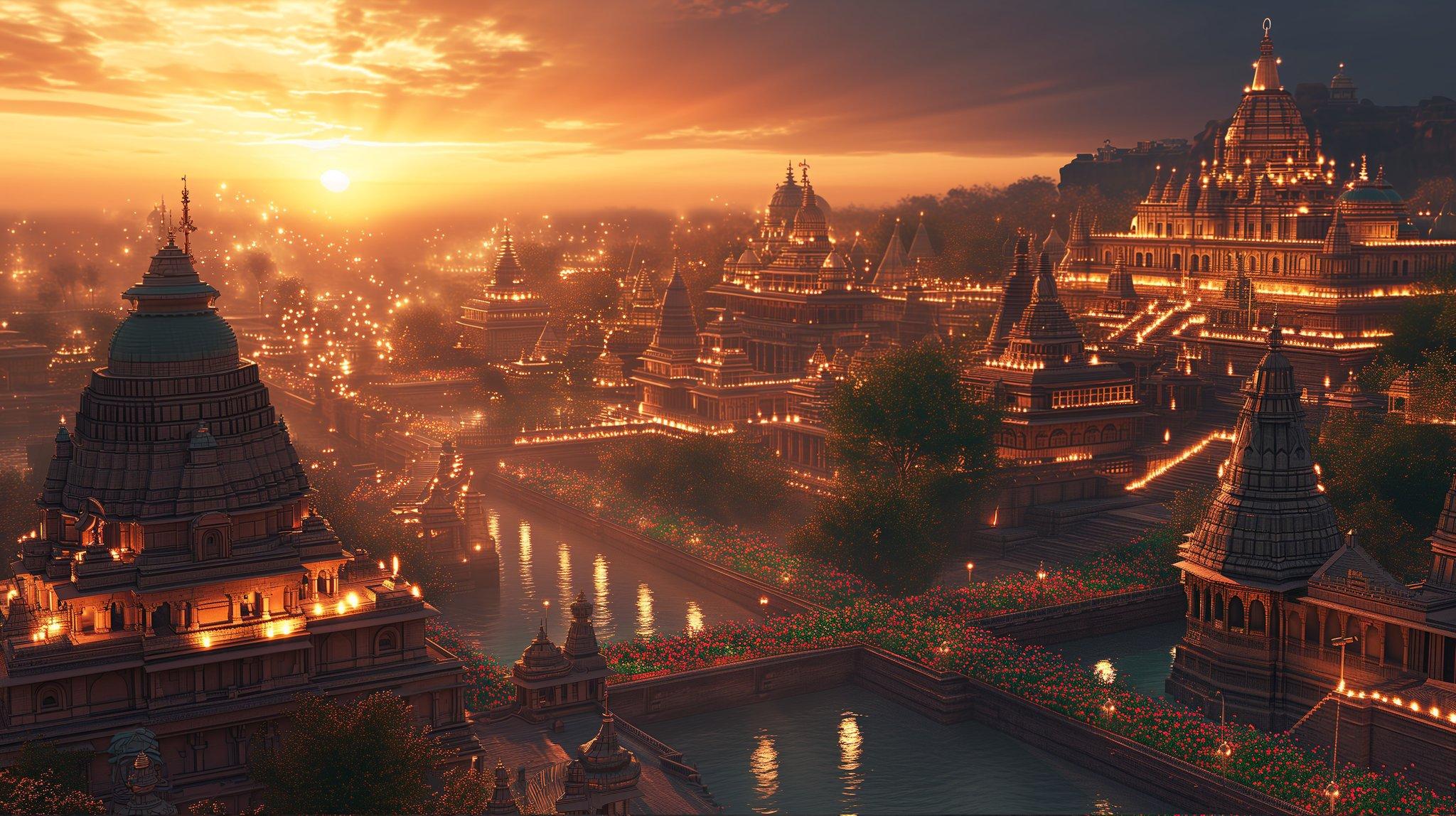
For thousands of years after that Sanatanis lived happily ever after until the barbarism of the envaders started to dent this civilization. Sanatan Civilization was subjucated with brutal force and barbarism but Sanatanis kept the fight alive.
AND
Many many years later, after 528 years of struggle and sacrifice (first destruction of Ram Mandir by Baqi Tashqandi, also known as Mir Baqi, on the order of Babur) Shree Ram Lala has came back once again.
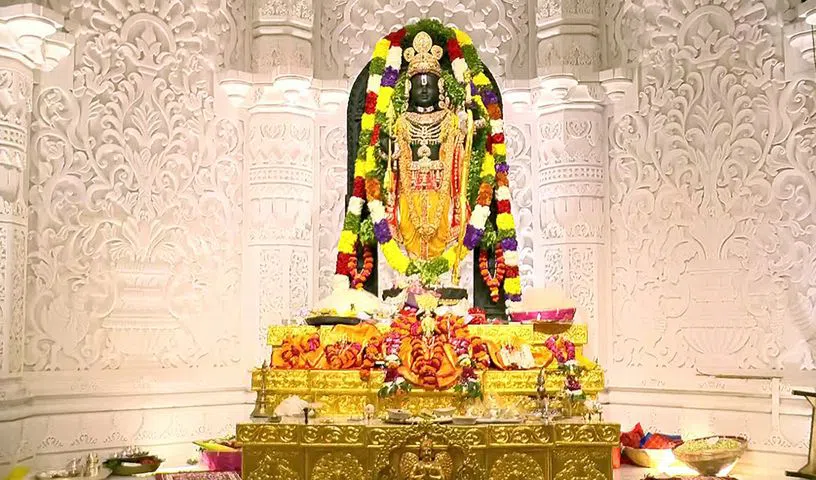
Jai Jai Shree Ram
Some morals that can be drawn from this Epic History of Ramayan
- Promise made in a hurry: Dasharath's impulsive promises to Kaikeyi highlight the potential downfall of making commitments without careful consideration.
- Envying and snatching rightful fruits: Kaikeyi's actions, driven by envy, result in the loss of love and respect from her own son, showcasing the consequences of coveting others' rightful achievements.
- Obedience to parents: Shree Ram's obedient acceptance of exile upon his father's command underscores the importance of obeying parents despite facing challenging circumstances.
- Love for siblings and respect for elders: The brothers' dedication to fulfilling their duties for each other, such as Laxman supporting Ram in exile and Bharat refusing the kingdom until ordered by Ram, reflects the importance of sibling loyalty and elder respect.
- Equality in humanity, not by birth: Ram's friendships with Hanuman, Sugriv, and Vibhishan emphasize that one's virtue, not their birth, determines their status in humanity.
- Victory of good over evil: The overarching theme of Ramayan, where ultimately, good deeds and righteousness prevail over evil forces.
- Preservation of Heritage: The struggles of the Sanatan Civilization and the return of Shree Ram Lala underscore the moral importance of preserving cultural heritage across generations.
- Importance of Boundaries: The 'Lakshman-Rekha' signifies the need for setting and respecting boundaries, emphasizing protection and trust in relationships. Sita crossing it serves as a cautionary tale, inviting trouble.
- Consequences of Anger: Ravana's extreme anger and desire for revenge lead to chaos and destruction, serving as a powerful reminder of the negative consequences of unchecked emotions.
- Courage in the Face of Challenges: Rama's courage in battling demons and facing challenges, ultimately defeating Ravana, teaches the value of resilience and bravery in overcoming adversity.
- Respect for Women: Shree Ram's determined efforts to save Sita, instead of opting for a local solution, exemplify the importance of respecting and protecting women.
- Fulfillment through Virtue: King Dasharatha's virtuous deeds to fulfill his desire for an heir showcase the significance of achieving goals through righteous actions.
- Sibling Loyalty: Lakshman's unwavering loyalty to Rama highlights the crucial role of standing by family members during challenging times.
- Demonstration of Patience and Resilience: Ramayan teaches the importance of patience and resilience, with good experiences testing individuals and bad experiences strengthening them.
- Political Leaders
- Art & Crafts
- Dance & Music
- Sanatan Dharma
- Education & Training
- Food & Drinks
- Gaming
- Health & Fitness
- Home & Gardening
- Literature & Culture
- Love
- Medicine & Ayurveda
- Motors & Vehicles
- Movies & Cinema
- Parenting
- Politics
- Science & Technology
- Shopping
- Social Media
- Spirituality
- Sports
- War & History
- Yoga & Meditation
- Travel & Tourism
- Natural Disaster
- Business & Startups
- DIY & Home Decor
- Finance
- Personal
- News
- Pet Lovers
- Wild Life & Nature
- Podcast & Audio Books
- Poetry
- Law & Order
- Moral Stories
- Jokes & Humour
- Other

